

The Cost of Travel in Croatia: My 2024 Budget Breakdown
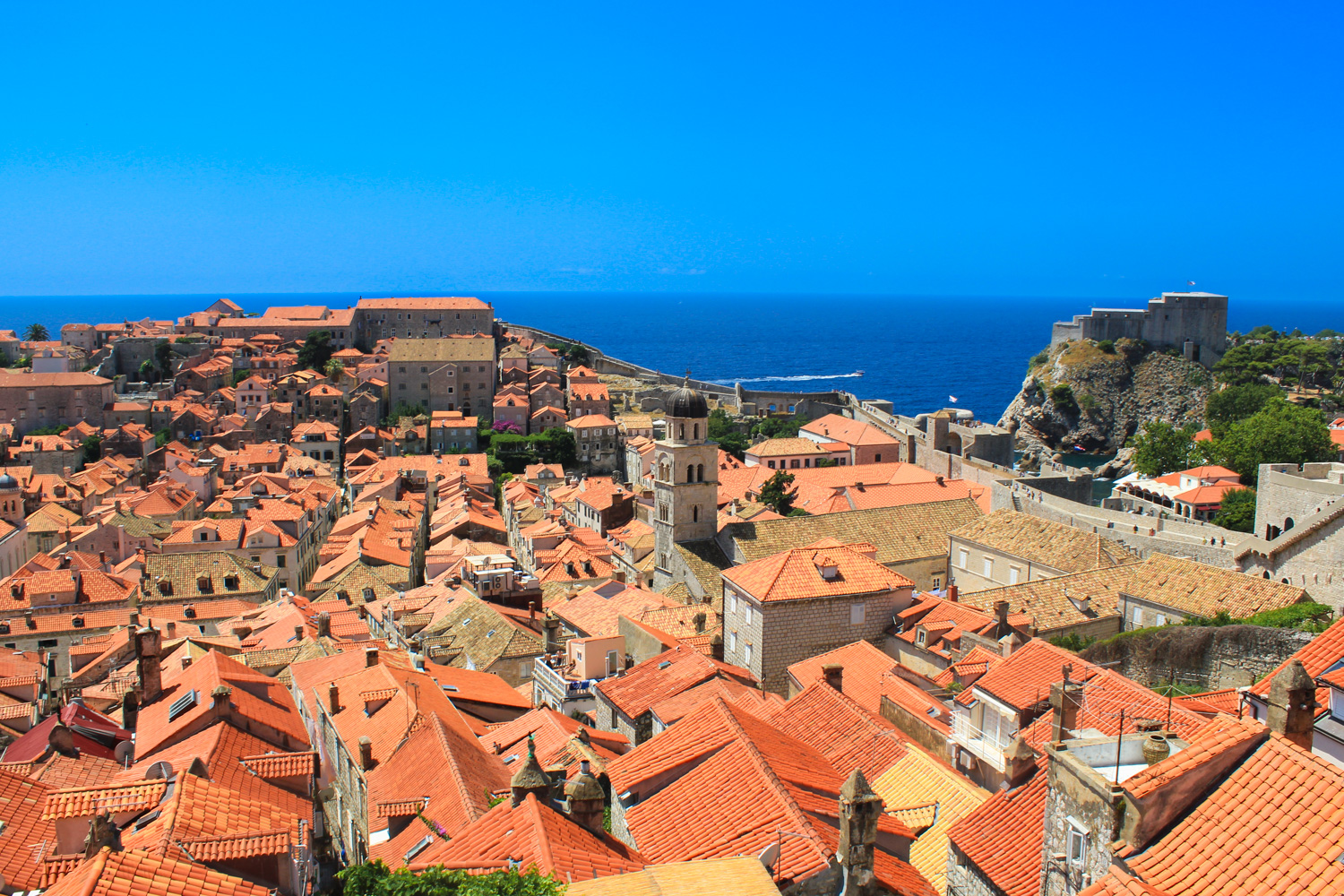
After 12 years of travel and over 90 countries, I’ve come to the conclusion that Croatia is one of the most underrated travel destinations on the planet.
I’m slightly biased, of course.
When I first decided to set off on my round-the-world adventure, I decided Croatia would be the very first country on my itinerary.
It was an unusual choice, I know. Most travellers set off for Bangkok, London, Sydney, or Beijing to kickstart their gap years, but something about Eastern Europe fascinated me. I wanted to explore some of the lesser-visited parts of the continent in which I was born, and Croatia sounded like the perfect place to start.
It’s since held a special place in my heart as the destination that helped me gain my travel footing, and I immediately fell deeply in love with it.
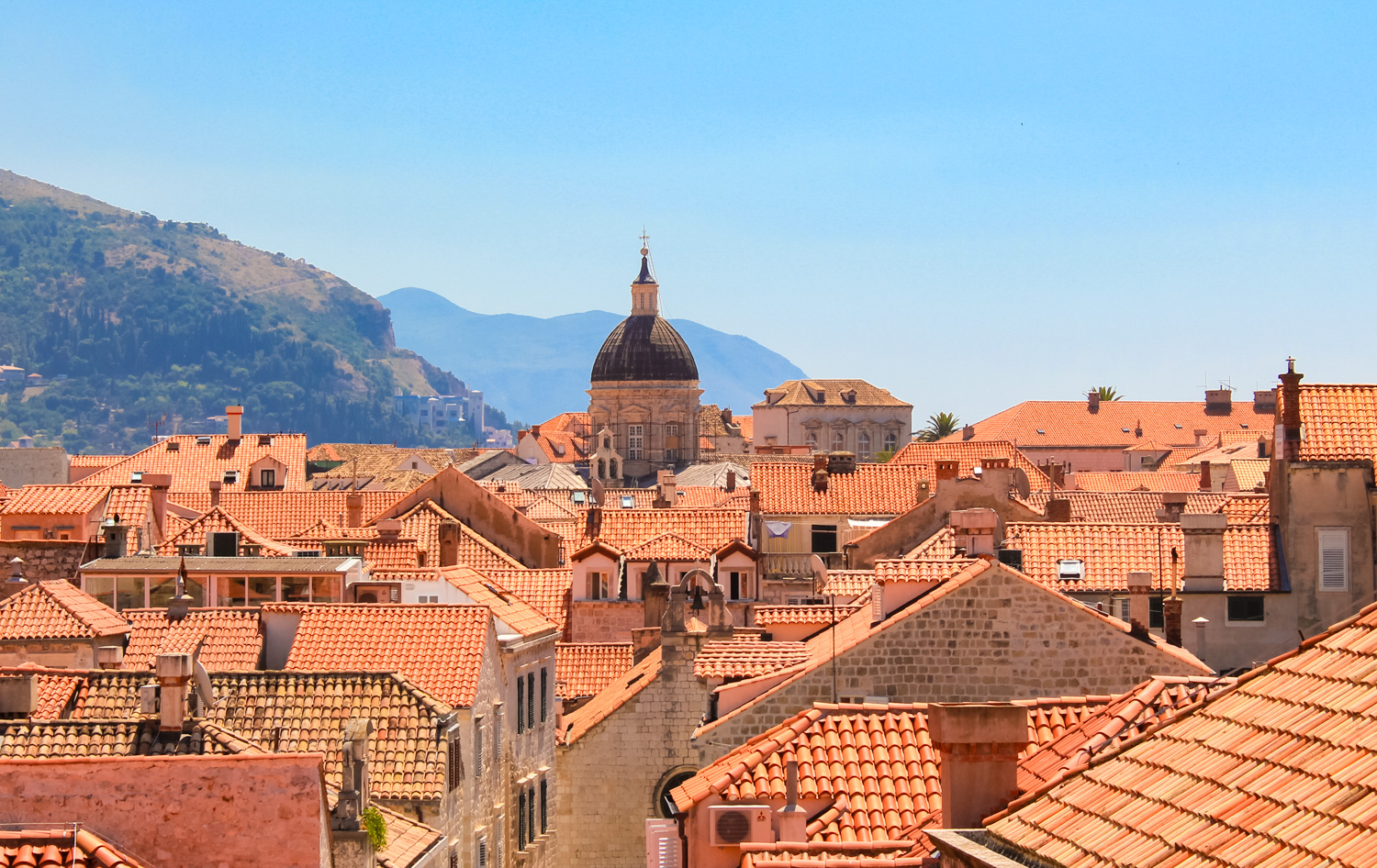
What’s not to love?
You’ve got gorgeous architecture to snap photos of, hundreds of islands to explore, the spectacular Plitvice National Park to wander around, underrated Zagreb for a city break, and some of the best beaches in the world. There are opportunities to sail the coastline, surprisingly fantastic cheese to eat, lovely locals, and so many beautiful landscapes that it’s hard to believe one country can offer up so much.
I originally planned to spend two weeks travelling around Croatia for my first visit, but after falling in love with the country, I quickly extended my stay to a full month. I hit up Dubrovnik, Split, Brac, Zadar, Pag, Zagreb, Plitvice, and Crikvenica over that time, and easily could have spent longer if I didn’t already have a flight to the other side of the world to catch.
I’ve since returned twice more to Croatia, and every time I do, I realise just how underrated a country it is.
I’ve been recording every single cent I spend in the countries I visit from day one of my travels because I want to prove that seeing the world is inexpensive and achievable. I want to be able to give a realistic and accurate look at how much you can expect to spend in each country you visit.
Today, it’s Croatia’s turn. I visited Croatia first of all as a solo backpacker, and then secondly and thirdly, as part of a couple on a mid-range budget. My costs have gone up during that time, both because my travel style changed and due to rising prices in general. Even so, as long as you’re not visiting in the height of peak season, Croatia still isn’t a crazy-expensive destination.
(As of the start of last year, Croatia adopted the Euro — not the Kuna — as its currency).
Here’s how much you can expect to spend on a trip to Croatia in 2024.
How to Save Money on Flights to/From Croatia
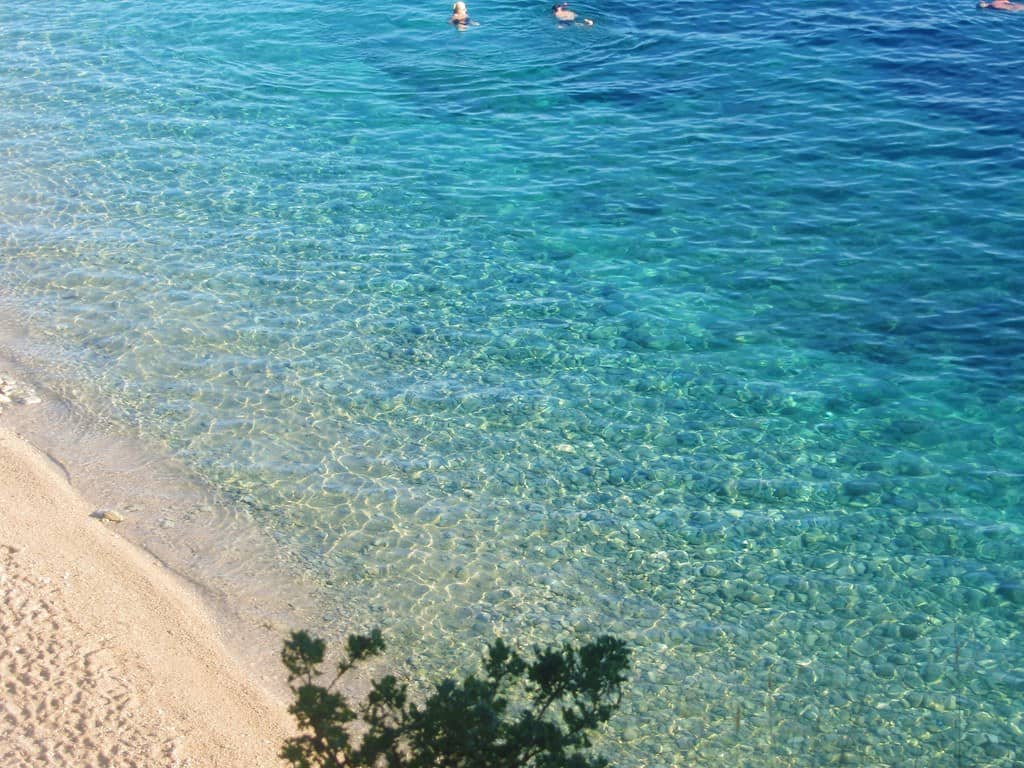
My European readers won’t have to worry too much about the cost of flights to Croatia, as the wide range of budget airlines means finding something affordable is never too much of a problem. As always, I recommend heading to Skyscanner to snag yourself a bargain.
If you’re flexible with dates and itinerary, you’ll find the best deals by searching to flights to “Croatia” rather than an individual city, as you may find it’s far cheaper to fly into Zagreb over Dubrovnik, for example. It’s also worth setting your flight departure date to be across an entire month, which you can do with Skyscanner . This will show you the cheapest dates to fly and ensure you have the very best deal possible.
In general, you’ll find that it’s cheapest to fly to Croatia outside of high season, which coincides with typical European summer vacation dates (late June to late August). May and September are the shoulder season months, and October to March is the official low season, where you’ll find the lowest prices.
If you do have the freedom to visit during shoulder season, I highly recommend it, as it’ll mean spending less on flights and accommodation while having to deal with fewer tourists. Shoulder season is my favourite time of year to travel, and it’s worth making the effort to do so in Croatia.
What if you’re not European?
Well, unfortunately, there are only a handful of direct flights between North America and Croatia — you can fly from Newark to Dubrovnik — but that doesn’t mean you’ll have to spend an enormous amount of cash in order to get there.
Fortunately, getting to Europe from North America is surprisingly cheap these days, and I wouldn’t expect you’d need to pay more than around $400 for a return ticket. Allow me to introduce you to one of my favourite websites in the world: Secret Flying ! I’d estimate that 80% of the flights I book these days are due to a deal I’ve found on Secret Flying.
Once you’ve booked your flight to Europe, you’ll need to figure out how to get to Croatia for cheap, but that’s when Skyscanner comes back in! Europe is full of cheap airlines and getting from country to country is nearly always easy and inexpensive.
How to Save Money on Accommodation in Croatia
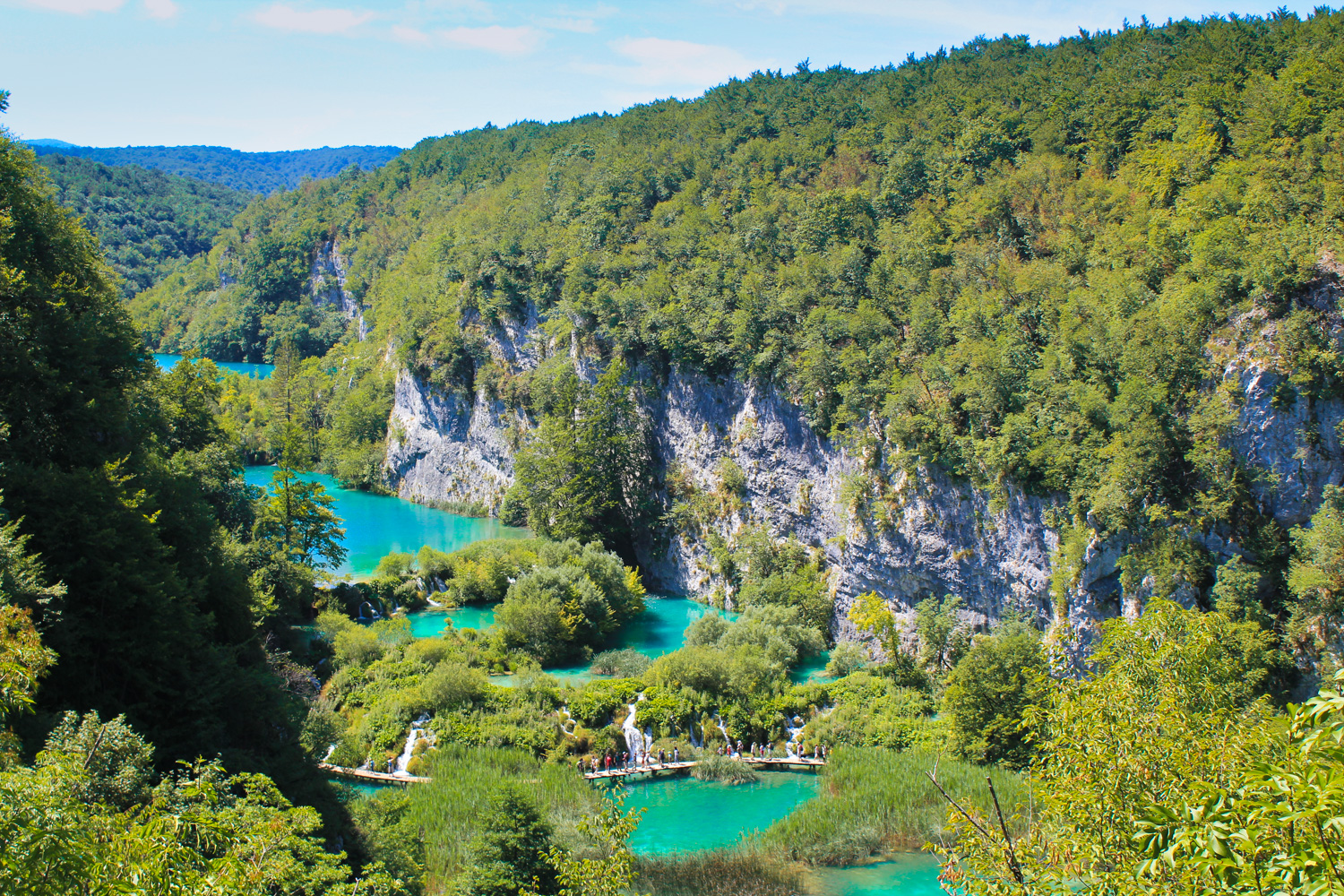
As always with travel, it’s possible to cut your accommodation costs down to zero if you have the time and patience to seek out an offer.
Free Accommodation
Couchsurfing exists in Croatia, and allows you to stay with a local for free, sleeping on their sofa and gaining their insight into life in their country. It’s not the most comfortable of living situations, but if your budget is tight, it’s worth sending out a few requests to hosts to see if anything comes of it. You can search for potential hosts on the site .
Housesitting is another option. This is where you’ll take care of somebody’s house for free while they’re away, and usually look after their pets, too. It’s best for long-term travellers or retirees as you can’t pick and choose dates and destinations, so you need to have a lot of flexibility as to where you go and at what time of year. If you do have that freedom, it’s a wonderful way to cut down your travel expenses, soak up some home comforts, and live like a local for a while — I’ve even have friends who have landed housesitting gigs in a castle! Trusted Housesitters is my favorite site for finding housesits — it’s definitely worth taking a look to see if any listings match with your dates.
And finally, if you’re travelling long-term and don’t mind getting your fingers dirty, you could look at WWOOFing or WorkAway as a way to cut down your costs while working on a farm in exchange for accommodation and food. It’s not the most glamorous of travel, but getting to live for free in a foreign country is an incredible experience, so if you’re backpacking around Europe, this may be the way forward for you.
Affordable Accommodation
I’m suspecting, though, that for most of you, you’re not interested in the free accommodation and just want somewhere clean, safe, and affordable to rest your head each night. If that’s the case, there are several options available for you.
The first of these are hostels . In Croatia, you’ll come across hostels all over the country, finding them on tiny islands, in large cities, and even in the national parks. They’re one of your best options for saving money.
Hostels in Croatia are slightly cheaper than equivalents in Western Europe, with the big exception being Dubrovnik over the summer, which is eye-wateringly expensive. You can expect to spend around €20-25 for a dorm bed in most spots in Croatia, with the price increasing to €30-40 a night on the popular islands, national parks, and more tourist-filled areas.
When it comes to private rooms in hostels, you can expect to spend around €60 a night for a clean, basic room in a good location, so if you’re travelling with friends or with your partner, you may find there’s not much in it if you’d prefer a little privacy over settling for two beds in a dorm room.
If you’re an older traveller and put off by the thought of nights spent in hostels, you shouldn’t be! Private rooms are usually very quiet and clean, and most hostels are modern, safe, and centrally located. They tend to have a little more personality than generic hotels, and the staff are fantastic at offering kickass travel advice. As long as you check the reviews of any hostel before booking it to make sure nobody refers to it as a party hostel, you’re all good to make a booking there.
I use HostelWorld to find the cheapest hostels, as they tend to have the greatest number of listings at the lowest prices.
And, of course, there are always hotels and apartments, which will usually cost around €70-€100 a night for a decent, clean, mid-range property in a central location in shoulder season. I always use Booking , as they have the most accommodation options for the cheapest prices.
The Best Hostels and Guesthouses in Croatia
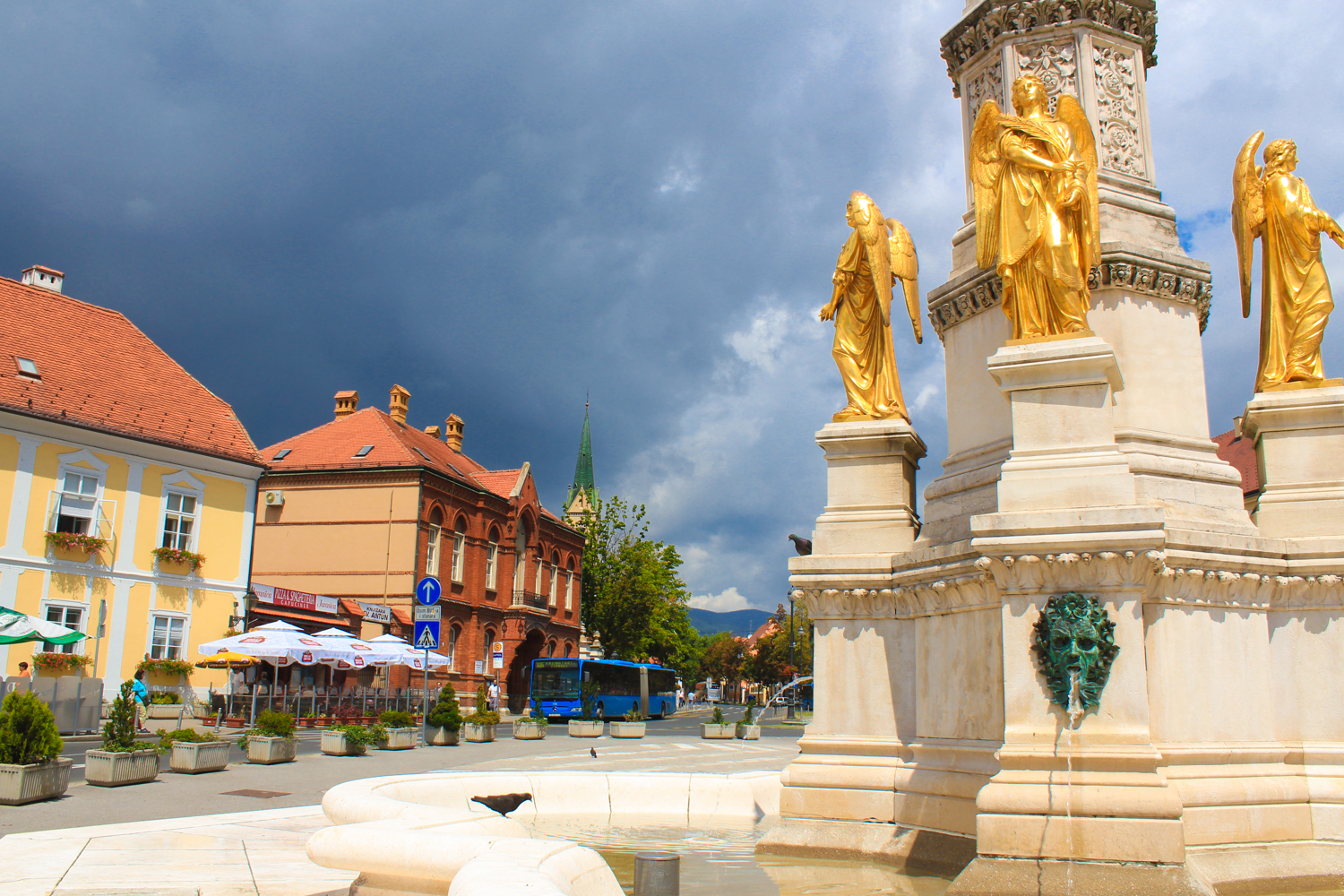
As I mentioned above, I’ve visited Croatia during various stages of my travel career, both as a solo backpacker who was travelling on a shoestring budget and as part of a couple that was looking for all things private and mid-range. I’ve learned a lot about how to travel affordably through this country in the process.
I always like to share which accommodation I stayed in on my travels, as well as recommend alternatives when mine sucked. Everywhere I recommend below has excellent reviews and offers great value for money. On my most recent two-week trip around Croatia, I followed this itinerary:
Dubrovnik: 3 nights Split: 3 nights Zadar: 3 nights Plitvice: 2 nights Zagreb: 3 nights
Here’s my list of my favourite accommodation options in Croatia, listed in Euros:
Dubrovnik — Apartments Sv.Jakov (€145 a night) : There’s two things you need to know about accommodation in Dubrovnik. The first is that it’s expensive, and the second is that staying inside the old town is extremely expensive. The good news is that Apartments Sv.Jakov solves both of those problems by being both affordable and accessible to the centre of town (a 15 minute walk from your room). But not only that, it also has one of the best views in the entire city and some of the best reviews of any property. Throw one of the friendliest owners in the country in the mix and you can see why I’m gushing its praises. This is an excellent option for Dubrovnik.
Split — Apartment Citadela (€110 a night) : Split is full of expensive hotels. In fact, you’ll struggle to find a stay in one for under €200 a night. I recommend Apartment Citadel because it’s half the price of the hotels, receives incredible reviews, and right in the heart of town — it’s a truly fantastic location! And you’ll have access to a kitchen, too, to help you save money on meals.
Zadar — Harvey’s Luxury Rooms (€55 a night) : This is a no-brainer when it comes to accommodation in Zadar! It’s inexpensive, in the centre of the old town, close to tons of excellent restaurants (I recommend Kantuna), and a super-accommodating owner. With some seriously nice furniture providing decoration in the rooms as an added bonus, you really can’t go wrong.
Plitvice Lakes National Park — Lake House (€55 a night) : I loved both of my stays at Lake House in Plitvice Lakes National Park and have sent so many of my readers there since visiting! I chose this place because it’s easily the best-rated accommodation that’s close to the park, and it’s pretty affordable too. It didn’t disappoint. You’ll likely spend most of your time walking in the park, but when you’re at the house, you’ll be greeted by lovely staff, presented with a filling breakfast, and marvel at the fresh air. That’s one of my lasting memories of the area Lake House is in: how peaceful the surroundings were, and how healing the clean air felt.
Zagreb — Embassy Row B&B (€160 a night) : It’s rare to check out the reviews of accommodation and find yourself greeted with a wall of 10 out of 10s, but that’s exactly what drew me to Embassy Row B&B. If there’s a better spot in Zagreb, I’d be seriously surprised. What I love about this place is the lavish, fresh breakfast, the great location, and the wonderful owner. Nadia is kind, friendly, welcoming, and only too eager to give recommendations on how to make the most of your time in the city. I wouldn’t consider staying anywhere else.
How to Save Money on Transportation in Croatia
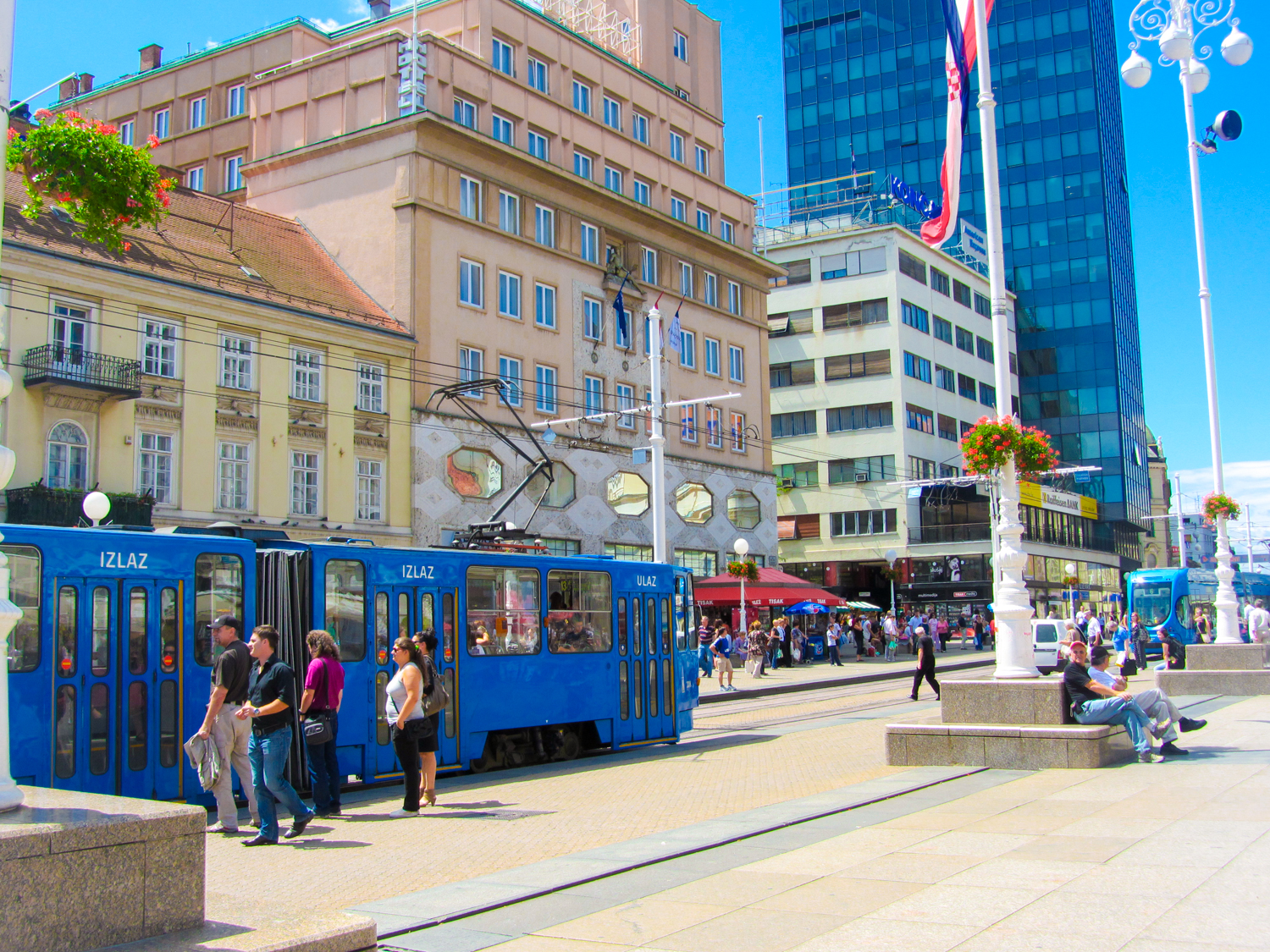
Transportation is fairly inexpensive in Croatia, so you won’t need to worry about it upping your travel budget by too much. The best, easiest, and cheapest way to travel around the country is by bus or ferry.
Domestic buses will take you pretty to much anywhere you need them to, and are fast, comfortable, and modern. You can expect your ride to come with power sockets and Wi-Fi, air conditioning, and large, spacious seats, making it a no-brainer to go for the bus over anything else.
If you book your bus tickets in advance through Arriva , you can save 5% on the price of your ticket by using the app, and not have to worry about the bus being full.
If you’re anything like me, though, you can’t imagine visiting Croatia and not spending time on some of its gorgeous islands (my personal favourites are Brac and Pag). In this case, you’re going to want to hop on a ferry to get from the mainland to paradise. You can find a map of the ferry routes on CroatiaFerries — and most ferries run at least once a day in peak season.
Keep in mind that if you’re going to be renting a car in Croatia, you’ll pay quite a bit extra to take it on the ferries, so it may work out cheaper for you to find somewhere to park for free before heading to the islands on foot. On average, you can expect to pay €15-20 a day to hire a small car in Croatia depending on the time of year and where you collect it from.
When it comes to hiring a car to drive around Croatia, you shouldn’t feel intimidated. Even my parents managed a two-week road trip around the country without any hassle, and said it was a far more peaceful experience than driving in nearby Italy! I always hire a car through Discover Cars : a comparison search engine that brings up the best deals from all the popular providers; I always seem to score the cheapest deals through their site!
As always, you’ll have far more independence if you decide to drive through Croatia, as you’ll be able to stop off whenever you feel like it, take detours to tiny villages, and stop at spectacular viewpoints to take photos whenever you want. This is a country that rewards those who venture off the beaten track, and hiring a car is the easiest way to do so.
Parking is going to be your main issue when it comes to driving in Croatia. Many of the popular tourist destinations are pedestrianised, so you may find yourself driving around for half an hour in search of a parking space. If you’re happy to park up at your accommodation and then take public transport or walk, you’ll have a much easier time of it.
You can also hire scooters in Croatia, so if you’re competent on two wheels, you may want to opt for this instead! You’ll pay less to hire them and won’t find parking as difficult either.
Flying is typically expensive and time-consuming, so you’ll want to skip out on that if at all possible. You’ll save money and see a lot more of the country by travelling overland.
Here are some of the typical transportation costs you can expect to run into while in Croatia:
- Bus from Dubrovnik to Split: €22,10
- Bus from Zagreb to Zadar: €11,90
- Bus from Zagreb to Plitvice Lakes: €14,90
- Bus from Zagreb to Pula: €26,20
- Ferry from Dubrovnik to Hvar: €45
- Ferry from Dubrovnik to Brac: €45
- Ferry from Split to Brac: €20
How to Save Money on Food in Croatia
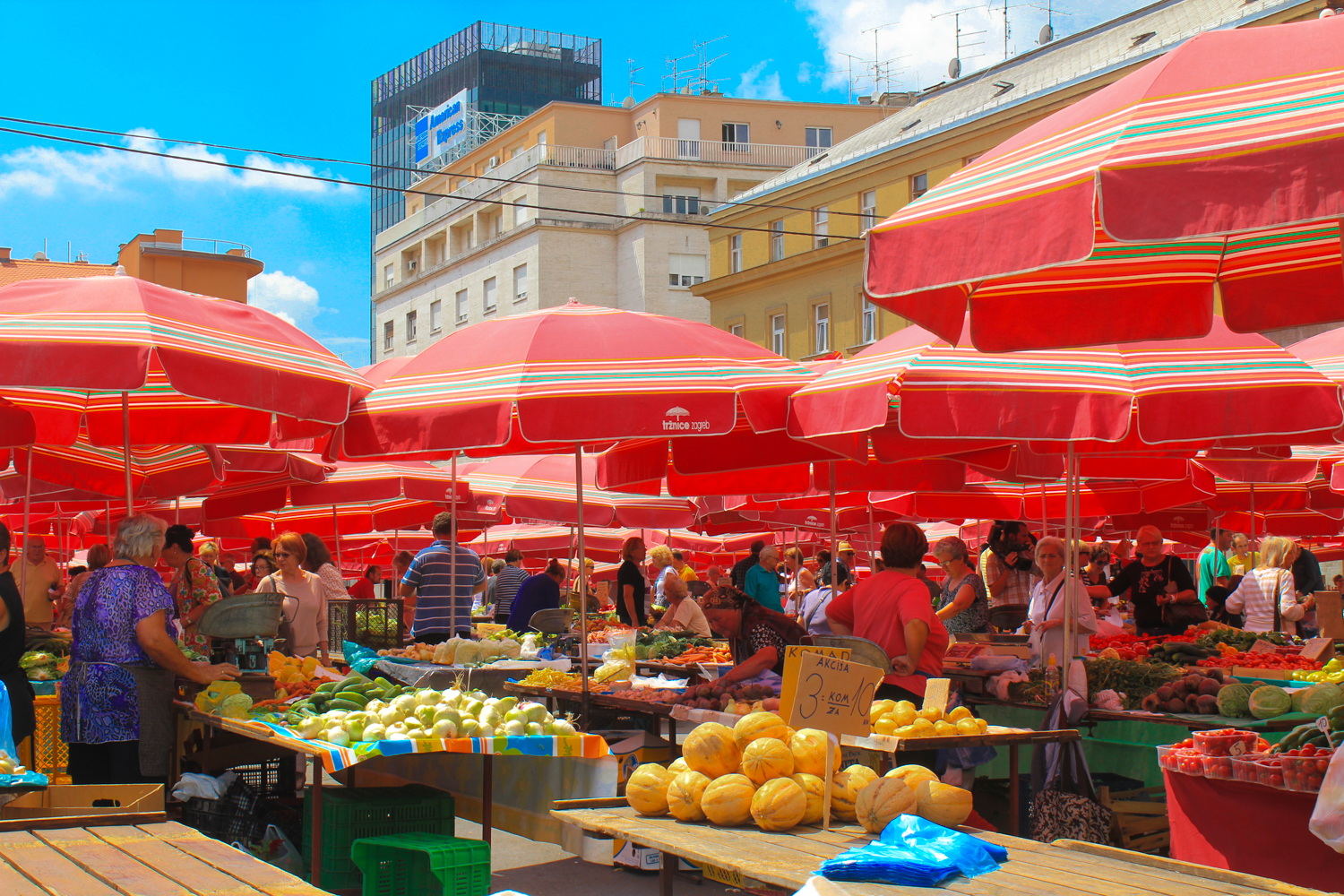
Food can be expensive in Croatia, but there are plenty of ways to cut costs while you travel around this beautiful country.
Cooking is always going to be more affordable than eating out, so if you’re willing to sacrifice some restaurant meals on your vacation, this is a great way to keep on track with your budget. Hostels will usually give you access to a shared kitchen, and if you’re opting for an apartment, check that it has a kitchen and at least basic cooking facilities. If that’s the case, you can head to a local market (a great cultural experience) and stock up on fish, vegetables, and fruits, to spend far less on your meals than you would at a restaurant.
Many hotels offer free or discounted breakfasts, so if that’s the case, I always recommend eating later in the morning and eating a lot of food, as you may find you’re too full to have lunch. If that’s not the case, then I recommend going for a larger lunch and a smaller dinner.
Most restaurants charge less for their lunch menus, even though they’re serving the exact same meal for lunch and dinner. If you can eat a bigger meal for lunch, you can then get by with a much smaller one for dinner and save money through doing so.
In general, you should expect to spend the following on each meal:
Breakfast: €6.50 each for bacon and eggs; €9-11 each for something in a hipster cafe.
What can you expect from breakfasts in Croatia? If you’re looking for something cheap and simple, you can’t go wrong with pašteta (pate) on bread. Bread and spreads are commonplace in the country, whether it’s margarine, the aforementioned pate, cheese, jam or Nutella. Often, these will be accompanied by cold cuts of meat, such as ham, prosciutto, and salami.
In cafes, you’ll regularly be able to pick up some burek, a savoury pastry containing meat, cheese, or vegetables. Pair it with a serving of yoghurt and you’ve got yourself a traditional Croatian breakfast!
Beyond that, you’ll be able to find those standard omelettes, oatmeal, full English breakfasts, and croissants that you can get across the continent, either served up in your accommodation or up for grabs in a cafe in town.
Lunch: €7 each for a sandwich/slice of pizza from a deli with a soft drink
Lunches in Croatia can be delicious and large. Croatians prefer to have a larger meal for lunch and a smaller portion of food for dinner, so loosen up those waistbands and prepare yourself for a true feast! You’ll typically kick things off with some soup to start, then follow that up with some slow-roasted meat, which is practically guaranteed to be so tender that it’s falling off the bone, accompanied by potatoes and vegetables.
Dinner: €15 each if you’re on a budget, €25 each for a mid-range restaurant, €50+ each for something higher-end.
One thing to keep in mind is that you’ll often be given freshly-baked bread, olive oil, and balsamic vinegar with lunches and dinner in Croatia, so you should aim to take full advantage of this. Seriously — this was one of my culinary highlights from Croatia. Most of the time it was free with the meal and so ridiculously tasty.
What about tipping? In most restaurants you’ll frequent, tipping will be welcome but not in any way expected. So don’t panic — it isn’t seen as offensive if you don’t tip! And likewise, it won’t be viewed as offensive if you do. Expect to pay 10-15% in any fancy restaurants you head to, but anything laidback and local won’t require you to pay extra.
I don’t often have much success with this suggestion, but I do recommend keeping an eye on your drink consumption while travelling in Croatia. Alcohol is obviously a big budget buster on the road (and Croatian wines can be quite pricey in restaurants), so if you’re happy to substitute the sodas, juices, and booze for tap water, you’ll save a ton of money. And yes, the tap water is free and safe to drink in Croatia, so you really don’t need to worry about buying bottled water.
If you’re determined to jump headfirst into the Croatian food scene and don’t want to spend your vacation cooking, you should look to eat at the konobas and pizzerias as opposed to the fancier restaurants.
Konobas are small family-run restaurants that offer big dishes and low prices, and sometimes even family-made wine. If in doubt, avoid anywhere with white tablecloths and a big English menu outside, because that means it’s set up for tourists and charging more. Delis are great options for lunches, as they offer sandwiches for low prices.
You can always ask the locals for food recommendations, too! Ask at your accommodation for recommendations on the best budget eats, or simply walk around and see which restaurants are full of locals. In the case of the more tourist-filled cities, like Dubrovnik, you’ll find that just walking a couple of blocks outside of the Old Town is all you need to do to find cheaper prices in restaurants.
Here are some typical prices of food and drink in Croatia to help you budget better:
- Pint of draught beer: €3-5
- A bottle of house wine in a restaurant: €23-50
- A slice of pizza: €2.50-5
- Sandwich from a deli for lunch: €3-5
- A 30 cm pizza for dinner: €8-15
- Seafood dish in a fancy restaurant: €30-50
- Cappuccino in an expat area of town: €2-3
- Litre of milk: €1-1.50
- A loaf of bread: €1.50-2.50
- 10 eggs: €2.50-3.50
- 1 kilogram of tomatoes: €2-3.50
- 1 kilogram of potatoes: €0.80-1.40
- A 1.5l bottle of water: €0.90
- A risotto for lunch: €12-20
- A steak dinner: €20-30
- Famous Croatian lamb from the spit: €15-30
- A gyros for lunch: €5-8
- A local meal from a konobos for dinner with wine: €20-35 each
- A three course meal and wine in a high-end restaurant in Dubrovnik: €70-100+
How to Save Money on Activities in Croatia
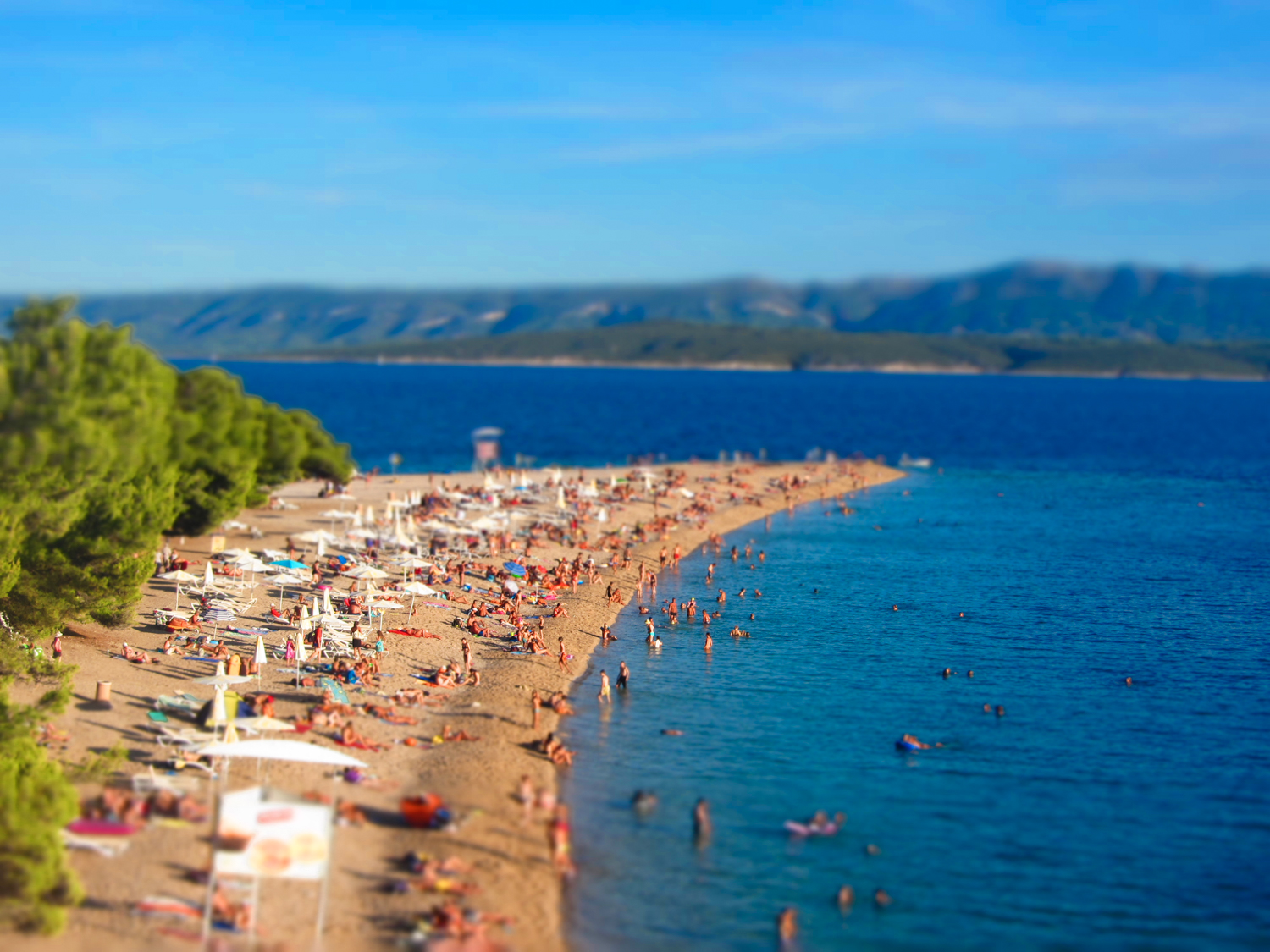
We’ve covered accommodation, transportation, and food, but let’s face it: you’re not going to have the trip of a lifetime if you skip out on entrance fees and activities! Here’s a detailed breakdown of some of the costs you’re likely to encounter while travelling around Croatia. Note that prices for many attractions go up a lot during peak season: I’ve given a range where that’s the case.
- Walking the city walls in Dubrovnik: € 15-35
- Entrance to Plitvice Lakes National Park: € 10-40
- Entrance to Krka Waterfalls National Park: € 7-40
- A Game of Thrones-themed walking tour in Dubrovnik: € 25
- Entrance to Pula’s amphitheatre : € 10
- Sea kayak tour at sunset with snack and wine in Dubrovnik: € 45
- A day trip to Montenegro from Dubrovnik: € 60
- Skip-the-line entrance to the Museum of Broken Relationships in Zagreb: € 7
If you’re in Split for a few days, be sure to grab a free SplitCard from a tourist information centre. Visitors staying five or more nights in summer, or two or more nights in winter, are entitled to the card for free, and get discounts on everything from museums and galleries to excursions and restaurants.
If some of the above prices are just too much, there are plenty of free activities in Croatia as well. I know that I had a fantastic time simply wandering through the old towns, exploring local markets, sunbathing on beaches, and making the most of the museums that don’t charge for entrance.
While, for example, you’ll get a great view of Dubrovnik by walking the city walls, you could be just as satisfied by walking the streets of the old town, as it’s as beautiful from the ground as it is from above. If you love beaches, you’ll save money on activities by lounging out on the sand/pebbles rather than jumping on a banana boat or hiring some snorkelling gear.
Markets are always a great way to get a taste of the local culture without spending any money, and simply heading out for a stroll through some of the more local neighbourhoods will introduce you to lesser-visited parts of the country. Yes, if you’re looking to save money on activities, my biggest recommendation is to walk everywhere — Croatia is so beautiful that there’s always something wonderful to see.
If, like me, you love taking tours to get to know a country better, I recommend heading to Get Your Guide for inspiration — it’s where I book all of the tours I take. They have a whole range of activities and tours available, like day trips to Bosnia ( € 82 ) or Slovenia ( € 120 ) to boost your country count, a Game of Thrones tour in Split ( € 35 ), and an island-hopping trip to five Croatian islands ( € 105 ).
Miscellaneous Items to Buy for a Trip to Croatia
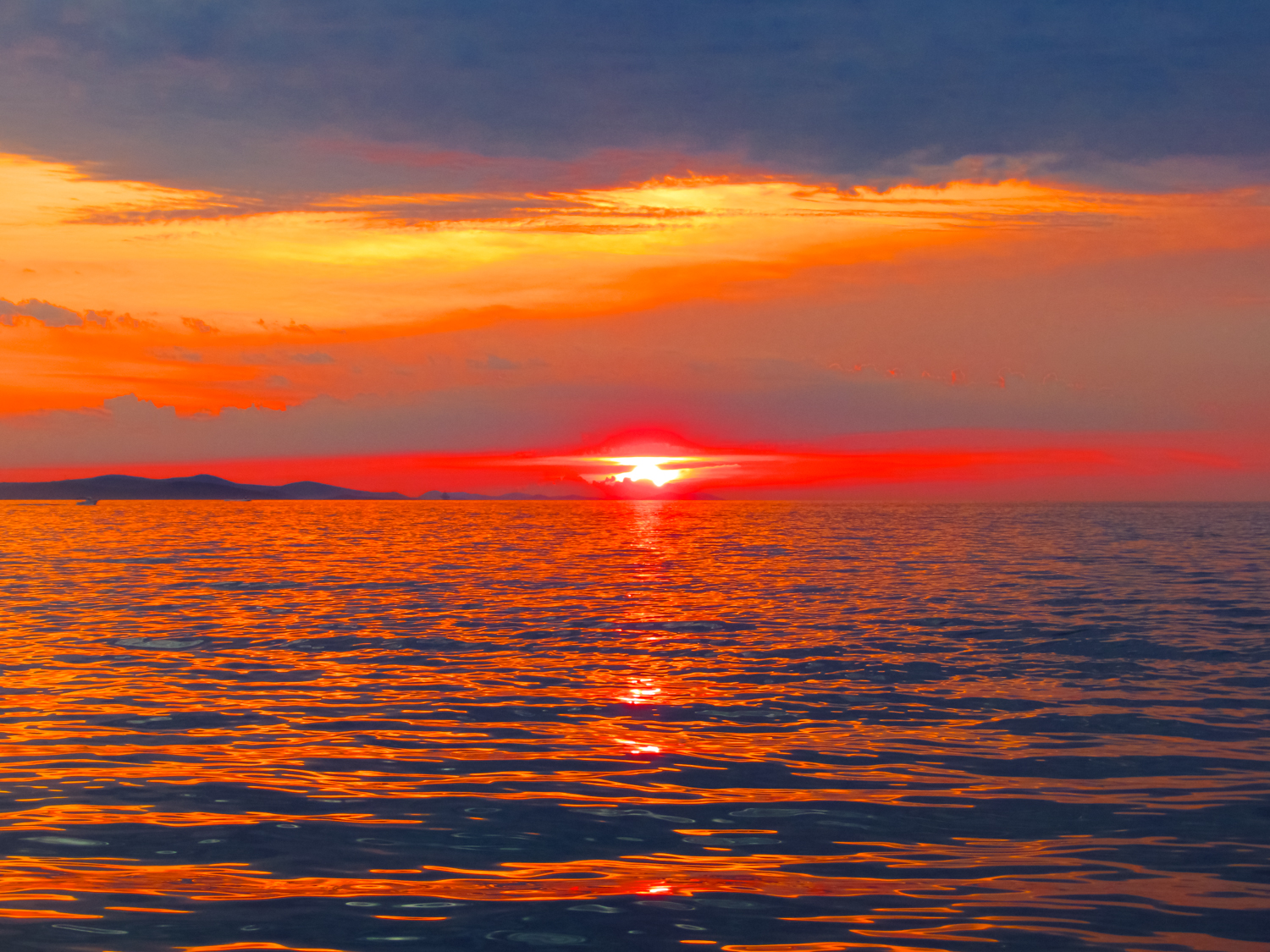
A Croatia guidebook : A guidebook will give you an in-depth look into Croatia’s culture, suggest the perfect itineraries for the amount of time you have, and offer recommendations for where to eat and what’s worth doing. I like Lonely Planet guidebooks, and have a wide selection sitting in my bookcase as I write this!
A dry bag : Croatia is all about the water, so I highly recommend packing a dry bag to take with you. A dry bag has saved me while travelling on so many occasions:
- On a kayaking trip from Koh Yao Noi to Koh Nok, a freak wave splashed over me, as well as my camera and phone. Had I not had them in a dry bag, the water damage would have likely destroyed them.
- On a ferry ride in Thailand, the boat sprung a leak and began to sink. I was able to put my laptop, camera, hard drive, passport, and money in my dry bag, seal it up, and know that they’d stay safe and dry if the worst were to happen.
- I chartered a yacht in Greece and relied heavily on my dry bag while I was there. When mooring in tiny bays, I was able to fill my dry bag with my camera, towel, and sunscreen, jump in the sea, and swim to the nearest empty beach without worrying about keeping my belongings dry.
- I also think dry bags are fantastic for solo travellers on beach days. It’s tough going to the beach when you’re travelling alone because you’ll need to bring nothing with you, risk getting robbed while you’re in the ocean, or stay on the sand at all times. If you have a dry bag, you can fill it up with your valuables and take it for a swim with you, rather than leaving them on your towel and hoping nobody will grab them.
I love all things Sea to Summit, and after trying several of their dry bags out, my champion is the Ultra-Sil 8L — it’s durable, thin, lightweight, and has never let me down.
Travel insurance: If you’ve read any other posts on Never Ending Footsteps, you’ll know that I’m a great believer in travelling with travel insurance. I’ve seen far too many Go Fund Me campaigns from destitute backpackers that are unexpectedly stranded in a foreign country after a scooter accident/being attacked/breaking a leg with no way of getting home or paying for their healthcare. These costs can quickly land you with a six-figure bill to pay at the end of it.
In short, if you can’t afford travel insurance, you can’t afford to travel.
Travel insurance will cover you if your flight is cancelled and you need to book a new one, if your luggage gets lost and you need to replace your belongings, if you suddenly get struck down by appendicitis and have to be hospitalised, or discover a family member has died and you need to get home immediately. If you fall seriously ill, your insurance will cover the costs to fly you home to receive medical treatment.
I use SafetyWing as my travel insurance provider, and recommend them for trips to Croatia. Firstly, they’re one of the few companies out there who will actually cover you if you contract COVID-19. On top of that, they provide worldwide coverage, don’t require you to have a return ticket, and even allow you to buy coverage after you’ve left home. If you’re on a long-term trip, you can pay monthly instead of up-front, and can cancel at any time. Finally, they’re way cheaper than the competition, and have a clear, easy-to-understand pricing structure, which is always appreciated.
With SafetyWing, you’ll pay €1.50 a day for travel insurance.
SIM cards and eSIMs : Assuming that you’re like me and want to have a working phone as soon as you arrive (did you even go to Dubrovnik if you can’t send photos of it to everyone you know?), you’ll want to buy an eSIM before leaving home.
I use aloSIM these days: prices are good and I’ve found their speeds to be faster than the other companies I’ve used. It costs $15 (€14) for 5GB of data that lasts a month, or $24 (€22) for 10GB, and you get a 5% discount by using the code FOOTSTEPS.
If your phone can’t use eSIMs, a tourist SIM card with unlimited data from T-HT costs €10 for ten days. If you’re staying longer, a card with 70GB of data that lasts for a month is €11.95 . You’ll need to find a phone store in whichever city you arrive in to buy them, though: they’re not available at the airports.
Don’t forget that if you live in another EU country, you should be able to roam for free with your normal phone company.
How Much it Costs to Travel in Croatia

I always like to share my own personal expenses when travelling in a country, as I think it helps you figure out what you should be expecting to pay each day while you’re there. A list of expenses is great and helpful, of course, but putting them all together in order to come up with a reasonable estimate can be trickier.
Because prices have risen recently in Croatia, I’m only using the costs from my most recent trip. Here’s what I spent!
Accommodation: €109 per day (shared between two = €54.50 each) Transportation: €9 per day Food: €34 per day Activities: €36 per day
My average daily cost of travel in Croatia is therefore: €133.50 per day .
Related Articles on Croatia 🧳 How to Pack for a Trip to Croatia ☀️ 30 Incredible Things to Do in Dubrovnik, Croatia 🇭🇷 20 Best Things to Do in Zagreb, Croatia
How useful was this post?
Click on a star to rate it!
Average rating 4 / 5. Vote count: 4
No votes so far! Be the first to rate this post.
Thanks so much!
You can follow along on my travels through my social media accounts below
Sorry you didn't find this article useful!
Help me improve it by leaving your comments below
All feedback is anonymous and emailed directly to me. If there's anything I can do to improve the quality of this article, please do let me know and I'll make the suggested changes within 24 hours
Lauren Juliff
Lauren Juliff is a published author and travel expert who founded Never Ending Footsteps in 2011. She has spent over 12 years travelling the world, sharing in-depth advice from more than 100 countries across six continents. Lauren's travel advice has been featured in publications like the BBC, Wall Street Journal, USA Today, and Cosmopolitan, and her work is read by 200,000 readers each month. Her travel memoir can be found in bookstores across the planet.
Related Posts

The Cost of Travel in Mauritius: My Detailed Budget Breakdown

The Cost of Travel in Thailand: My Detailed Budget Breakdown

2023: My Travels in Review

The Cost of Travel in South Korea: My 2024 Budget Breakdown

What’s it Like to Travel in Liechtenstein?

What to Take On the Camino Primitivo: My Detailed Packing List
84 comments.
Dude, this guide is fantastic!
If I were there, I would have a really hard time leaving! I understand why you extended your initial trip by a few weeks.
Right?! The longer I spent in Croatia, the more I wanted to see. You could spend months just travelling up and down the coastline.
Hello! I do not think that this is nice: ‘I usually recommend not staying in an entire Airbnb apartment’. You should know, that most of the people on the coast and on the Islands, live from renting apartments, from 30 euro and up and also, when you stay in apartment you can save a lot of money for food (not 23 euro a day for shore). So you help local people and you save money at the same time. 😊
Wish you a nice day. Valentina
Airbnb is destroying cities and towns around the world, and having seen this destruction first hand, I am not comfortable recommending my readers to stay in Airbnb apartments. You help the locals who own properties, sure, but you fuck over everybody else who now can’t afford to pay rent because everything in their town is now an expensive Airbnb apartment. It raises the prices of accommodation for locals.
So sorry, I believe staying in Airbnb apartments is an unethical practice and I don’t support it. Do you own an Airbnb apartment?
Thanks Kris! :)
I wasn’t sure about visiting Croatia later this year, but the photos in this post now have me convinced! It looks like a very beautiful country. One small suggestion I have is that it would be useful if you could share some of the costs of food and drink so that we can create a travel budget with more ease. Appreciate all of your tips in this very useful post.
That’s a great suggestion, Kimme! My posts are always a work in progress, so I love receiving feedback on how they can be improved. I’ll get working on that today :-)
Great advice! My question to you is where would you recommend going in Croatia if you had just two weeks in August and a small budget? Thank you
Hmmm. If it was me, I’d do the following:
3 nights in Zagreb 2 nights in Plitvice 3 nights in Zadar 3 nights in Split 3 nights in Brac
And then back to Split to fly out. I’d avoid both Dubrovnik and Hvar as they’re going to be very expensive over summer.
Wow! Holy Moly. It’s my dream to see a landscape like the ones you’ve shared in this post. I haven’t been to Europe before (I live in the USA) so I have other countries at the top of my bucket list before Croatia but this is making me think I need to visit Croatia too. There’s too many places in this world to see!
I definitely understand that, Sheryll. But while Western Europe often receives all of the glory, there are parts of Eastern Europe that are just as beautiful. I hope you make it to both sometime soon :-)
Well I was so pleased with my Italian Lake photos until I saw these!!! Awesome
Thanks, Dad! :-)
Hi! I will be there in Croatia in the middle of August. Appreciated this guide as it helped me understand how much I will spend when there. Should I not go to Dubrovnik in August because it will be busy/costly?
Kind regards
Hmmm. Well, I really liked Dubrovnik, but it was packed in the summer months! It’s a beautiful spot and there’s a reason why it’s so popular with cruise ships and tourists, but you have to weigh up whether that beauty is worth spending a lot of money and dealing with a ton of crowds. If you can afford it, go for it. If you’re worried about the costs, choose to go somewhere like Split instead.
Wow, easily the best guide to Croatia I’ve seen today. Thank you for putting all of this information together, very useful. I plan to visit Croatia in April so I’m releaved to see it won’t be too expensive at that time of year.
Thank you so much, Ofelia! That means a lot. I hope you have a wonderful trip :-)
Really appreciated that you included everything in this post, Lauren. I’ve just bought the dry bag you recommended, as it sounds like a lifesaver!! Any thoughts on yacht week in Croatia? Costs, etc?
Thanks Jordan :-) I actually have a couple of friends who did yacht week in Croatia and they said that if you’re not really into partying it’s not a great option. They’re definitely pretty chill and found they didn’t really vibe with the people on their boat who were all about drinking and hooking up.
In terms of costs, well, I haven’t actually done it myself, but from a quick look online, it looks like it’ll cost around $4,000 for the yacht for a week, although you’ll be splitting that with a bunch of people, so it might not work out to be that expensive.
Hope you have a great trip if you do decide to go. You’ll have to let me know what Yacht Week is like!
Amazing photos. This was a really helpful post for my upcoming trip and I’ll be sure to stay at some of the guesthouses you recommend too.
No problem! Glad you found it useful :-) Have an amazing trip!
Wonderful post, Lauren, coming from a Croatian. I wonder though have you visited islands like Hvar or Brač and checked their beautiful sunsets. Btw, I’m impressed with your knowledge about places you visit and some details that even I wasn’t aware of. You’ve done your homework, girl!
Thanks Mimo!
I spent a few days in Brac, and also visited Pag too. Didn’t get a chance to see many sunsets there though!
WE LOVE CROATIA! Great post Lauren. Covers everything I could say and more about the cost of travel in Croatia. Cracking read. Great. We celebrated our 10 year wedding anniversary in Split and have been returning every two years ever since. Love it. If anyone’s reading this and debating whether to go or not, I say do it! One of my favorite countries.
Wow, what a recommendation! Split sounds would be a pretty perfect place to celebrate an anniversary.
YES! I love Croatia and I love this post, Lauren. I agree that it’s more expensive than other countries in the Balkans, but it’s still a lot cheaper than countries in Western Europe. One thing I couldn’t believe was how expensive it was to walk the city walls in Dubrovnik. Not worth the money imo.
Yeah, seriously. Dubrovnik as a whole can be pretty over-the-top expensive — it was a bit of a shock to the system when I landed on my first day of my big trip and was like whoa, my money is not going to last as long as I thought . Fortunately, everywhere else in Croatia was much more affordable, and let’s face it: Dubrovnik is pretty special, so it’s worth the expense to a lot of people.
OMG I really can’t wait to get to Croatia etc one day – so awesome hun =)
You’d love it here!
This has me looking at flights to Croatia based on those stunning photos alone! I’m a mega GoTs fan so the fact that you mentioned all of those tours is so exciting. I’d love to see all of the filming locations, and then the beautiful beaches will just top it all off nicely.
You know I haven’t ever watched Game of Thrones before? A big oversight of mine! But I know that my friends who love the show have had so much fun geeking out over all the filming locations in Dubrovnik and Split. I hope you decide to book a flight to Croatia!
So many great tips in this article. You’ve made planning this trip so much easier. I now feel like I can visit Croatia on the cheap while retaining some comfort levels. Looking forward to trying to food after you have sold it so well. Thanks.
Hey, thanks so much! Enjoy all of that fresh and tasty seafood for me :-)
I really didn’t know much about Croatia until I stumbled across this post. Fantastic! You’re really selling it to your readers and now I’m trying to work out if I can squeeze in a visit before the end of summer.
Ooh, I hope you can! September would be a really good time to visit, as there aren’t many crowds and the prices are starting to drop.
I’ve been to Croatia numerous times from AUSTRALIA as I’m addicted to the country, easily one of the most beautiful places in the world. It’s the sort of place that you don’t need landmarks and sites because the atmosphere, nature, beauty, medieval feel , smells, sounds just make this place heaven on earth for me. One of my most amazing sights was driving to our base on the beautiful island of Murter from a late night clubbing. It was 5.30-6am approx in the morning and the sun was coming up as we were crossing from the mainland to the island via bridge and at that moment the colours an beauty of the place overwhelmed me. I have seen many beautiful sunsets in Croatia, what makes them amazing is the deep red and orange colours. I’ve never seen them so vivid anywhere and I’ve been half way around the world.
I totally agree with you about the sunsets! Some of the best I’ve ever seen were while travelling in Zadar. Incredible colours!
Thank you so much for putting this together. I have been trying to work out where to go with my boyfriend on holiday next week and I think I’ve just settled on Croatia. Your post made it really easy to decide with all of the photos and information on how to travel there on a budget. I love your style of writing as well.
Thanks so much, Charlotte! You’re going to have an amazing trip :-)
If you could travel to Croatia during any month, which would you choose? Taking into account the weather, the crowds, and the prices. I’m thinking May or September is probably best? Do you have strong feelings either way?
I’d probably go for September, just because there’s a school holiday in May that might clash with your travel dates and could push the prices up. For weather, as well, the average temperatures in September are around 25, compared to 22 for May. So not a huge difference, but 25 is a little nicer in my eyes.
I don’t really think you’d regret going for either month, but I’d probably choose September.
Amazing blog Lauren. What do you recommend for a solo traveler to Croatia btw? Should I stay in hostels and is it safe? Did you get lonely on your own or is it easy to meet people? I know I need to just get there and experience it for myself but its always intimidating to go to a new place by yourself.
Croatia is super safe! You really don’t have to worry, Emma. I never once felt in danger over my six weeks in the country, and found it easy to meet people in hostels. I’d recommend staying in them as a solo traveller if you’re looking to meet people — you could always stay in a private room if you’re not down for sleeping in a dorm.
Thank you so, so much for this detailed breakdown Lauren. Can I ask which islands you’d most recommend visiting if you have two weeks in Croatia? Are you missing out if you don’t spend much time on the mainland?
Fun question! One thing you could do is to fly into Dubrovnik, and then take the ferry up to Hvar and Brac, then fly out of Split, so that way you’d get to see some of the mainland as well as the islands. Korcula is another great option for an island that’s close to Hvar and Brac if you want less time on the mainland.
I personally really like the mainland spots in Croatia, and think they have just as much to offer as the islands, but it really depends on what you’re into. If you love beaches, they tend to be better on the islands. If you’re into mountains and villages, I think the mainland has better options.
Thanks for the wonderful tips! I’m thinking of going to Croatia from the US, possibly this coming April or May. What do you think about traveling there in April, mainly due to the weather and accessibility to shops, museums, attractions, etc.? Also, are you familiar with any tours offered that you could recommend as I may be traveling alone (I’m in my early 60s). Thanks!
Hi Lauren. It’s such an awesome article you built. I appreciate. I am looking for a suitable market for pets and precious stones in Croatia. Please if you have an idea how I can go about this let me know. Thanks
Ah, sorry, I’m afraid I really don’t know!
Thanks Lauren! This was really helpful in planning a daily budget for our delayed honeymoon/1 year anniversary trip there in September. We are flying into Naples and staying on the Amalfi Coast before driving across to fly from Bari to Dubrovnik. Then I planned Dubrovnik to Hvar, to Brac, to Markarska, to Split then fly to Venice then home:( . Does this seem like a good itinerary? I would’ve loved to make it up north more but maybe another trip. I cannot wait!!! Any advice is greatly appreciated.
This information is great. Is it possible to see Croatia in a week?
For a week, I’d suggest picking either the north or the south. So for the south, you could check out Dubrovnik, Split, and Hvar/Zadar. And for the north, you could go with Zagreb, Plitvice, and Pula/Rijeka/Zadar. Or just choose two places for each, if you want more of a relaxed holiday.
Both itineraries would give you a good feel for the country, and I’d be happy doing either :-)
Hi Lauren Your experience and information is amazing…thank you so much.
We are traveling to Dubrovnik on our way to Rome but only have 2 days. Is there a self guided walking tour map of some of the movie sites in Dubrovnik? We are renting a car and would love to see the non tourist beach you picture in your blog. Is there a name or information on how to get there?
Thank you so much and I hope you get to feeling better
The beach in that photo is Podrace Beach, in Brela. It’s unfortunately probably going to be too far for you to drive out to from Dubrovnik. For the filming locations, your best bet is just to google around. For example, this post is super detailed for Game of Thrones, with a map included: https://hellojetlag.com/dubrovnik-game-of-thrones-locations/ — there should be be similar guides for movies that have been filmed there, like Star Wars.
Hope you have a wonderful time in Dubrovnik! :-)
Thanks for all the info!! My bf and I will be heading to Croatia in late-June and we’ve planned to do a lot of grocery shopping on our own. How did you find the grocery stores and where would you recommend?? We’ll be in Dubrovnik, Split, Zadar and Zagreb overnight, but many other places for day trips. Thanks!
In your opinion, is it safe to travel to Croatia? You’ve spent a lot of time there, so I’d love to know your thoughts.
Yes! Very safe. I didn’t have any safety issues in Croatia and feel comfortable recommending it as a safe travel destination. I feel safer there than I do in my home country and the U.S.!
Hey Lauren, We plan to visit Croatia this September. Can you recommend a day or less bike tours that takes us to some cool places that is not too strenuous? Either by a guide or by renting bikes and exploring on our own. Your information has been so helpful to us and appreciate you taking all the time and effort in posting this.
Another great post, I can’t thank you enough for these budget travel guides. I’m planning on spending two weeks in Croatia in June, traveling to Dubrovnik, Split, Plitvice, and Zagreb, and I’m hoping to keep my budget under $60 a day. Do you think this is possible?
Hey Lauren, Lovely article :-)
I am planning to go Croatia this Sept with my 1.5 year old Infant. Will it be feasible to visit the places along with a kid, Also I am planning to hire a car along with driver or you would recommend to take daily trips from Zagreb to all across Croatia?
Many Thanks, Shraddha
What a great post! Very informative – just what I needed. Thank you.
No problem! Hope you have a wonderful time in Croatia :-)
if you only had 5 days to see some of croatia, what would you do to make it worth it on the cheap?
A very comprehensive article. Thanks for taking the time to put it together – much appreciated. I’m still in the very early stages of planning my world trip but this info has sown the seed of curiosity about visiting Croatia thank you.
Yay! I’m so happy to hear that, Chris :-)
Great post Lauren and very informative. Thanks very much for this. Best regards, Nicholas
Thanks for reading!
It might help to know that American Airlines has recently introduced a direct line connecting Philadelphia and Dubrovnik during the season months (June through September). If my memory serves me well, they will operate 3 flights per week.
Kind regards Ivan
Thank you so much! Will add it to the post :-)
Thank you for the awesome guidelines :)
Thanks for reading! :-)
This has been so helpful! I noticed the typical pricing has the euro symbol next to it, have you given the pricing in euro to make things easier to compare to or is the price actually in Kuna as I read you should take Kuna. I’m going in 3 weeks and just trying to work out a budget
Amazing post, I almost convinced my wife that we will greece in October in between someone said why not greece and then I explored I found your post..I strongly believe that anyone reading your post is 100’% convinced with your recommendation. Thanks so much keep writing… we are planning to travel this October. Any advise that you can recommend ?
We also document every cent of our travels, partially to show how affordable travel can be, but mainly to ensure we stick to a budget. We only have limited funds (as do most people) and try to be frugal in some areas while still having the ability to learn about the culture, cuisine, people and history of a country.
And in the end, our costs were very similar to yours. Always good to have several data points to compare.
Sweet! Glad to hear your costs matched up with mine :-)
Hi Lauren, This may be a hard question to answer, but I thought I’d put it out there:) I have dual citizenship (U.S. / Ireland) and was entertaining the idea of retiring in a European country. I was considering both Croatia and Portugal, based on my Internet research. I know that you spent some time in Lisbon and wondered how it would compare to, say, settling in Zagreb. I know Spanish so it would be easier to learn Portuguese. But I like where Croatia is situated (closer to more countries for visiting), and it also seems a little more affordable. It’s hard to get a sense of the cultures just by doing research online, but it sounds like the people are lovely in both places. I plan to visit soon and try it out, but I just wondered if you had any thoughts on this. Thanks, Rose
Hi Rose! Ah, those are two wonderful options :-)
You’re correct in that Croatia is more affordable, but the language would be tricker to learn. And that locals in both countries are lovely and so friendly! English is spoken widely in both countries, so there wouldn’t be too high of a language barrier either way. There’d be a much larger community of expats/retirees in Portugal, as it is such a popular retirement destination, so it would probably be a lot easier to build a community there. Lisbon, to me, feels more like an *international city*, in that there are tons of different restaurants and cuisines and immigrants from countries all over — Zagreb doesn’t have that as much.
I don’t know if that helps at all, but I think both options sound pretty good!
Your reply does help – thank you, Lauren! By the way, I’m sorry about the Brexit situation. I have an English cousin in Spain, and she was disappointed about the decision to leave. But on a positive note, it’s wonderful you live in a country that is so geographically close to so many interesting countries/cultures. I’m in Northern California, just outside of San Francisco (which sounds exciting), but you have to travel far (and by plane) to get to culturally distinct locations. I’m trying to keep my carbon footprint small, and I like the idea of visiting a variety of places by train. You’re fortunate that you have that option and at the same time be close to family. Thank you for your help and for a terrific website! Rose
is it possible to rent a car in Zagreb drive and cover all the major cities, I did this in Italy and covered – Rome, Venice, Florence and all the way to Sorrento & Amalfi coast, the highways were excellent
Hello Lauren! Great article, lovely read. I am looking to visit Croatia for a month or more if I love the country and I can see that you do not favor Airbnbs for reasons, which I understand. I do not wish to contribute to gentrification or high prices, so what are my options. I will bring my entire life with me (as I am living out of a suitcase at the moment) as well as my cat. I am sure that makes hostels out of the question. I’d like an entire place to myself. Is there a more ethical version to Airbnb? Thanks in advance!
Lauren, thank you!! I am visiting Croatia and of course, I need to plan my expenses in advance. Your article really helped me with this issue I have been trying to figure out the past week.
Thanks for your blog and keep posing,
Hi We are going to Croatia in April 2022. Can you give us any idea about what to expect the weather to be like. Also it is our first time in Croatia for 10 days we would like to see as much as possible as well as some down time. Thanks
Great article, you’ve put a lot of effort into it, thank you for promoting my country in this way! :) However, as I live in Croatia (Zagreb), I must correct prices you mentioned, because I don’t want people to be frustrated when they arrive here and see the prices with their own eyes. Prices in Croatia went up around 30 – 40% during year 2023.
Here is a fresh pricelist on today’s date, 15th of January 2024.:
Pint of draught beer: €2.50 – €3.50 (0.3 L), €3.00 – €5.00 (0.5 L) A bottle of house wine in a restaurant (0.7 L): €23.00 – €50.00 A slice of pizza: €2.50 – €5.00 Sandwich from a deli for lunch: €3.00 – €5.00 A 30 cm pizza for dinner: €8.00 – €15.00 Seafood dish in a fancy restaurant: €30.00 – €50.00 Cappuccino: €2.00 – €3.00 Litre of milk: €1.00 – €1.50 A loaf of bread: €1.50 – €2.50 A dozen eggs: €2.50 – €3.50 (10 eggs, we don’t use a dozen as a measure) 1 kilogram of tomatoes: around €2.00 (during summer), €3.00 – €3.50 (rest of the year) 1 kilogram of potatoes: €0.80 – €1.40 (depending on season) A 1.5l bottle of water: around €0.90 (tap water is free :)) A risotto for lunch: €12.00 – €20.00 A steak dinner: €20.00 – €30.00 Famous Croatian lamb from the spit: €15.00 – €30.00 A gyros for lunch: €5.00 – €8.00 A local meal from a konobos for dinner with wine: minimum €20.00 but expect €25.00 – €35.00 A three course meal and wine in a high-end restaurant in Dubrovnik: minimum €70 but expect €100.00 and more.
Best wishes, Tomi
P.S. If anyone’s coming to Zagreb, let me know, I can walk you through the city sights. :)
Tomi, thank you so much! That is beyond helpful and I really, really appreciate it. Let me add the updated prices to my article now :-)
Leave a reply Cancel reply
Your email address will not be published. Required fields are marked *
Meet Lauren Juliff

Is Croatia Expensive? Croatia Trip Cost Guide in 2024
Last Updated on December 11, 2023
by Maggie Turansky
Disclaimer: This article contains affiliate links. That means if you click a link and make a purchase, we may make a small commission. As an Amazon Associate we earn from qualifying purchases. For more information, see our privacy policy.

Croatia has become one of the most sought-after destinations in all of Europe, receiving countless tourists each year. But is Croatia expensive to visit? What would an average Croatia trip cost be?
Drawn by photos of picturesque seaside towns with crystal clear Adriatic waters, stunning natural scenery including lakes and waterfalls, or the desire to see the real-life King’s Landing, these are common questions many would-be visitors find themselves asking.
On average, you can expect your trip to Croatia to cost €55-275 per day (about $59-296 USD per day) if visiting the country on a budget but are still wanting to enjoy the occasional splurge.
However, this travel budget can vary significantly depending on your spending habits. Keep reading to understand how this average cost breaks down across accommodation, transport, food, entertainment and activities.
So is it expensive to travel to Croatia? If you’re comparing it to the cost of other Balkan countries , then yes. However, it is still possible to travel in Croatia while maintaining a tight budget.
Table of Contents
Croatia Trip Cost Guide
If you’re planning on visiting Croatia on a small budget, it is best to keep in mind that a vast majority of the coastal cities see quite a lot of tourists and it is time to shed the misconception that it will be a cheap, off-the-beaten-path destination.
However, if you are smart about where and how you spend your money, travel outside of the peak months of July and August, and try to head to smaller cities and towns rather than the popular tourist destinations in Croatia such as Dubrovnik and Split , then you don’t have to spend a lot to greatly enjoy your time in this beautiful country.
As of 1 January 2023, the currency in Croatia is the Euro, in which all prices here are listed. To see the current exchange rates to your home currency, look at xe.com
Accommodation Prices
The first aspect of your budget that needs to be considered are accommodation costs as this is likely to take up the largest percentage of your overall Croatia trip cost.
Because the country is so popular among tourists, there are numerous accommodation options in virtually every Croatian town and city. These range from high-end resorts to quaint country B&Bs to a dorm bed in a backpacker hostel and all come with a different price tag.
Generally, we recommend against staying in all-inclusive resorts as, while they might seem like a good value for money, they offer very little exposure to the culture, cuisine, and people of the country you are visiting and Croatia is no different.

Therefore, if it is a hotel you are after, we recommend finding a small, locally run hotel to rest your head instead.
Not only will they invariably be cheaper and allow more room in your Croatia travel budget for other activities, but you also get the added benefit of supporting a small local business and have a better chance of experiencing a different culture.
A room in a budget to mid-range hotel will probably set you back an average of €60 – 90 per night, depending on the city you are visiting.
If you’re looking for a luxury option during your time in Croatia, then plan to pay €150-300 per night depending on the season and where the hotel is located.
Another fantastic option if you want to save money while travelling in Croatia without forgoing privacy is to get a private room through Airbnb. Again, Croatia prices vary depending on which city you are visiting, however, you can expect to pay roughly €40-50 per night, which can save you a lot of money, particularly if you’re splitting the costs between two people.
A one-bedroom apartment on Airbnb or Booking.com will land closer to €60-100 per night, again, depending on the season and location of the property. In general, expect prices to increase in the high season, especially during the months of July and August.
If you’re on a tight budget and want to pinch pennies wherever you can, then you will be happy to know that there is a large array of hostels to choose from. There is usually at least one hostel in every major city with numerous options in tourist hotspots like Dubrovnik or Split and the bustling and edgy capital of Zagreb .
Again, depending on the city you are visiting ( Dubrovnik tends to be significantly more expensive than other cities in the country and can skew price averages), a dorm bed at a Croatian hostel will cost about €20-30 depending on how many beds are in the room and where it is located.

Transportation Prices
The second biggest aspect of your total Croatia travel budget you need to consider is the cost of transportation. It is unlikely that you will only visit one destination while in Croatia (though Zagreb makes a fantastic city break destination!) and, unless you plan on hitchhiking everywhere, you’re going to have to pay to get there.
Luckily, public transport prices in Croatia still remain relatively affordable. It is worth knowing that there isn’t a large train network in Croatia and therefore the most efficient inter-city transport (and often the only) that exists is the bus. Buses in Croatia are generally nice and comfortable and if they do not have toilets in them, they do make stops on longer journeys.
The cost of travelling between cities can vary depending upon the length of the journey, but it is safe to assume to spend about €15 – 20 per journey. If you have luggage that needs to go in the hold, be aware that there is usually a charge to do this — normally €1 – 2 paid directly to the driver.
It can sometimes be cheaper to book your bus tickets online in advance, but this varies depending on the city and region. If you’re curious, a quick Google search can answer most questions.
If you’re visiting any of the islands, then ferry tickets are also something to keep in mind in regards to costs in Croatia. Prices can vary drastically depending on the distance you are travelling, the type of boat you are taking and whether or not you’re including a car.

Another popular option for getting around Croatia is to rent a car. While this isn’t entirely necessary, having your own vehicle can give you the flexibility to visit more off-the-beaten-path areas of the country that might have fewer bus connections.
It also is a bit easier to have a car if you’re interested in taking some day trips without having to be at the mercy of erratic bus timetables and aren’t keen to join an organised tour.
As with virtually everywhere in Europe, it is significantly cheaper to hire a manual transmission rather than an automatic. Car hire prices can differ depending on the company you’re renting from (we recommend checking out Rentalcars.com to compare prices!), but you can expect them to start at about €25 – 30 per day and increase from there.
If there are some areas you want to visit that would be easier to get to with a car but you still want to save some money, it is worth considering just renting a car for a day or two. That will help you cut down on your total Croatia tourism cost.

Food Prices
Croatian food doesn’t get the international recognition it so badly deserves but you’re definitely going to want to sample some of it while visiting this beautiful country. But what is the cost of eating out in Croatia?
In general, the cost of food and drink is one area that increased the most since the Croatia currency changed to the Euro at the beginning of 2023, however, it doesn’t have to be overly expensive.
While it is totally possible to eat on the cheap in Croatia, it is also equally possible to splash out the cash on a high-end dining experience. With both ends of the dining spectrum available for tourists in Croatia, it can be difficult to figure out how much to budget for food while visiting.
If you want to save money but still want a good, authentic restaurant meal from time to time, eating out can be affordable in Croatia. The biggest thing you can do for your budget (and your taste buds, honestly) when dining out in Croatia is to avoid tourist-centric restaurants like the plague.
This means avoiding eating in the old towns of the cities where you are staying or walking at least a kilometre away from the main attractions in order to find a decent place to eat. You will be surprised at how much prices can change when the menu isn’t catered toward tourists.
If you follow this advice, it is likely that the cost of a main meal in Croatia won’t be more than €15-20 per person. If you want to cut costs even more, try to stay at a place that has access to a kitchen and cook yourself your own meals and only occasionally go out to eat.
If you like eating dinner out most nights, you can also save yourself some money by making breakfast and lunch for yourself — or choose to stay at a place that provides breakfast in the nightly rate!

Activity Prices
Now that we’ve covered the costs for the three main aspects of your Croatia that you are definitely going to need to spend money one, let’s cover the cost of the activities you are actually going to do there.
You don’t have to spend a lot of money on day-to-day activities in Croatia — for instance, exploring an Old Town or spending the day swimming at the beach are all completely free activities.
However, if you want to go on a boat trip or visit a museum or historical site here and there, you’re going to have to fork over some of your hard-earned cash.

Museum entry varies from place to place, but you can expect to pay about €5 to enter most museums. If you are a student, senior, or under the age of 26, make sure to see if there is a discount available because, more often than not, there is and it can save you a lot of money.
If you want to go on a day tour or boat trip somewhere, as is popular in Croatia, these aren’t always cheap experiences. If you’re keen to go on a full- or half-day cruise for some swimming and snorkelling , expect to pay roughly €50-100 per person for this depending on what is offered. Often the full-day cruises do include lunch which is an added bonus.
Day tours to places like Krka National Park from Split may cost a little less, while if you’re going further to places like Plitvice Lakes National Park expect to pay more.
If you plan to do one or two of these tours while on your trip, your daily activity cost need not be more than about €20 per person per day, but your costs will obviously add up when you plan to do more tours such as these.
If you want to visit places such as wineries or olive oil manufacturers, it will be significantly cheaper for you to do this independently rather than going on an organised tour. Oftentimes, wineries will even give you a free tasting provided you buy some wine from them and the same goes for olive oil.

Entertainment Prices
The last thing you need to consider when calculating your total trip cost is the price of entertainment. There are certain places in Croatia (Split, Zagreb, and Hvar spring to mind) that are famous for their nightlife and it would be a shame not to go and experience it for yourself, wouldn’t it?
Even if going out and clubbing isn’t really your cup of tea and you would prefer to sit at a seaside bar while sipping a delicious Istrian wine, these things are still going to cost you. The good news, however, is that it doesn’t have to be much.

Booze prices in Croatia aren’t actually that expensive and you are more likely paying more for the location you are drinking in rather than for the drink itself.
For instance, the same glass of wine at a bar directly on the water in Rovinj will cost you almost 15-20% than it would even a few hundred metres away from the sea. If you are on a tight budget but still want to enjoy the occasional pre-dinner cocktail, then this is something to keep in mind.
It is also always cheaper to drink local rather than imported. A glass of Croatian wine (which is fantastic, by the way) will set you back an average of about €2.50-5 whereas an imported wine can be more than double that. The same pricing scale applies for local vs imported beer.
If you are after a cocktail, that is going to get a little bit more expensive and some places you will pay prices akin to what you might pay in Northern Europe. On average, a basic cocktail such as an Aperol spritz at a bar will set you about €7-10 depending on where you’re drinking.

Is Croatia Expensive? Average Croatia Travel Cost
Croatia is definitely more expensive than some of its neighbouring countries, however, it doesn’t have to be a place that will make you file for bankruptcy just for visiting.
If you’re smart about where you spend your money, avoid tourist traps, and only travel between cities every 3-4 days or so, you can easily manage to visit Croatia on a budget.
To help you better plan, here is an average of what you should expect to spend in Croatia per person per day, assuming costs like accommodation are split between two people.
Accommodation: €20-150 / day
Transportation: €5-30 / day
Food: €20-50 / day
Activities: €5-25 / day
Entertainment: €5-20 / day
All in all, you can easily visit Croatia with a budget of about €55-275 per day if you find some ways to cut costs on some days.
Make sure you also factor in the cost of a travel insurance policy. SafetyWing is a popular option if you’re travelling in Croatia on a budget. They offer affordable and flexible travel medical insurance policies.

Croatia isn’t the super budget destination it once was, however, that doesn’t mean a trip to this beautiful country has to be overly expensive. Your total Croatia trip cost really depends on where and how you choose to spend your money, but it is a destination that is still accessible for both budget and luxury travellers alike.
Are you planning to travel to Croatia? Have any questions about the prices? Let us know in the comments!

Related Posts:

How to Do A Plitvice Lakes Day Trip from Split or Zagreb

Plitvice or Krka: Which Croatian National Park to Visit?

Hvar or Korcula: Which Croatian Island to Visit?

About Maggie Turansky
Maggie is a co-founder and writer for The World Was Here First. Originally from the US, she has lived in five different countries and has travelled to dozens more, both solo and with her partner, Michael. She particularly loves exploring Spain and spending time in the Caucasus and the Baltics. Read more about Maggie
Maggie I’m trying to surprise my wife and plan a trip to Croatia and want to do on budget. I love outdoors and want to visit national parks, seashore and small villages. several questions: 1. should I rent car for travel, 2 do national parks have accommodations to rent. 3. any suggestions on small quaint villages. 4. are hostels good option. 5. can you get around well using bus system. 6. what about camping?
I’m coming for 10-14 days. any suggestions would be greatly appreciated.
Hi Matt – you may find our Croatia itinerary helpful when planning your trip: https://www.theworldwasherefirst.com/perfect-croatia-itinerary/
Super helpful article, thank you. I’m trying to work out costs for a party of three adults (two parents and an 18-y-old son), and am working on your daily cost range. That wouldn’t necessarily triple for three people, would it? For example, with accommodation, do you pay per head or per room?
Happy you found the article helpful. The prices listed above are assuming costs are split between two people, so if calculating a per-person cost and you have 3 people, they will likely be lower (especially when factoring in accommodation or transportation). Hotels are typically charged per room but it’s always a good idea to verify that with the specific place you’re booking 🙂
What is the best currency to take to Croatia
Hi Sue – Croatia uses the Croatian Kuna as of right now, but it is set to adopt the Euro in 2023. ATMs are also prevalent so it is probably best to plan to withdraw local currency while there rather than relying on exchange offices and travelling with lots of cash.
Just returned from Cavtat. Great fresh seafood, clean air, and water, healing environment Highly recommended,
I agree the local white wines were incredible. We even visited the winery north of Split where Anthony Bourdain over sampled and fell off his chair! Only glitch was on arrival at Split harbor the bus driver pointed us to the car ferry and we had to sprint almost a mile to the passenger catamaran to the islands- even owned by the same company it took awhile to find te correct departure.
Sounds like you had a great trip, Greg! Thanks for your comment 🙂
What a fabulous article, thank you! I’m feeling much more prepared for our vacation now. Can you please let us know what type of shops we go to, to purchase bottles/boxes of wine and bottles of scotch? We live in Canada, and can only purchase from government regulated liquor shops. Thank you so much!
Hi Elizabeth, if you want to get the best prices on something like scotch in Croatia, I would honestly recommend browsing the duty free shops at the airport before you fly back to Canada. That’s where you will get the best deals.
Aside this – Unlike in Canada or Northern Europe every supermarket (Plodine, Konzum, Spar…) has a big alcohol selection here.
Hello Maggie. I will be traveling on april to europe and i want to go to croatia. But i just gonna have like 4 days or 3 to go. It´s worth it? Because i want to go to some other place like budapest. What do you recommend to me?
Hi Nayoli, if you just choose one city in Croatia and then explore a bit from there, I think that only 3 or 4 days should be fine so long as you don’t try to pack too much in!
Great pre travel information. I am planning to visit Croatia and am feeling more comfortable with the information provided.
Glad we could help, Dushyant! Hope you have a great trip to Croatia 🙂
Are you able to draw a plan for our first visit in Croatia.
Hi Sarah, we’ve written a detailed Croatia itinerary with a number of different routes to choose from here: https://www.theworldwasherefirst.com/perfect-croatia-itinerary/
I just came from Croatia. I spent most of my time in the coastal region. This article is pretty accurate on pricing. But what a gorgeous place. Well worth to travel there. Capital Zagreb is amazing. Too many things to see.
Thanks for your comment, Brian! Glad you had a great time in Croatia 🙂
Leave a Comment Cancel reply
Nomadic Matt's Travel Site
Travel Better, Cheaper, Longer
Croatia Travel Guide
Last Updated: March 12, 2024
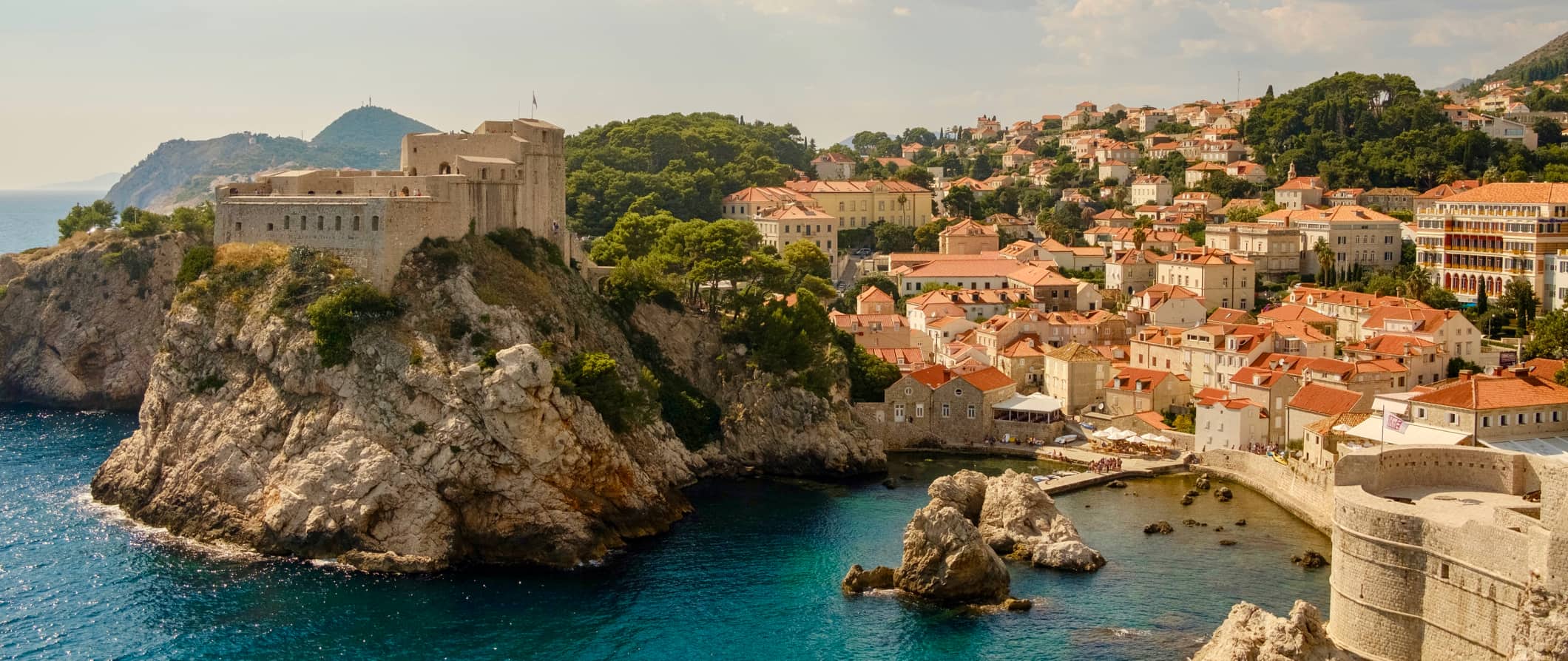
Croatia is one of the most popular destinations in Europe . It’s the go-to spot for stunning beaches, rugged islands, historic architecture, and all the sailing you could ask for.
I think the country is vastly underappreciated.
The tourism focus in the country is usually Hvar, Split, Dubrovnik, Istria, or the famed Plitvice Lakes. Too much of the rest of the country is largely ignored. I saw so few tourists in Karlovac, Rastoke, or Slunj. Zagreb didn’t have a lot either, despite it being the capital city. Slavonia? Barely a soul goes there.
Once you get off the main stretch of the coast, it feels like you have the country to yourself. Croatia is a country with over a thousand islands, a long coastline dotted with sun-bleached medieval towns, a cosmopolitan capital city, an underappreciated wine region, and an untrammeled inland landscape that sees a fraction of the tourists that the Dalmatian Coast brings in.
Spend longer than you plan and get off the beaten path to really see the magic of the country.
This travel guide to Croatia can give you the tips and tricks you need so you can plan the ultimate adventure there.
Table of Contents
- Things to See and Do
- Typical Costs
- Suggested Budget
- Money-Saving Tips
- Where to Stay
- How to Get Around
- How to Stay Safe
- Best Places to Book Your Trip
- Related Blogs on Croatia
Click Here for City Guides
Top 5 things to see and do in croatia.

1. Visit Dubrovnik
Dubrovnik is a stunning city best known for its historic Old Town (which was a Game of Thrones filming location). Wander around its limestone streets, admire the baroque buildings, and take in the views of the Adriatic Sea. Don’t miss St. Blaise Church and Sponza Palace either. The city also makes for a great base for day trips, including jaunts into nearby Bosnia and Herzegovina and Montenegro . There are lots of wineries nearby too.
2. See Split
Split has some of the best beaches in the country. It’s also home to Roman Emperor Diocletian’s 4th-century palace. Split also has a lively nightlife, several nearby hikes, historic ruins, cobblestone streets, and incredible seafood. It’s a more upscale (and party-focused) Dubrovnik. Be sure to spend a day in nearby Trogir, the most beautiful town you’ve probably never heard of.
3. Admire Plitvice Lakes National Park
Tucked between Zagreb and the Dalmatian Coast, Plitvice Lakes National Park is a UNESCO World Heritage Site. It’s composed of 16 interconnected lakes and over 90 waterfalls. It’s beautiful but super popular so arrive early (it gets packed in the summer). Admission is 80-300 HRK depending on the month (prices rise in the summer).
4. Visit Rijeka
Rijeka is home to the medieval 13-century Trsat Castle as well as City Tower, a medieval defensive tower. There’s also some amazing diving nearby with lots of underwater cliffs to explore. Don’t miss the nearby historic town of Kastav. It’s an Insta-worthy walled town surrounded by parks.
5. Explore Lokrum
The island of Lokrum is a nature reserve just off the coast of Dubrovnik. It makes a nice day trip (you’re not allowed to sleep here overnight). There are no cars here and, in addition to the beach, there is a former Benedictine monastery to explore. Ferries cost 150 HRK and include admission to the island.
Other Things to See and Do in Croatia
1. visit pula.
Pula is a seaside city and home to an impressive 1st-century Roman amphitheater that overlooks the harbor that is used to hold concerts, film festivals, and even a summer festival dedicated to all things Roman. The festival, Spectacular Antiqva, is held at least once per week during the summer. Admission is 80 HRK. While you’re in Pula, be sure to visit the Archeology Museum and spend some time exploring Brijuni National Park (which is made up of a group of scenic islands). There’s also a 14th-century monastery here you can visit as well.
2. Go Island Hopping
With over 1,000 islands, it would be silly to travel to Croatia and not go island hopping. Plan to stay at least a couple of days on one of the islands to step back in time and get the full Croatian experience. The most popular islands to visit are Brac, Hvar, Krk, Cres, and Lošinj. However, don’t be afraid to get off the beaten path and explore some of the lesser-known islands such as Silba, Vis, and Lastovo. Some of the islands have ferries that start at 30 HRK each way. There are many ferry companies operating in Croatia leaving from the main ports of Pula, Porec, Rovinj, Split, Dubrovnik, Zadar, Mali Losinj, Umag, and Novalja.
3. See St. James’ Cathedral
Located in Sibenik (which is on the coast between Zadar and Split), St. James is believed to be the world’s largest church built entirely of stone (there are no wooden or brick supports). It’s an architectural masterpiece that was started in 1431 and wasn’t completed until 1536. It’s massive and spacious with a rather dark and grim stone interior that feels very medieval. Some of the cathedral’s highlights are its frieze of 71 heads on the exterior walls, the tomb of Bishop Sizigori, and a 15th-century Gothic crucifix. Admission is 15 HRK.
4. Visit Krka Monastery
This Serbian Orthodox monastery is dedicated to the Archangel Michael and is one of the most important religious sites in Croatia. Founded in 1345, it’s located beside a small and peaceful lake forty-five minutes from Sibenik. Built in the Romanesque style, it boasts a unique mix of Byzantine and Mediterranean architecture. Underneath the building is a natural cave system (known locally as the ‘secret church’) where they have found Christian symbols dating back to the 1st century. The library also has books dating back to the 16th century. Admission is free.
5. Go diving
Thanks to Croatia’s seafaring history, the whole of the coastline is littered with shipwrecks. Two of the most popular are Baron Gautsch (off the coast of Rovinj), and Taranto (off the coast of Dubrovnik). Expect to pay 289 HRK for a single-tank dive in the area but the shipwrecks start at around 400 HRK. Open water certification costs around 3,100 HRK. The best diving conditions are between May and November (September and October will be warm and less busy).
6. Visit the Museum of Broken Relationships
Located in Zagreb, this museum is full of mementos from failed relationships between family members, friends, and lovers. Items on display include clothing, jewelry, handwritten letters, photos, and more quirky items like belly button lint and old chocolate bars. Each item has a story attached to it, some funny, some gut-wrenching. The museum offers an honest, unpretentious look at humanity through its failed relationships. Admission is 40 HRK.
7. Explore the Vucedol Culture Museum
This riverside location is home to an archeological dig site where remains from over 8,000 years ago were found. The museum, built on top of the site, is a state-of-the-art representation of the original settlement complete with replica houses. It showcases the culture that was here, which was one of the first in Europe to create calendars and brew beer. It’s super informative. Guided tours cost 150 HRK and are available in English. Admission is 40 HRK.
8. Go hiking
From coastal walks to mountain climbing to hiking the inland canyons, hills, and forests, Croatia has a lot to offer. The most popular coastal hiking spot is Mljet National Park, on the island of Mljet. Inland, the most popular hiking spot is Medvednica Mountain near Zagreb or in Risnjak National Park. Other spots worth visiting are Brijuni National Park (which is home to 14 different islands), Krka National Park (which has beautiful waterfalls), and Paklenica (which has some rugged canyon trails).
9. Visit the Blue Cave of Bisevo
The Blue Cave (or Blue Grotto) is a natural sea cave accessible only by boat via a narrow passageway. Inside, the water almost glows and has a bright otherworldly color to it. Access to the cave is restricted to one boat at a time. The cave itself is located at Balun Cove on the eastern side of Komiza. The best time to visit is between 11am-12pm as this is when the light is at its most beautiful. Prices in the off-season are 75 HRK and while it’s 100 HRK in the high season. Expect to pay around 800-900 HRK for a full-day tour (and expect crowds).
10. Listen to the Sea Organ
The Sea Organ is tucked away beneath a set of steps that lead down to the water in the seaside town of Zadar. The organ consists of 35 tubes played by the wind and the sea. Designed by architect Nikola Basic, the music sounds similar to whale calls. Come here at sunset to soak in the picturesque views and listen to the captivating sounds of the sea.
11. Go sailing
Croatia is one of the world’s best sailing destinations. With calm winds, short distances, and a coastline dotted by islands and historical sites, it really does make for a great place to explore by sea. During the high season, prices rise dramatically, but if you time your visit right and visit during the shoulder season you can find some great deals. If you don’t want to join a tour you can charter a boat. Charters can get pricey though, as a 7-day trip starts at 13,000-15,000 HRK. If you’re in the mood for partying, Busabout has hop-on-hop-off boat tours. I did one a few years ago ( you can read about it here ). For a 7- or 8-day trip, expect to pay 8,700 HRK.
12. Tour Zagreb
Zagreb has a charming Old Town reminiscent of cities like Prague and Budapest. There is lots of green space, a couple of nearby lakes, and tons of historic architecture. Be sure to visit the massive Neo-Gothic cathedral and the medieval Old Town Gate where you can find an 18th-century painting of the Virgin Mary thought to be miraculous as it survived the city’s Great Fire of 1731. There are also tons of museums (don’t miss the Mimara Museum) as well as the Medvedgrad fortress that overlooks the city. To see the highlights on a budget, take a free walking tour with Free Tour Zagreb . Their tours last two hours and cover all the main sites so you can learn more about this underrated city.
13. Experience The Yacht Week
If you want to splash out and spend a week partying on a yacht, check out The Yacht Week . They host week-long parties and festivals with DJs and events throughout the summer. You can book a full boat to share with friends or just a cabin on one if you’re traveling solo. They have destinations all around the world, including routes in Croatia. “Yacht Weeks” occur from May-August. Prices start at 4,350 HRK per person. It’s one of the biggest things of the summer and it’s a wild, wild, WILD party.
14. Visit Hvar
Hvar is a picturesque island off the coast of Split that’s known for its lively nightlife. It’s popular with younger travelers looking to dance and drink the night away. However, there are also lots of scenic coves, lavender fields, vineyards, and secluded beaches you can enjoy if you visit during the day. While a lot of people come here as part of their sailing trips (or as a day trip from Split), I recommend spending a couple of nights here. It’s one of the best places in the country. It’s also the sunniest, with over 274 days of sunshine each year.
15. Explore Slavonia
Few tourists make it to Slavonia, a rural region in eastern Croatia famous for its wine production. Head to the wine-country town of Zmajevac (pronounced “zma-ye-vatz”), which is just a few miles from the border with Hungary and Serbia. Be sure to sample the local wines and try fish paprikash, a paprika-laden fish stew slow-cooked over an open flame for hours that’s a specialty of the region. Additionally, don’t miss Osijek, the main town of Slavonia. It has a large historic center filled with Gothic buildings and cobblestone streets.
16. Eat oysters in Mali Ston
If you love oysters like I do, head an hour’s drive up the coast from Dubrovnik to Mali Ston. Founded in the 14th century, the region was originally home to a defensive fortification. Today, it’s famous for the oysters that are farmed in Mali Ston Bay. Visit nearby farms to learn about the oyster industry and try some samples. Expect to pay at least 225 HRK per person for a guided oyster tour (with samples).
17. Relax in karlovac
Home to around 55,000 people, Karlovac is an off-the-radar city just one hour from Zagreb. It was originally built by the Austrians in the 16th century, though not much remains from that period. The city’s “castle” is really just a small fort that’s been rebuilt — but it’s worth a quick look as you meander around town. The main draw here is the brewery, Karlovacko. It makes one of the most popular beers in Croatia. Spend a night here and take in the local pace of life. There’s also some hiking and nearby waterfalls if you want to get out and stretch your legs.
18. Road trip around Istria
Istria is a peninsula home to delicious wines and sumptuous white truffles. It’s a foodie paradise that sees few tourists, perfect for road-tripping travelers. Rovinj is the best-preserved and most popular city on the peninsula. It has a stunning Old Town, plentiful beaches, and numerous ruins. Visit the Heritage Museum to learn about the region’s history and then enjoy the exquisite beaches (Monte, Lone Bay, and Amarin) that are perfect for swimming and lounging. Pula, mentioned above, can also be found here.
19. Go truffle hunting
Istria is a major truffle producer and you can go on a truffle tour while you’re here. Prodan Tartufi, a family-run truffle-hunting business near the medieval hill town of Buzet, runs a popular (but pricey) excursion. Tarandek Truffle Hunting organizes more affordable, small-group truffle experiences for around 375 HRK per person (they get less expensive the more people are in the group).
For information on specific cities in Croatia, check out these city guides:
- Dubrovnik Travel Guide
- Split Travel Guide
- Zagreb Travel Guide
Croatia Travel Costs
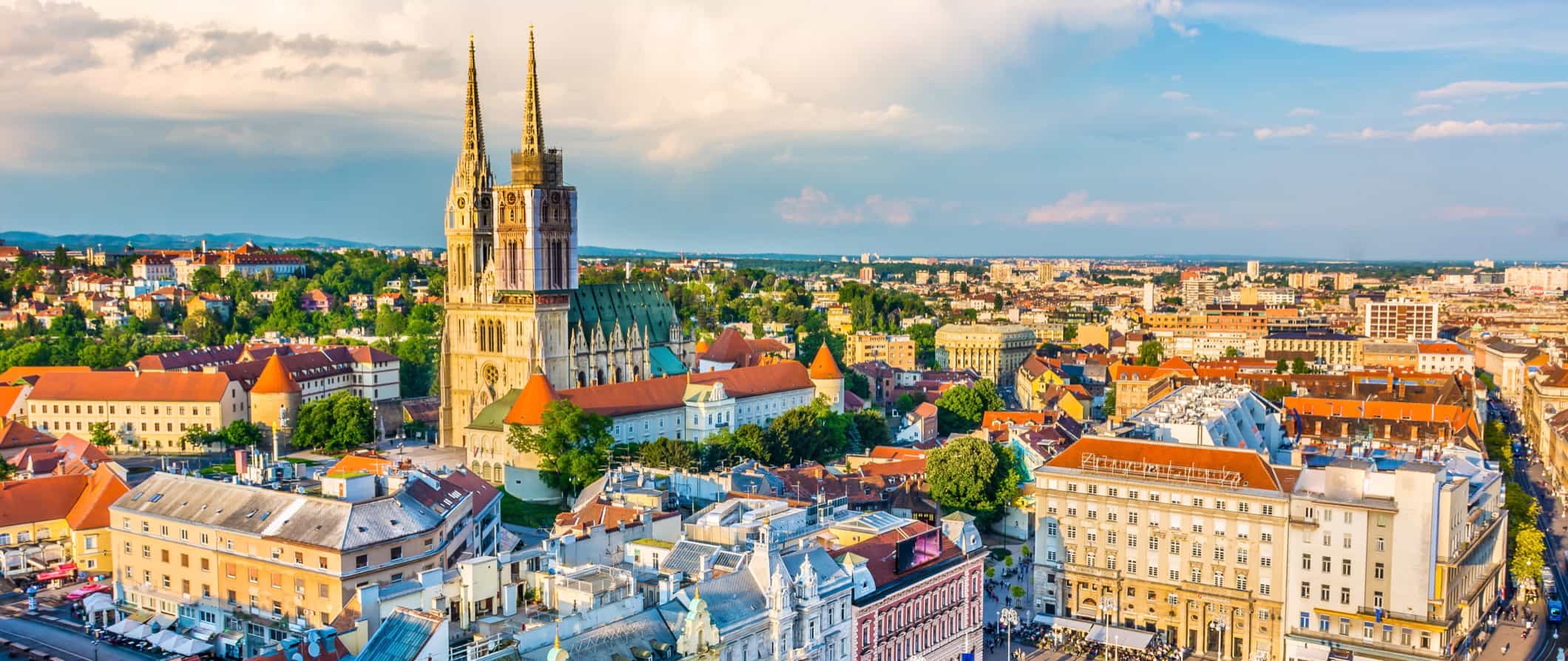
Accommodation – Hostels start at 70 HKR per night for a 6-8-bed dorm. For a private room, prices start at 190-450 HKR. Free Wi-Fi is standard and most hostels have self-catering facilities. Only a few hostels include free breakfast.
Budget two-star hotels start around 300 HRK per night. Most include breakfast and have standard amenities like TV, AC, and a coffee/tea maker. In the more popular destinations, expect them to start around 400 HRK per night.
Airbnb is available around the country with private rooms starting at 250-350 HRK per night. For an entire home or apartment, expect to pay at least 375 HRK per night though prices can double (or triple) in the summer.
For anyone traveling with a tent, there are lots of campsites in Croatia (most of which are scattered down the coast). For a complete list of campsites in Croatia check out Camping Hr . Prices vary depending on how close to the sea you are as well as what season it is. During peak season, expect to pay 220-450 HRK for a two-person plot with electricity and water. During the low season, prices drop to 140 HRK.
If you’re coming during the summer or are sticking to the Dalmatian coast, expect prices to be about 30% higher.
Food – Croatian cuisine has influences from Central Europe, the Mediterranean, and the Balkans. Seafood is a prominent staple along the coast. Sausage and schnitzel can be found at most traditional restaurants as well, as can a variety of pasta dishes and stews, especially goulash. In Istria, you’ll find a heavy Italian influence.
Food is relatively inexpensive except on the Dalmatian coast. Everything there costs double. For example, take-out sandwiches from the bakery chain Milner in Dubrovnik cost 30-35 HRK while they are just 15 HRK once you leave the Dalmatian Coast. Same sandwich, same place, vastly different price.
An inexpensive meal of traditional cuisine or a burger costs around 70 HRK (75-110 HRK in Dubrovnik). Fast food (think McDonald’s) is closer to 45 HRK while Thai or Chinese food costs around 85 HRK. Pizza is available pretty much everywhere with a medium pizza costing around 47 HRK.
If you want to splash out, a higher-end lunch (like a fresh fish fillet) with wine costs around 125-150 HRK. And if you really want to splurge, you can get a delicious sushi dinner with drinks and appetizers for 500-600 HRK.
Expect to pay 20 HRK for a beer and 13 HRK for a latte/cappuccino. Bottled water is 10 HRK while wine is 20-40 HRK per glass.
If you are planning to cook your own food, a week’s worth of groceries costs around 210-300 HRK for staples like milk, cheese, rice, seasonal vegetables, and some chicken.
Some of my favorite places to eat were Pupitres Wine & Coffe Bar, Heritage, Curry Bowl, and La Štruk in Zagreb; Cevabdžinica Behar in Karlovac; Tunaholic Fish Bar in Rovinj; and Oyster & Sushi Bar Bota in Dubrovnik.
Backpacking Croatia Suggested Budgets
If you are backpacking Croatia, my suggested budget is 275 HRK per day. This assumes you’re staying in a hostel dorm, cooking all of your meals, limiting your drinking, doing free activities like hiking and free walking tours, and using local transportation to get around. You’ll need to budget more if you’re visiting in the summer or if you plan on drinking.
On a mid-range budget of 800 HRK per day, you can stay in a private Airbnb or private hostel room, eat out for all your meals, have a few drinks, take some guided tours, take the occasional taxi to get around, and visit more museums and attractions
On a “luxury” budget of 1,600 HRK per day, you can stay in a hotel, rent a car to get around, do private guided tours, eat and drink as much as you’d like, and visit as many museums and attractions as you want. This is just the ground floor for luxury though. The sky is the limit!
You can use the chart below to get an idea of how much you need to budget daily. Keep in mind these are daily averages — some days you’ll spend more, some days less (you might spend less every day). We just want to give you a general idea of how to make your budget. Prices are in HRK.
Croatia Travel Guide: Money-Saving Tips
Expenses in Croatia can add up quickly, especially if you take a lot of tours, boat trips, or just be on the Dalmatian coast where everything is about 30-50% more expensive than other parts of the country. Here are my tips on saving money when you visit Croatia:
- Visit during the shoulder season (or low season) – Prices in Croatia can double during July and August. If you want to make sure your money goes further here, visit during the low or shoulder seasons.
- Take a free walking tour – Both Dubrovnik and Split have free walking tours. They’re a great way to get familiar with the cities and their culture. Just be sure to tip your guide! Check out Dubrovnik Secrets for more information.
- Travel with Flixbus – Flixbus is a budget-friendly way to get around the country (and region). They have Wi-Fi, electrical outlets, and decent enough seats for long-haul journeys.
- Cook your own meals – Many hostels here have kitchens. While buying your own groceries may not be as glamorous as going out to eat, it will definitely save you money!
- Stay with a local – Staying with a local via Couchsurfing is a great way to save money and meet a knowledgeable local who can help you better understand the country and its people.
- Get the Croatia Pass – If you’re visiting between June-September and plan on seeing a lot of attractions, consider the CroatiaPass. It offers discounts on tons of attractions and will save you some money if you’re doing a lot of sightseeing. There are passes for several cities/regions including Zagreb, Split, and Dubrovnik (as well as passes that cover multiple regions). Prices vary per region (and for how many attractions you want to be included) but most will save you at least 250 HRK.
- Bring a reusable water bottle – The tap water here is safe to drink so bring a reusable water bottle to save money and reduce your reliance on single-use plastic. LifeStraw makes a portable filter that will keep your water clean and safe.
- Use points – Accommodation is expensive along the Dalmatian Coast, so use your points and miles on hotels to save money. It’s the best way to stay in nicer accommodation without breaking the bank.
- Get sandwiches at Milnar – For cheap eats, pick up sandwiches from Milnar, a chain bakery with stores around the country. You can find sandwiches for just 15 HRK (double that price in Dubrovnik, however).
- Get a city tourism card – The Zagreb Card offers free public transportation as well as admission to four museums and the zoo (as well as discounts at restaurants). If you plan on museum hopping, this card can save you over 200 HRK (it costs 98 HRK). The Dubrovnik Card has similar discounts as well as free entry to 9 attractions and free public transportation. It’s 250 HKR for the 24-hour pass. (Split has a free tourism card that offers 10% off of several activities, restaurants, and attractions).
Where to Stay in Croatia
During the high season, hostels book up fast so be sure to book in advance, especially on the coast so be sure to book in advance if you’re coming during peak season. Here are some of my favorite places to stay in Croatia:
- Hostel Dubrovnik Marine (Dubrovnik)
- Hvar Centre Dorms (Hvar)
- Falling Lakes Hostel (Plitvice Lakes)
- Crazy House Hostel Pula (Pula)
- Kamena Lodge (Split)
- Boutique Hostel Forum (Zadar)
- The Dot’s Hostel (Zagreb)
How to Get Around Croatia
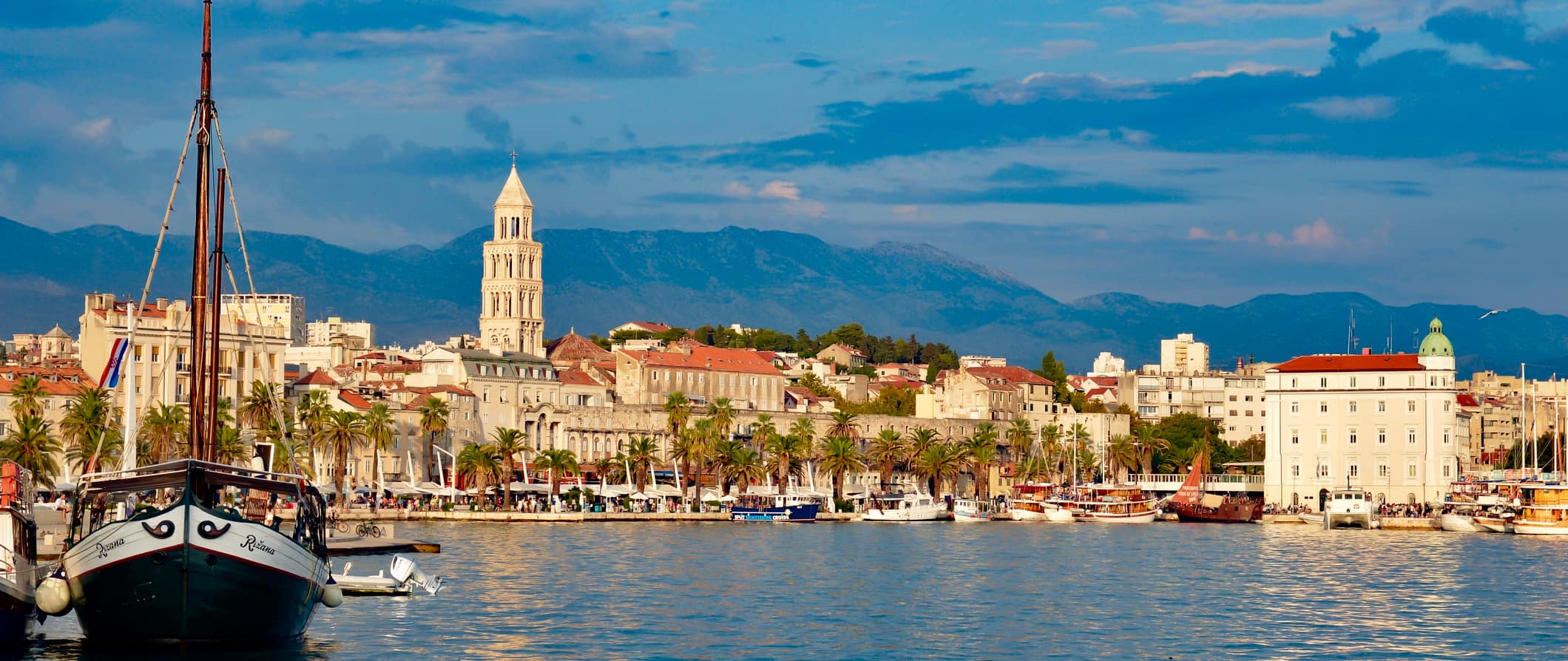
Public transportation – Public transportation is fairly inexpensive in Croatia, with most tickets costing between 6-20 HRK, depending on the distance you go. Both Dubrovnik and Split have day passes that cost around 30 HRK for a 24-hour pass and 75 HRK for a 72-hour pass. Buses and trams are the main ways to get around Croatia’s cities.
Bus – To get around the country, Flixbus or Arriva is the most budget-friendly option. Croatia has invested heavily in improving its roads in recent years and traveling by bus is fast, cheap, and comfortable. Most buses have free Wi-Fi, reclining seats, sockets, and AC. You can use Get By Bus for routes and pricing information.
The cross-country 4.5-hour trip from Dubrovnik to Split starts at 98 HRK on Flixbus in the low season and 165 HRK on Arriva. The 2.5-hour trip from Split to Zadar starts at 75 HRK in the low season. Split to Zagreb takes around 5 hours and costs 135-160 HRK. Rovinj to Pula takes just under an hour and costs 55 HRK, while Pula to Zagreb costs around 188 HRK and takes 4.5-5 hours.
Note that buses have a 10 HRK fee for checked bags.
Train – The train lines in Croatia have been neglected in favor of improving the roads. Therefore, trains are slow and infrequent. They also don’t run along the Dalmatian coast, making them more or less useless for most travelers. I wouldn’t recommend the train here.
Ferry – Ferries in Croatia are efficient and affordable. Most ferries in Croatia are owned by the national carrier Jadrolinija and are large car ferries (so you can bring a vehicle). There is also a network of catamarans that link many of the smaller islands. Most smaller ferries start at 40 HRK during the low season and 100 HRK during the high season. Use Croatia Ferries for routes and prices.
For the 4.5-hour ferry between Dubrovnik and Split, expect to pay at least 230-280 HRK.
Flying – Croatia Airlines is the domestic carrier and offers flights between Zagreb and other airports within the country, including Dubrovnik, Split, Pula, and Zadar. Prices are relatively comparable between all the destinations, with one-way tickets starting at around 1,000 HRK.
Car rental – Car rentals can be found for around 90-200 HRK per day. An International Driving Permit (IDP) is required before you can rent a car (it’s usually not enforced, but it’s better to be safe than sorry). For the best rental car prices, use Discover Cars .
When to Go to Croatia
The best time to visit Croatia is during the shoulder season between May-June or September-October. During these months, you can expect great weather and fewer crowds. This is also the perfect time for outdoor activities like hiking, boating, and kayaking. Expect temperatures around 22°C (71°F).
During the low season (November-April), the country is a lot cheaper, making it an affordable place to visit for anyone on a tight budget. However, many places (including hotels and restaurants) close for the winter due to the lack of tourists so your options are much more limited during this time.
During the peak season (July and August), expect to pay double what you would in the low season. Dubrovnik is especially busy (and expensive) during this time. The coastal resorts are packed with families and cruisers. Temperatures hover around 30°C (86°F) though so the weather is at its best.
How to Stay Safe in Croatia
Croatia is a safe country to visit. Violent crime against tourists is rare. Pickpocketing and theft can occur in busy areas in Zagreb and Dubrovnik so be sure to keep an eye on your belongings (especially while on crowded public transportation or at a bus station).
Croatia’s bars and nightclubs are known for overcharging so be vigilant and check your bill before paying. It is also important to watch your drink and never leave it unattended. Drink spiking has been known to happen at nightclubs in Zagreb, Zadar, Split, and Dubrovnik. It’s rare, but it never hurts to be extra careful.
Solo female travelers should generally feel safe in Croatia. However, the standard precautions apply (never walk home alone at night intoxicated, don’t accept drinks from strangers, etc.), especially in the party towns. For more tips, check out one of the many solo female travel blogs about the country. They can provide specific tips.
While out hiking take care not to wander far off the beaten path as there are still some regions in Croatia with unexploded landmines. If in doubt, ask locals for advice or hire an experienced guide.
Scams here are rare butt you can read about common travel scams to avoid here.
If you experience an emergency and require assistance, dial 112.
Always trust your gut instinct. Make copies of your personal documents, including your passport and ID.
The most important piece of advice I can offer is to purchase good travel insurance. Travel insurance will protect you against illness, injury, theft, and cancellations. It’s comprehensive protection in case anything goes wrong. I never go on a trip without it as I’ve had to use it many times in the past. You can use the widget below to find the policy right for you:
Croatia Travel Guide: The Best Booking Resources
These are my favorite companies to use when I travel. They consistently have the best deals, offer world-class customer service and great value, and overall, are better than their competitors. They are the companies I use the most and are always the starting point in my search for travel deals.
- Skyscanner – Skyscanner is my favorite flight search engine. They search small websites and budget airlines that larger search sites tend to miss. They are hands down the number one place to start.
- Hostelworld – This is the best hostel accommodation site out there with the largest inventory, best search interface, and widest availability.
- Booking.com – The best all around booking site that constantly provides the cheapest and lowest rates. They have the widest selection of budget accommodation. In all my tests, they’ve always had the cheapest rates out of all the booking websites.
- HostelPass – This new card gives you up to 20% off hostels throughout Europe. It’s a great way to save money. They’re constantly adding new hostels too. I’ve always wanted something like this and glad it finallt exists.
- Get Your Guide – Get Your Guide is a huge online marketplace for tours and excursions. They have tons of tour options available in cities all around the world, including everything from cooking classes, walking tours, street art lessons, and more!
- The Man in Seat 61 – This website is the ultimate guide to train travel anywhere in the world. They have the most comprehensive information on routes, times, prices, and train conditions. If you are planning a long train journey or some epic train trip, consult this site.
- Rome2Rio – This website allows you to see how to get from point A to point B the best and cheapest way possible. It will give you all the bus, train, plane, or boat routes that can get you there as well as how much they cost.
- FlixBus – Flixbus has routes between 20 European countries with prices starting as low 5 EUR! Their buses include WiFi, electrical outlets, a free checked bag.
- SafetyWing – Safety Wing offers convenient and affordable plans tailored to digital nomads and long-term travelers. They have cheap monthly plans, great customer service, and an easy-to-use claims process that makes it perfect for those on the road.
- LifeStraw – My go-to company for reusable water bottles with built-in filters so you can ensure your drinking water is always clean and safe.
- Unbound Merino – They make lightweight, durable, easy-to-clean travel clothing.
- Top Travel Credit Cards – Points are the best way to cut down travel expenses. Here’s my favorite point earning credit cards so you can get free travel!
- BlaBlaCar – BlaBlaCar is a ridesharing website that lets you share rides with vetted local drivers by pitching in for gas. You simply request a seat, they approve, and off you go! It’s a cheaper and more interesting way to travel than by bus or train!
Croatia Travel Guide: Related Articles
Want more info? Check out all the articles I’ve written on backpacking/traveling Europe and continue planning your trip:

The 6 Best Hotels in Florence

The 7 Best Hotels in Madrid

The 6 Best Hotels in Vienna

The Best Walking Tours in Barcelona

How to Be a Digital Nomad in Europe
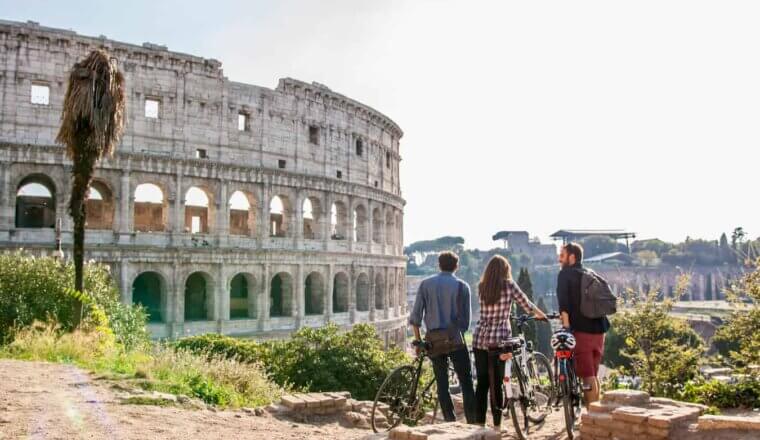
The Best eSIM for Traveling Europe
Get my best stuff sent straight to you, pin it on pinterest.
- Where To Stay
- Transportation
- Booking Resources
- Related Blogs

How much does it cost to explore Croatia?
This article may contain links to products and services we use and recommend. We may receive compensation when you click on links to those products. For more information, see our Disclosure Policy .
Download your Sustainable Travel Checklist and show the world you care
As travellers, we should all be aware of our travel behaviour and its environmental, economic and social impact; and make conscious decisions about it. Too often, we hear negative stories in the media about tourists behaving badly.
Here is your chance to tick some boxes and check out what it really takes to travel with a sustainable mindset.
The fine print: I agree to receive the Minimalist Journeys newsletter full of news, actionable tips and practical advice every month. I know I can unsubscribe at any time. I have read and agree to the Terms of Use and Privacy Policy .
Travel Cost Assumptions
When reading this article, please keep the following in mind:
- Our travel costs are based upon a couple travelling together.
- We are independent travellers, researching and organising our own itinerary using our go-to travel planning tools .
- Accommodation: We usually stay in self-catered accommodation (homestays, locally owned guesthouses, hostels and short-term rentals) - in our own room with (preferably) our own bathroom, though the kitchen may be shared.
- Dining and Groceries: We have at least two meals a day at home . We like to eat out once a day to every few days (and prefer locally owned restaurants and small eateries away from the tourist hotspots).
- Transportation: We walk a lot, and wherever possible, we travel by public transport . Only occasionally do we hire a vehicle.
- Experiences: Many of the activities we do are free of charge or cost very little. When we pay for attractions or activities , we are selective as our funds are limited (just like everyone elses).
- In addition to above expense categories, we include in our total daily costs our mail scanning and forwarding service , mobile phone plans and travel insurance - though only for the period we are in the country.
- We use a multi-currency personal account with Wise to manage our currencies XE to transfer money as required.
- Not included are the costs for entry or exit transportation into/out of the country.

Popularity has driven up prices in places like the Krka National Park and Dubrovnik
What currency is used in Croatia?
While Croatia is a member state of the European Union, it does not use the Euro (EUR). Croatia ’s currency is the Kuna (officially HRK or KN as it’s usually labelled in shops and markets).
The currency took its name from a cute-looking but fierce animal, a local representative of the weasel family called Kuna. In medieval times, the fur of these animals was traded for food and lodging, so they became a quasi-currency.
Unlike some places in Bosnia and Herzegovina , we didn’t see Euros being accepted anywhere in Croatia . So, make sure you have HRK when you visit the country.
Map of Accommodation, Points of Interest, Eateries and Transport
Below is a map of the recommended accommodation, points of interest, eateries and transport terminals/stops mentioned in this article.
Interested in learning about the countries we explore through entertainment? These inspirational travel movies will allow you to go on your own virtual tour around the world.
Accommodation
We recommend staying at properties where the money remains in local hands and for the most part, that means staying at short-term rental accommodation that is not a hotel chain or property owned by an overseas investor.
The average price of accommodation in Croatia for a couple was EUR42.82.
Whether you rent a private room in your host’s home or opt for a small apartment, staying with locals allows you to stay within budget while not compromising on certain comforts, such as your own bathroom and a kitchen where you can prepare meals. It also allows you to learn more about your destinations through conversations with your hosts.
We recommend the following accommodations at the destinations we stayed at:
How to save money on accommodation
For accommodation, as with any other travel expenses, it’s worth shopping around. When we book accommodation somewhere, we tend to look across a number of booking platforms to find the best value for money option. Wherever you book, do make sure you read the fine print to make sure you compare apples with apples. For example, your stay may incur extra charges (like local tourist taxes or cleaning fees). Some booking platforms include them, while with others, you have to pay them to your host upon arrival.
Nightly rates are generally cheaper outside of peak season. If you can only travel in peak season, look for accommodation options that are a little further away from the main tourist attractions, yet have good connections by public transport.
We use and recommend the following booking platforms.

Dining and Groceries
Dining can be quite expensive in Croatia compared to other European countries, particularly in the tourist hotspots.
The average price of dining and groceries in Croatia was EUR11.80 per person per day.
Our expenses for dining experiences in Croatia ranged
- from HRK209 (EUR28.22) for lunch at Bazza Bistro, a café in the heart of Šibenik’s Old Town
- to HRK375 (EUR50.64) for a set menu dinner at Dinner in the Garden, a small patio restaurant near the Plitvice Lakes National Park .

Our meals at Plitvice Lakes were the most expensive during our journey around Croatia but were extremely filling and tasty.
How to save money on dining and groceries?
Dining out all the time can quickly get expensive. We always try and book accommodation where we have access to a kitchen - either our own little kitchenette or the kitchen of our host. That way, we can store food in the fridge and make our own meals. We usually have breakfast and one other meal at our accommodation, and one meal when we're out and about.
Restaurants (even in tourist hotspots) often have special lunch offers (for example, a three-course meal for EUR10). Portion sizes in many parts of the world are usually quite substantial, so we often share a three-course meal. The same applies if you go out for dinner: Order a starter or salad and a main, and that's usually enough for two people. An added benefit: there is less food waste.
As for groceries: every country has more expensive and cheaper supermarkets. Ask your host what the cheaper options are (for example, Aldi or Lidl in many European countries) and avoid convenience stores as much as possible.
Experiencing the local cuisine is one of the reasons why WE travel… Paul and I tend to only eat out once a day (sometimes only once a week), usually at lunchtime. This allows us to try local dishes while taking advantage of awesome lunch deals. It also means we don’t have to roam around unknown parts of town every night in search of a restaurant.
If you are flying from a European city to Croatia , you’ll likely arrive at one of these six international airports:
- Dubrovnik (IATA Code: DBV)
- Pula (IATA Code: PUY)
- Rijeka (IATA Code: RJK)
- Split (IATA Code: SPU)
- Zadar (IATA Code: ZAD)
- Zagreb (IATA Code: ZAG)
All of them are serviced by budget airlines from other European cities, so chances are your flight to Croatia won’t break the bank, as long as you avoid the peak summer season (July/August).
How to save money on transportation
Being flexible is what really pays when it comes to transportation and air travel in particular. Travel outside of peak season if you can. If you can't, fares might still be cheaper during certain times of the week and even hours of the day, so check websites like Skyscanner and Google Flights that allow you to see a whole month and all the options on any given date.
If there are several airports in the vicinity of your home (or in the vicinity of your destination) compare the prices between the different options. For example, flying to Mykonos and taking the ferry to Santorini might end up being way cheaper than flying from your home airport straight to Santorini .
We use and recommend the following online travel agents and service providers for our transportation needs:
To find good flight deals, we use one-stop travel sites or travel aggregators. Each shows the cheapest airfares on any given day, so you can choose to fly a day/week/month earlier or later, pending your flexibility.
If you find a good deal, book it there and then as prices change constantly. Ideally do your research with your browser in incognito mode, as cookies will show booking sites how keen you are to do a certain trip, which may affect the price quoted – that goes for all online travel bookings (not just flights). The best fares generally go first, so planning ahead is important when it comes to (air) transportation. The same is true if you want to use air points/miles, as there is only a very limited number of seats available for any given flight. We tend to not actually go through the flight aggregators, but book with the airline/s directly . The price is usually the same but we have a direct contract with the airline (rather than with the middleman) in case something goes wrong.
If you plan to travel across multiple continents, you may want to compare passes that offer several destinations as a package (such as around-the-world fares offered by One World or Star Alliance members) vs booking each leg of your trip individually. If you are travelling during peak season those multi-destination packages may be a better deal than booking each leg individually. You can do overland sections on around-the-world tickets too, which means you could supplement your around-the-world ticket with cheap flights, bus and train rides in between destinations.
Vehicle rental (including relocations)
Unless your trip takes you across oceans, another way to save on transport is to look for vehicle/motorhome relocations . There are websites in many countries offering massively discounted one-way rates (often including fuel and/or insurance) to those driving a vehicle/motorhome from A to B within a certain period. These deals are fairly last minute, and A and B are usually bigger transport hubs, but if that’s an option just search for vehicle/motorhome relocation at your destination.
Speaking of vehicles: If you are planning to hire a vehicle at your destination, it also pays to shop around. We use and recommend Discover Cars , an aggregator website that allows you to search across major car rental companies at once. And you don’t have to pay for the hire until you pick up the car.
Hitchhiking
A final option to save on transport costs is… to hitch a ride. While Paul and I did it safely in Dominica on a public holiday (when there was no other option), and we have taken plenty of people along in our campervan in New Zealand , there are many countries we wouldn’t feel safe hitchhiking. Judge for yourself where and when you can and can’t do it.
Bus Services
Croatian cities are well-connected by bus. Intercity bus travel is generally cheap, but the service quality of the bus operators can vary quite a bit.
Note that in addition to your bus fare, you are usually also charged:
- a bus station fee (usually around EUR1 per person), and
- a luggage hold fee (as the name suggests, for luggage going into the hold of the bus – usually around EUR1 for a regular suitcase).
You can save the latter if you travel with a travel pack or bag that you take with you on board.
In Zagreb, bus and tram tickets can be purchased at newsstands and from the driver, however, purchasing from the driver is generally more expensive. Zagreb Public Transport is free with ZagrebCard.

Zagreb has an extensive and efficient public transport network
Uber and Taxis
Croatia is the only Balkan country where Uber is available, which is a great thing, especially given the negative reputation that taxis have with tourists. You know the price of the ride before you hop into the vehicle. In general, we prefer not to take taxis, especially when travelling from the airport to our accommodation.
Train Services
Croatia ’s train network isn’t the most extensive, unfortunately. The most popular routes are those between Zagreb and Split , and Zagreb and Rijeka. We took the train from Šibenik to Split and found it to be comfortable and on time. Ticket prices are relatively low compared to most Western European countries.
Ferry Services
Croatia has an extensive ferry network along the Adriatic coast. We decided to take the ferry from Split to Dubrovnik – both to circumnavigate a double-border crossing (as Dubrovnik is an exclave sandwiched between Bosnia and Herzegovina , and Montenegro ) and to experience the gorgeous coastline from the sea. It took a bit longer than the bus but was way more comfortable and enjoyable.
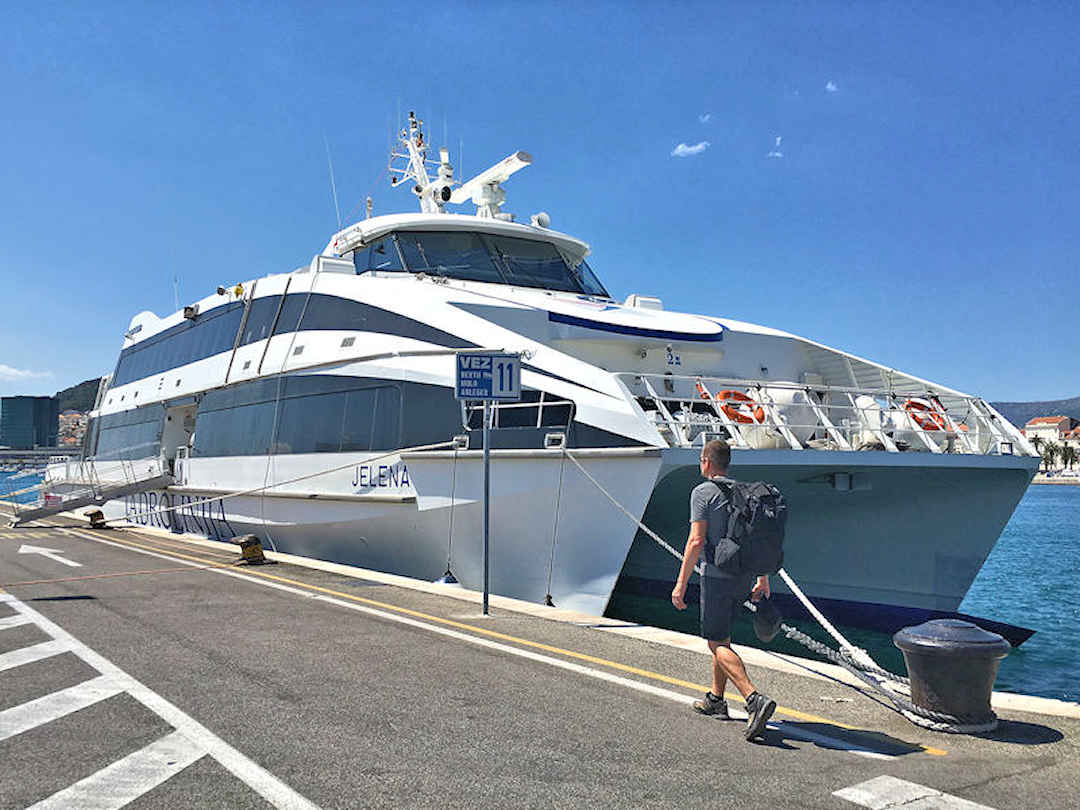
Why not take a ferry between Split and Dubrovnik? It is very scenic and saves you two border crossings.
Experiences
You are spoilt for choice when it comes to tourist attractions and activities in Croatia :
- from National Parks like Plitvice Lakes , Krka, the Kornati Islands or Telascica, which all require you to pay entry fees
- to stunning Roman and Medieval Old Towns that can be explored on foot, self-guided or on free/low-cost walking tours, and
- gazillion other options in between.
Croatia ’s Free Museum Night, where museums and galleries in the major cities are open free of charge, usually happens at the end of January. So, if you happen to be in Croatia around that time keep an eye out for it.
And if you are interested in some other activities, here are some curated options we think are appropriate from our friends at Get Your Guide .
How to save money on experiences
Free activities or experiences.
Many activities (and some of our most treasured experiences) are free or cost very little. On our journeys, we have
- Visited many museums free of charge (including the Colosseum and Forum in Rome which are free on the first Sunday of the month )
- Joined Al Green’s Baptist Church Service in Memphis (rather than pay the exorbitant entry fees at nearby Graceland)
- Attended free guided walking tours around the world (you pay a tip at the end based on your budget and how much you liked the tour)
- Did countless self-guided walks and used public transport to get to know a city
- Hiked in the Andes in Ecuador and climbed volcanoes in the Caribbean
- Swam and snorkelled at countless beaches, using tree shade rather than paying for parasols; and
- Attended free performances and danced with locals in Cuba .
Just search for free activities in your destination and chances are someone has made a nice list for you already.
Paid Experiences
Paying for experiences or activities can add up quickly, especially if you're travelling as a family. Make use of family passes (if available). Look out for special deals and discount coupons. If you travel in a group, it may also pay to book a private tour and share the cost. Shop around - here are some of the service providers we have used and can recommend:
Miscellaneous
There are always expenses that don’t quite fit the major expense categories we talked about above. There include
- the cost of your travel insurance
- the cost of visas you may need to enter a country
- foreign exchange-related fees, and
When you plan your trip, always budget (at least) an additional 10% for miscellaneous expenses on top of the big four items of accommodation, dining and groceries, transportation and activities. Budget more if you have the habit to buy souvenirs and trinket gifts for your loved ones (or yourself).
Withdrawing cash overseas can be expensive but it doesn’t have to be. We can show you how to avoid unnecessary fees and make your travel budget stretch further.
How do you determine which card is best for your overseas trip? Using the right one can save bank fees and make your travel budget stretch further.
Ever been caught out by the bad FX rates and exorbitant commissions charged by FX bureaus? These tips allow you to minimise these charges in future . We also recommend XE Money Transfer to keep more of your money when you complete a transfer.
How much should I budget for a trip to Croatia?
Below are our travel costs when we visited Croatia . We spent a total of 25 nights in the country: 7 nights in Zagreb, 3 nights at Plitvice Lakes National Park , 5 nights in Zadar , 3 nights in Skradin/ Krka National Park , 5 nights in Šibenik and 2 nights in Dubrovnik.
Our daily travel expenses in Croatia were USD54.59 / EUR48.26 per person per day, slightly above our general budget of USD50.
Do I need to tip for services in Croatia?
As non-Americans, we are not used to tipping for services, whether in a restaurant, taxi or anywhere else. And while it is not expected to tip for café or restaurant services in Croatia , it is always appreciated. Don’t do it out of habit, but if the food and service exceeded your expectations.
A lot of websites recommend leaving a 10% gratuity, but in the end, give what you feel is appropriate. If you do decide to leave a tip for excellent service, and you pay with a credit card, there is a good chance you won’t be able to add it to the payment process. Leave cash instead.
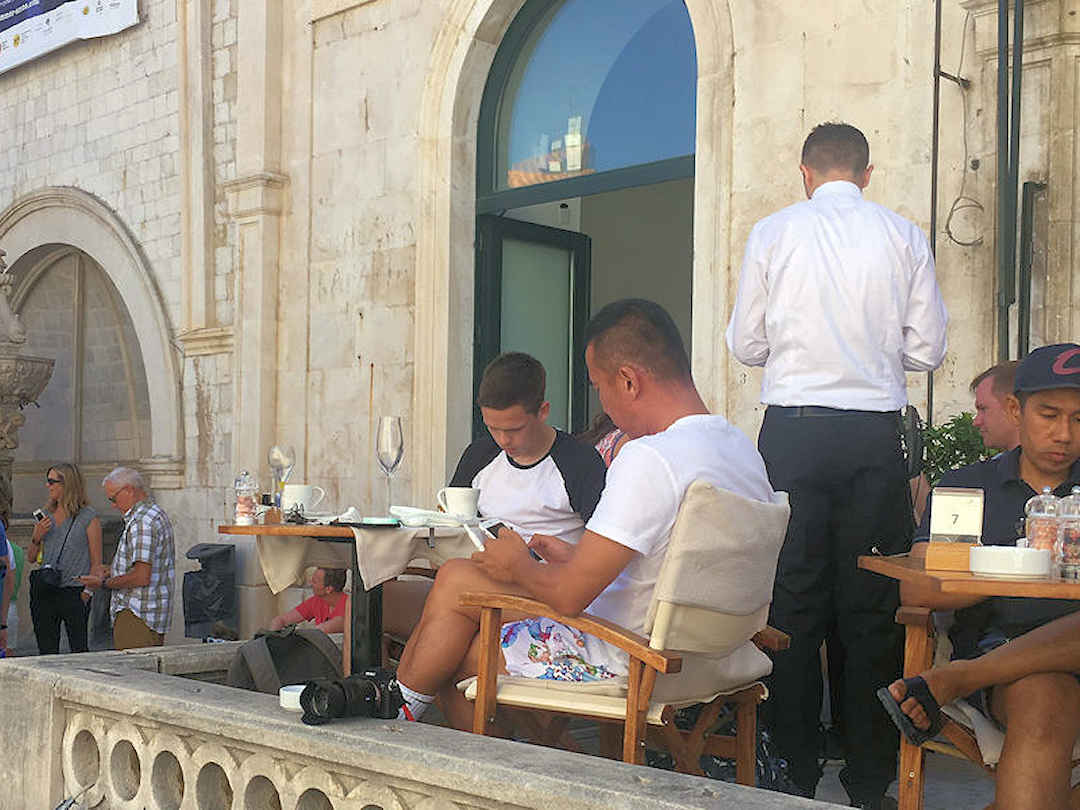
A tip is not expected in Croatia , but it is always appreciated
Save money using the Airalo eSim
Airalo is the world’s first eSIM store that solves the pain of high roaming bills by giving you access to eSIMs (digital SIM cards). More than one million people are already using Airalo 's eSIMs.
With eSIMs from Airalo , you can download and install a digital data pack for over 200 countries/regions and get connected anywhere in the world as soon as you land.
With Airalo 's eSIMs, you can access the Internet from virtually any country on the planet and don't have to pay excessive roaming charges. You don’t need to waste your time looking for a local plastic SIM card. The eSIM can be activated either immediately after installation or upon arrival at your destination. A wide range of eSIMs are available for different countries and regions. You do not even have to buy a card for a specific country. If you intend to travel, you can buy a regional eSIM on Airalo . For example, there are eSIMs available for the entire continent of Europe .
The support team is available 24/7/365 and is happy to offer prompt assistance via chat on the Airalo website, social media, or email.
This brings us to our final point.
How much cash do I need in Croatia?
From a safety point of view , we like to have as little cash as possible on us, yet enough to not feel uncomfortable.
Of the expenses incurred in Croatia , we paid 28% in cash. The biggest cash amount was a payment of HRK1,500 (EUR202.55) for five nights of accommodation in Zadar .
How much did it cost you to explore Croatia?
We wrote this Croatia travel cost guide based on our own peronal experiences. If you have explored Croatia recently and you have something to add about your travel costs , please feel free to contact us. If you liked our travel cost saving tips and found them helpful, we would appreciate it if you could share them with your friends and family via the Share buttons below. Even better, link to the page from your personal blog or social media platforms.
Author: Paul Ryken
- Travel Planning Guide
How much does a trip to Croatia Cost?

How much money should you budget for your trip to Croatia?
- How much does a one-week trip to Croatia cost?
- How much does a two-week trip to Croatia cost?
- How much does a one-month trip to Croatia cost?
- Hostel Prices
- Hotel Prices
The Cost of a Trip to Croatia
A trip to Croatia for one person usually costs between $42 and $241 per day and $84 to $483 for two people. This is a wide range of costs, and the daily average per person from our data is $103 (kn721) per person. This average includes food, accommodation, sightseeing, and local transportation expenses contributed from other travelers. Prices can vary based on travel style and activities. While the overall price for a trip to Croatia is dependent on your personal travel style and the specific places you visit, if you book standard accommodation and travel with an average level of convenience, then your budget should be somewhere within this range. Also, the prices for individual destinations such as Dubrovnik, Zagreb, and Split may vary, but generally fall somewhat close to this range. Below you can find a breakdown of travel expenses by category, plus a comparison of guided tour costs versus traveling independently.
For budget travelers in Croatia, planning for around $42 (kn294) per day should cover essentials such as accommodations in hostels and budget hotels, affordable meal options, local transportation, and engaging in various activities. If you're a mid-range traveler, setting aside around $103 (kn721) per day would allow for more comfortable stays in typical hotels, dining at regular restaurants, and exploring a diverse range of popular attractions. Luxury travelers, on the other hand, should consider a daily budget of approximately $241 (kn1,697) to accommodate higher-end hotel stays, dining at nicer restaurants, and indulging in more exclusive private tour options. It's important to note that these price ranges are derived from our extensive travel cost data for Croatia, which is based on valuable insights from other travelers as well as hotel and tour data provided by travel companies. For a more detailed breakdown of travel costs, you can refer to our comprehensive travel cost data for Croatia .
How much does a one week trip to Croatia cost?
When planning a one-week trip to Croatia, most visitors to Croatia spend between $292 and $1,690 for their trip, with the average cost falling around $718. This estimate includes essential aspects such as sightseeing, local transportation, food, and accommodations. With a full week, you'll have sufficient time to explore one, two, or possibly three locations within Croatia, depending on the amount of time you want to spend in each place. The most popular places worth considering are Dubrovnik , Zagreb , and Split . Keep in mind that these numbers are based on overall averages and may vary depending on your individual preferences.

How much does a two week trip to Croatia cost?
With two weeks, you should budget between $585 and $3,380 for your trip to Croatia. The average price for a two week trip is $1,436. Two weeks will allow you enough time to visit between three and five places. If you're on a budget, you might want to consider some of the more affordable places such as Novalja, Zagreb, and Korcula.
How much does a one month trip to Croatia cost?
When embarking on a month-long trip to Croatia, expenses can range from $1,253 to $7,242, with an average cost falling around $3,078. For those fortunate enough to have a full month, considering a vacation rental with a kitchen for at least a portion of your stay can help save money with meals. Backpackers often opt for hostels due to their affordability and the added benefit of a social vibe.
Hostel Prices in Croatia
With more than 110 hostels in Croatia, the average price is $30 per night for a dorm bed. Hostels are a terrific option for younger independent travelers looking to save money while staying social during their trip. With many types of hostels, it can be overwhelming to sort out the best places, though. Our analysis of the hostels in Croatia not only found the average price, but also uncovered some surprises about the overall quality, amenities, and atmosphere of hostels in the region. You can see more details from our analysis about typical hostel prices in Croatia here .
Here are a few sample prices from popular hostels in Croatia.
- $15 for a dorm bed at Beach Hostel in Split more details
- $30 for a dorm bed at Hostel Angelina - Old Town Dubrovnik - Southern pa in Dubrovnik more details
- $21 for a dorm bed at Chillout Hostel Zagreb in Zagreb more details
Hotel Prices in Croatia
You'll find a wide range of hotel options across Croatia. Below are prices for some of the destinations, and for more details see our analysis of hotel costs in Croatia .
St Joseph's
Riva luxury suites.

Should you do an organized tour or travel independently in Croatia?
When planning a trip to Croatia, there are two primary options to choose from: organized tours and independent travel. Organized tours offer a convenient and hassle-free experience, as all the details of your trip are handled by travel experts. Additionally, you'll have the benefit of an expert guide who can provide valuable insights and knowledge during your journey. This option is often favored by travelers who appreciate the convenience and ease it offers, with many tours providing transportation and expert guides to enhance the overall experience.
On the other hand, independent travel provides a different set of advantages. It offers a higher level of freedom and flexibility, allowing you to customize your itinerary and explore at your own pace. This option appeals to travelers who value the ability to make spontaneous decisions and have more control over their travel plans. The independence of traveling on your own can provide a sense of adventure and the opportunity to immerse yourself in the local culture on a deeper level.
Ultimately, the choice between organized tours and independent travel depends on your personal preferences and travel style. Consider your desired level of convenience, the amount of guidance you prefer, and the level of flexibility you seek when making your decision. Both options have their own merits, and the decision should be based on what aligns best with your travel goals and preferences.
Comparing Trip Costs in Croatia
When we compare the prices of organized tours to the average costs of independent travelers, we can see that sometimes the prices are fairly even.
Tours vs. independent Travel: Pros & Cons
Organized tours.
- An expert guide familiar with the culture
- Convenient transportation
- Fellow travelers to socialize with
- Well researched activities
- Efficient and thought out itinerary
- The security of have a trip leader if something goes wrong
- Limited options
- Usually not customizable
- The fast pace often means you can’t visit one place in depth
- Usually more expensive than independent travel
- There may be limited time to interact with the local culture and community
Independent Travel
- Completely customizable
- Opportunity to visit off-the-beaten-path destinations
- Can fully immerse yourself in the local culture
- Freedom to move at your own pace
- Flexibility to change your itinerary at any time
- More affordable
- Challenging to plan an efficient itinerary
- Transportation may be challenging or inefficient
- Booking and trip planning can be a hassle
- Popular sights may sell out well in advance
- If something goes wrong, you're on your own
Are organized tours more expensive than independent travel in Croatia?
Organized tours typically average around $350 per day and provide the convenience of an all-inclusive package with one comprehensive payment. On the other hand, independent trips usually average around $103 (kn721) per day and involve individual payments for accommodations, local transportation, meals, and sightseeing. Both organized tours and independent trips have their own unique challenges and benefits, so it's crucial to thoroughly understand the aspects of each to make a fair comparison. For a detailed analysis of tour prices in Croatia, check out our comprehensive guide on tour prices in Croatia here .
Here are a few sample tours in Croatia:
- Bike Cruise Split South Premium Superior ($902) 8 days, 14 destinations more details
- A Taste of Croatia with Coastal Cruise ($5,490) 14 days, 13 destinations more details
- Scents and tastes of Croatia on foot and by bike ($4,512) 12 days, 10 destinations more details
- 6-Day Dalmatian Luxury Cycling Tour ($3,718) 6 days, 14 destinations more details
- The Dalmatian Coast Classic-Croatia guided Bike Tour ($3,700) 6 days, 11 destinations more details
More for Croatia
If you're planning a trip to Croatia, check out these other informative travel guides.
We've been gathering travel costs from tens of thousands of actual travelers since 2010, and we use the data to calculate average daily travel costs for destinations around the world. We also systematically analyze the prices of hotels, hostels, and tours from travel providers such as Kayak, HostelWorld, TourRadar, Viator, and others. This combination of expenses from actual travelers, combined with pricing data from major travel companies, gives us a uniqe insight into the overall cost of travel for thousands of cities in countries around the world. You can see more here: How it Works .
Subscribe to our Newsletter
Coupons and discounts! Travel tips!
1 Categories averaged on a per-item basis. 2 Categories averaged on a per-day basis. For example, the Food 2 daily average is for all meals for an entire day, while Entertainment 1 is for each individual purchase. Thus, the overall daily average cost is not a summation of the individual categories.
- You are welcome to reference or display our travel costs on your website as long as you provide a link back to this page .
- For a basic link, you can copy and paste the HTML link code, or this page's address. Address Link HTML Croatia Travel Costs " disabled />

Some of the links on this website are sponsored or affiliate links which help to financially support this site. By clicking the link and making a purchase, we may receive a small commission, but this does not affect the price of your purchase.
- Privacy / Terms of Use
- Activities, Day Trips, Things To Do, and Excursions
We’re on the road right now – join in on the fun and follow @thebrokebackpacker on IG!
- Meet the Team
- Work with Us
- Czech Republic
- Netherlands
- Switzerland
- Scandinavia
- Philippines
- South Korea
- New Zealand
- South Africa
- Budget Travel
- Work & Travel
- The Broke Backpacker Manifesto
- Travel Resources
- How to Travel on $10/day
Home » Europe » Travel Expensive
Is Croatia Expensive? (Budget Tips • 2024)
If your preconceived notion of Croatia is that it’s a cold, rainy Eastern European country, forget everything you think you know about it.
Nearly 15 million tourists flock to the sandy beaches and beautiful national parks every year. There are also lots of monuments and buildings worth discovering – like the Museum of Broken Relationships (no breakup needed).
The idyllic nature of the smaller villages draws in people from all over the world, as well as the chance to experience a stay in a traditional Croatian stone cottage. Croatia’s reputation as a prime holiday spot makes the answer to the question “ Is Croatia expensive ” seem like a solid yes, especially during peak times. This is because prices for accommodation shoot up and sometimes even double in high season.
But, fear not. You don’t necessarily have to end up with empty pockets after your trip, especially once you’re armed with a few of our tips and tricks.
So without further ado, let’s dive into everything you need to know about saving money when you visit Croatia!
Croatia Trip Cost Guide
Cost of flights to croatia, price of accommodation in croatia, cost of transport in croatia, cost of food in croatia, price of alcohol in croatia, cost of attractions in croatia, additional costs of travel in croatia, some final tips for saving money in croatia, so, is croatia expensive.
How expensive is travel in Croatia ? Let’s break it down. We’ll look at all the major cost factors of a typical trip to this amazing country, which include:
- Accommodation options
- Food and drink
- Transport around the country
- Other costs you may want to take into account
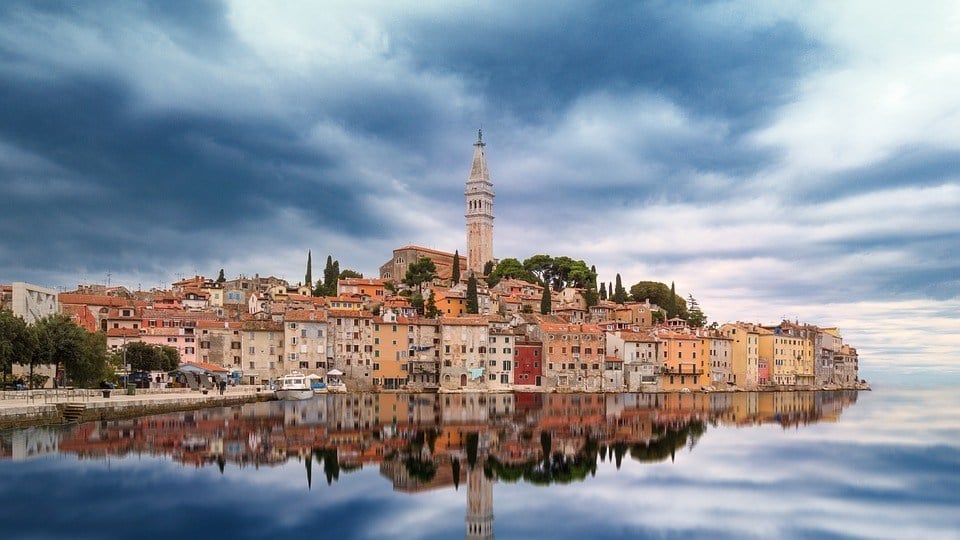
The official currency in Croatia is the kuna (kn). For convenience, we’ll estimate all the costs mentioned in US dollars (USD). Bear in mind that these depend on current exchange rates, so assume that they may fluctuate a little.
Is Croatia Expensive? 2 Weeks in Croatia Travel Costs
See what you can expect to be your total Croatia trip cost :
ESTIMATED EXPENSE: $600-$2000 USD
Let’s talk about flights. Traveling to Croatia is probably the biggest single expense and the most difficult to accurately estimate, mainly because flights fluctuate in price throughout the year.
Croatia has nine international airports you can possibly fly into. The main airport in terms of arrivals is Zagreb. In fact, only Zagreb, Split and Dubrovnik will receive international flights all year round.
Is Croatia cheap to get to, though? Many cities tend to have a “cheap time” to fly.
We’ve compiled a list of round-trip tickets to Croatia from some major cities:
- New York to Zagreb: 700 – 1000 USD
- London to Zagreb: 300- 600 GBP
- Sydney to Zagreb: 2000 – 3000 AUD
- Vancouver to Zagreb: 1200 – 1300 CAD
Remember that these fares are subject to change with time. You can sometimes score additional discounts by looking for special deals or error fares. Make sure to check flight to the different airports in Croatia to find the lowest cost possible.
ESTIMATED EXPENSE: $10-$350 USD per day
As we mentioned, Croatia travel is becoming very popular amongst travelers. As a result, prices are rising slightly every year. Fortunately, it’s still quite affordable, compared to popular destinations in Western Europe.
There are many different kinds of accommodations in Croatia. As the hotels become more crowded over tourist season, prices inevitably rise. Airbnbs and Hostels are also a great option, especially for travelers on a budget and backpackers.
Make sure you know where you want to stay in Croatia before you look deeper into possible accommodations. Once that’s clear, check out the best ones below, so you can find the right one for you.
Hostels in Croatia
Staying in hostels is the best way to lower your accommodation costs low. Choosing a dorm instead of a private room will save you even more money.
They are also good social spaces for those who don’t mind meeting other travelers and being surrounded by like-minded bunkbed buddies. And trust us, there are numerous amazing hostels in Croatia ! Another advantage of staying in a hostel is the great advice you can get from staff and other guests.
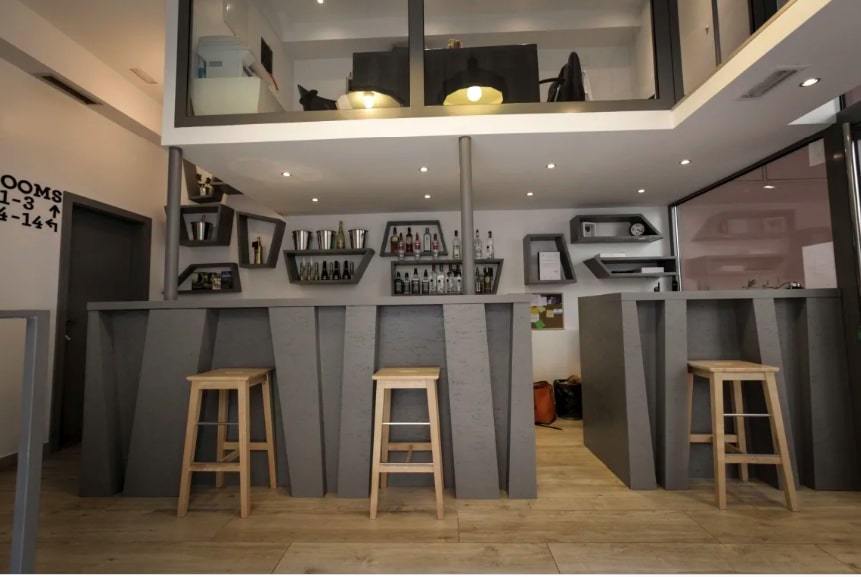
The prices of hostels vary quite a lot in Croatia – anywhere from $10 USD to $55 USD per night. But a fair price to look at for a standard hostel option is between $15-$25 USD per night.
You’ll want to be close to whatever you plan on seeing. So in a major city, it may be close to the city center. On the islands, it’ll probably be near the beach. Here are a few of the best ones we found:
- Chillout Hostel , Zagreb – An expertly-designed hostel with incredible common rooms, a 24-hour bar, a rooftop lounge, all in downtown Zagreb!
- Hostel Elena, Zadar – 20 Yards from the boardwalk, with access to the island ferries, and the party atmosphere of the beachfront nightlife.
- Split Guesthouse & Hostel, Split – They’ll make you feel like you’ve arrived at a friend’s house, complete with a free cup of coffee on arrival. Rated best hostel in Split for several years running, it’s definitely worth the stay.
Airbnbs in Croatia
There’s a quite big range of options on Airbnb when it comes to prices in Croatia. The cost mostly depends on where you’re looking to stay, and especially what part of the year. Island accommodation also tends to be slightly more expensive, so keep that in mind during your planning.
While you might be able to score an impressive $28 USD per night (lucky you), expect to pay a more typical $35 – $55 USD a night for a decent apartment.
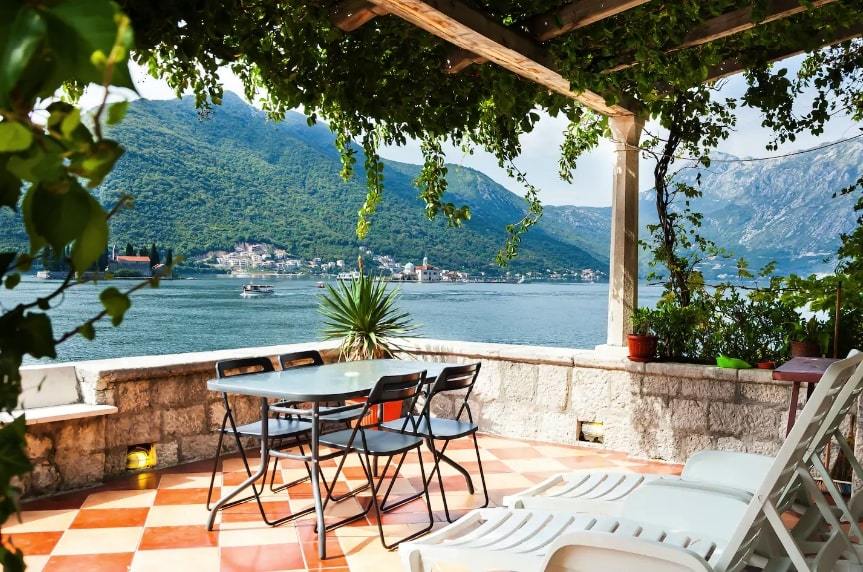
On the upside, you’ll have the apartment to yourself, with the option to self-cater in a kitchen of your own. You can’t beat the feeling of having a home away from home. If you value privacy and independence, staying in an Airbnb is the right choice for you.
Here are a few gems we found that you may consider:
- Waterfront with an extraordinary view – In the old town of Dubrovnik, a studio with a truly extraordinary view of the bay.
- Cozy & Romantic Apartment with a Stunning View – Right by the seaside, and close to the romantic part of Sukošan old town.
- The best position in Hvar! – Sitting on top of a hill, overlooking the town and sea, this is a view that’s absolutely breathtaking.
Hotels in Croatia
While hotel accommodation is definitely the most expensive of all the options, it comes with certain advantages and luxuries. Hotels probably offer the best on-call services, like room service, attached restaurants, laundry, gym, concierge, and even more.
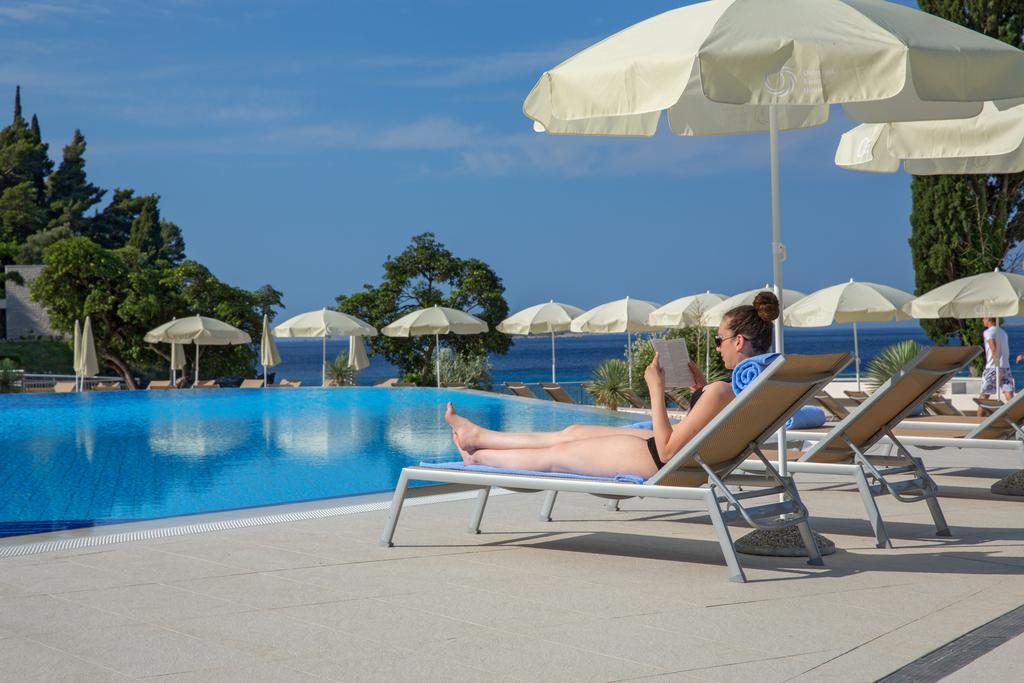
The price range is incredibly big for hotels. You can find places for up to $350 USD per night, but you can also do some hunting and find great value rooms at around $80 USD. Hotels should only be considered if your travel budget allows it and if you don’t want your trip to end after a couple of days.
Here are some of the best hotel options in Croatia:
- Hotel Mlini – A picturesque view from a balcony can offer a great start to a day in Dubrovnik.
- Hotel Esplanade – Just twenty yards from the beach in Crikvenica, and often features live music on its terrace for some entertainment.
- Falkensteiner Hotel & Spa Iadera – Superb value at this Petrcane coast gem. Enjoy the bars the huge wellness area, and of course, the beach.
ESTIMATED EXPENSE: $5-$50 USD per day
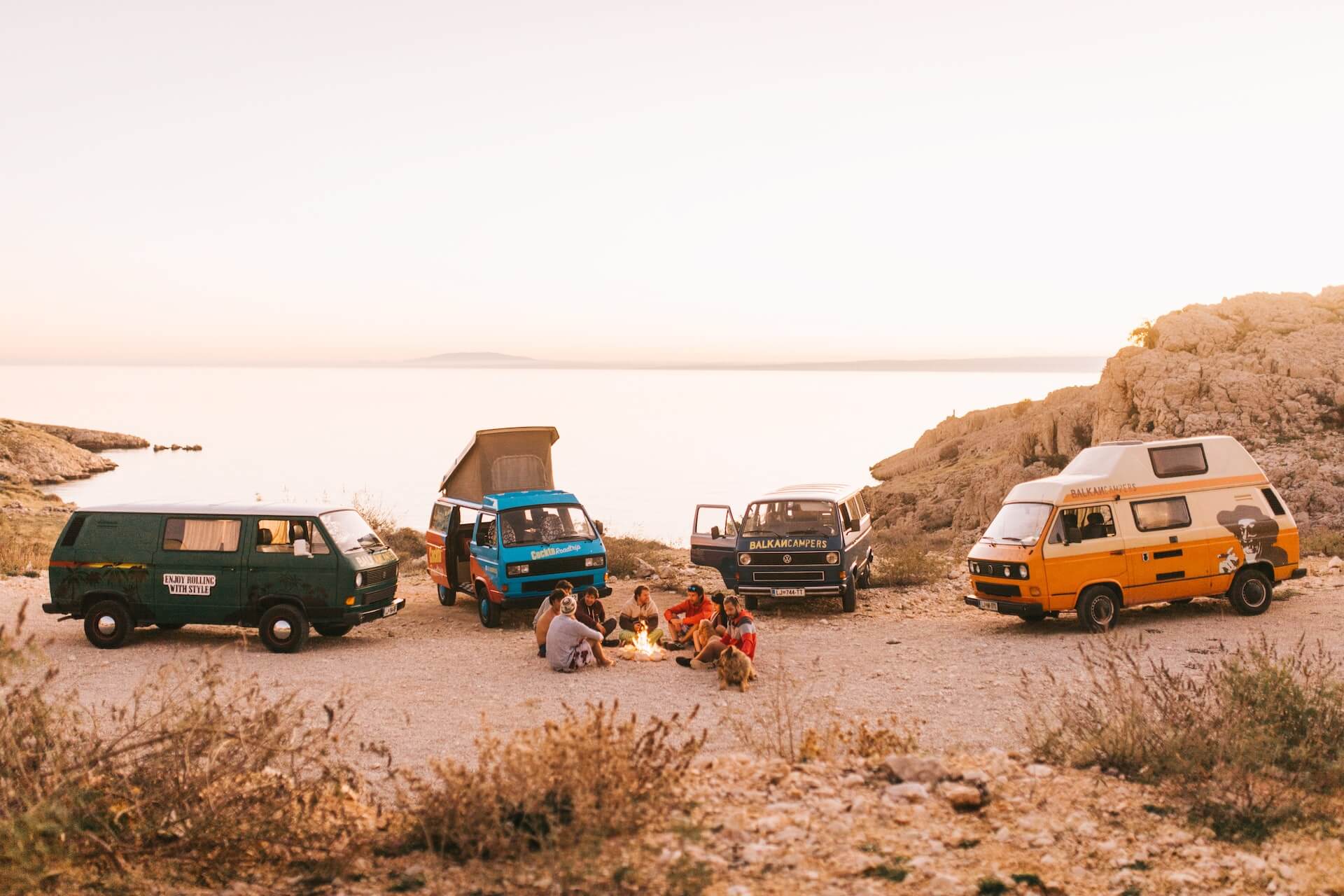
In Croatia, the main form of public transport used in most cities is the bus. Zagreb and Osijek also have tram systems. The train system in Croatia is a little less reliable than other systems, due to by regular stoppages and delays.
Within the cities, a bus single ride costs $1.50-$2 USD on average (you can purchase a one-hour pass for this). For the most part, buses tend to run fairly regularly and efficiently and are the best way to save on transport costs.
If you’re bouncing around the islands, you’ll have to use boat services. Car Ferries or Catamarans (these ones are only for passengers) are the most popular and cost-effective ways to get to the islands.
You have the option of renting a car if you plan to travel around the country. The roads in Croatia are really good, but you may want to use the public transport options available when you’re in a city itself.
You can also choose to walk around – this is especially pleasant during the summer months.
Train Travel in Croatia
Trains only travel between certain cities in Croatia, and it must be noted that the network is limited and doesn’t go to every single town. You can get between a few main cities like Zagreb and Split, for example. To get to smaller towns or even villages, you have to switch it up to either busses or, in the worst case, taxis.
Bus Travel in Croatia
The bus system in Croatia is very extensive. You’ll be able to choose from many services and operators, depending on where you are in the country. There is no single national operator that works all routes. In most cities, the numerous central bus stations are very easy to find and get to.
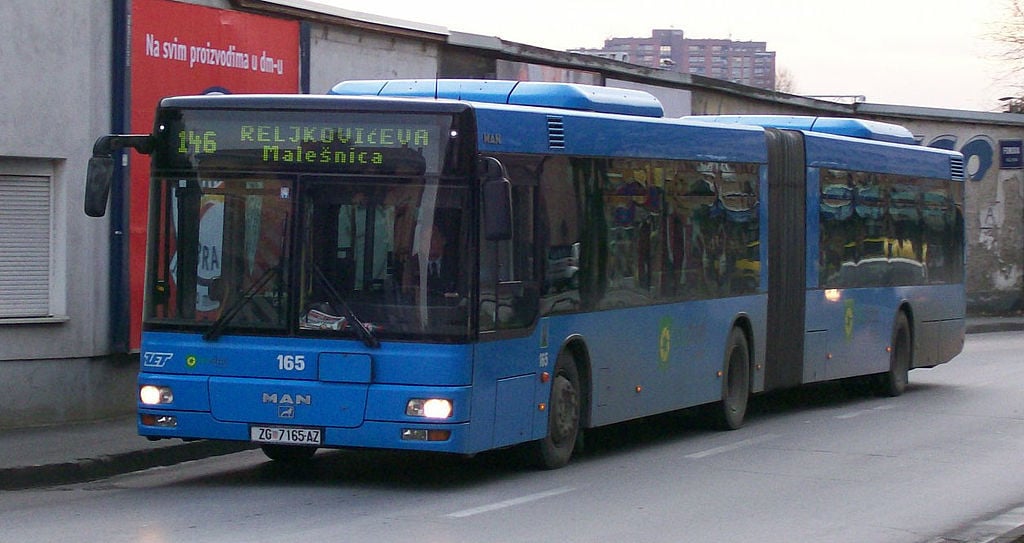
Croatian bus prices aren’t the cheapest in Europe, but it remains the cheapest option, in general, to get around within a city, and between cities.
Within cities, various bus services run a number of routes, usually based on a single ticket system. For example, in Dubrovnik, you can get a ticket for about $2 USD, which is valid for 60 minutes of unlimited travel. You can also buy 24-hour ticket passes for just under $5 USD.
Choosing the bus as your transport option will definitely work out the cheapest. With its quite affordable tickets and reliability, it’s perfect for backpackers and travelers on a budget that want to see as much of Croatia as possible.
Getting Around in the Cities
Many of the cities in Croatia, especially the main ones, are completely walkable. And you’ll love getting around on foot wherever you are because it allows you to take in every detail of the charming city without rushing. That being said, there are few alternatives.
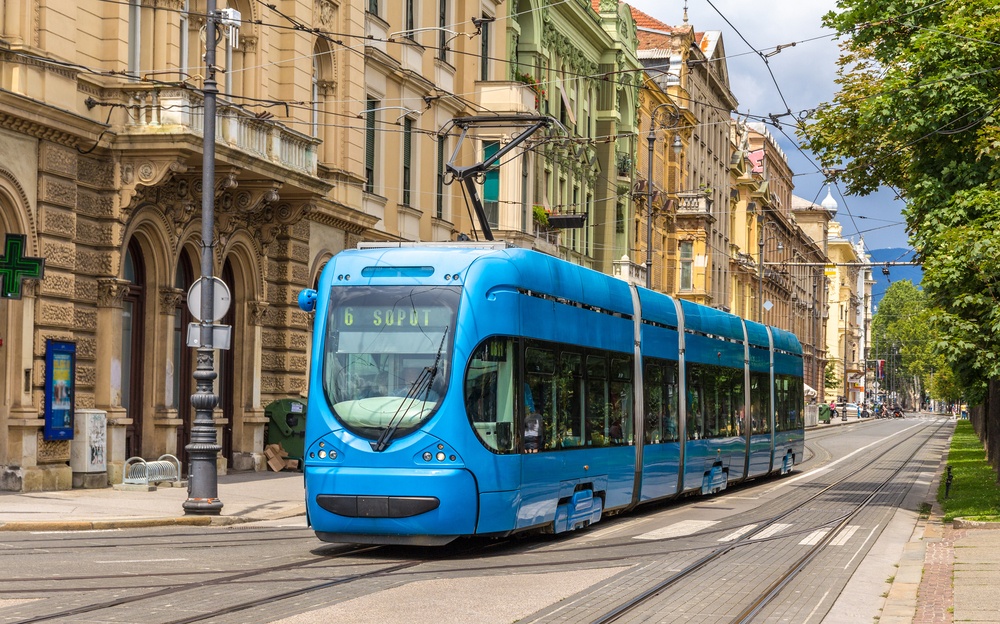
- Metros and trams – There are a few trams in Zagreb and Osijek – a 90-minute ticket costs about $1.50. They do not run 24 hours, but do a fair job of moving around the city every day between 4 am and midnight.
- Bus – Many locals and travelers prefer to use the bus to get from A to B, even if it does take slightly longer. A single ticket, valid for one hour, will cost around $2 USD. Day passes ($5 USD) are also an option. Bus tickets are separate to train, tram and metro tickets.
- Bicycles – You can find bikes rentals fairly easily in the major cities. You can also try a service like BimBim Bikes, which is a sort of aggregator for a number of service providers. Usually, around $14-16 USD per day is a fair price for standard bicycle rental.
- Taxi – Taxis will be an expensive option in Croatia. As an example, a taxi between the airport and Old Town Dubrovnik costs around $30 USD. If you plan to use a taxi to travel around, you’ll be making a serious dent in your budget, as a standard taxi rate is around $1 USD per km.
Renting a Car in Croatia
If you prefer the freedom of exploring the country at your own pace, you could also rent a car. This is only an option if you’re over 22 years old. The coastal roads in Croatia are exceptionally beautiful, great for photos.

To get the best rental car prices in Croatia, make sure to book your car well ahead .
Due to high demand, there’s a good chance you’ll find yourself stranded without a car if you just show up at the rental. And even if you do manage to get your hands on one, you’re going to pay a pretty big rate.
The best services for rentals are Sixt and Rentalcars.com. They both offer the option to pick up in one place and drop off in another, but this is usually more expensive. Expect to pay around $60-120 USD for a four-day rental, excluding gas and insurances.
When taking the rental car on the ferry, you’ll need to pay extra insurance for this – about $20 USD. Be sure to let your rental company know whether you will be going to the islands with your car.
Want to save some cash and explore Croatia by rental car? Use rentalcar.com to find the best deal possible. There are some great prices on the site and they aren’t difficult to find.
ESTIMATED EXPENSE: $20-$100 USD per day
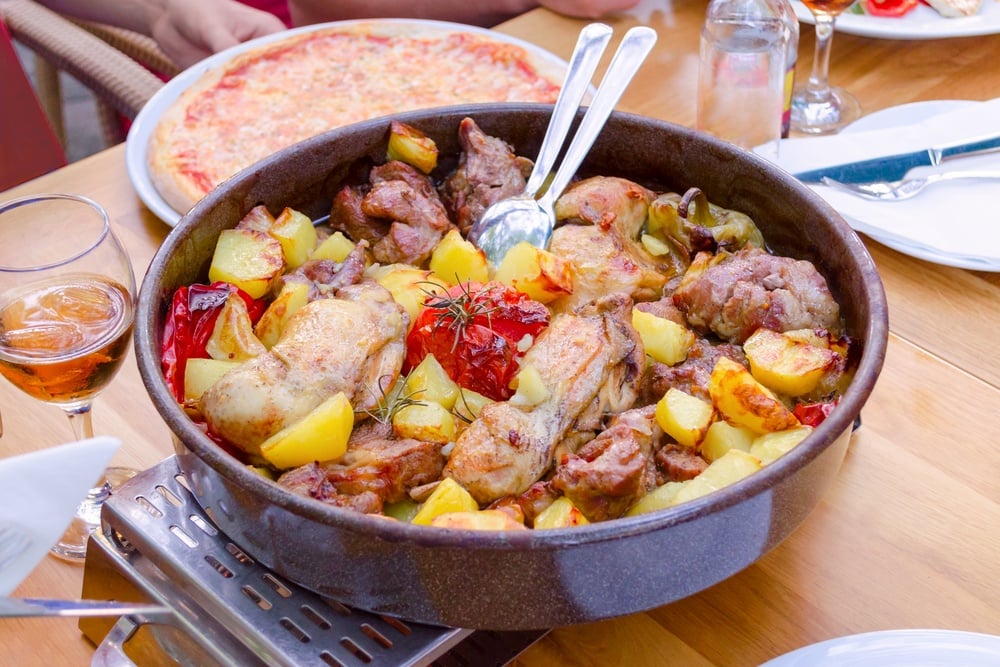
Food isn’t particularly expensive in Croatia, especially when compared to its neighbors. But like pretty much everywhere in the world, eat and drink in restaurants and hotel bars every night, and you’ll end up spending lots. Fortunately, there are ways to keep money in your pockets.
The easiest way to save money on food is to cook for yourself. Staying at an Airbnb or a hotel, you normally have a little kitchen with basic equipment, which allows you to prepare meals at home.
Take a look at these average Croatia prices for typical everyday food items compared to restaurant eating.
- 1 liter milk: $1 USD
- 12 eggs: $2.75- $3 US
- 2 lbs apples: $1.50 USD
- 2 lbs potatoes: $1 USD
Restaurants and bars :
- McDonald’s Medium meal: $6 USD
- Beer (17 fl.oz): $2.50-2.80 USD
- Standard cola (can): $2.10 USD
- Mid range restaurant meal: $20 per person
If you have to eat out, time it for happy hour specials, or keep your eyes open for discounts or 2-for-1 days. This will work out a lot cheaper than regularly getting normal meals.
ESTIMATED EXPENSE : $10-$80 per day
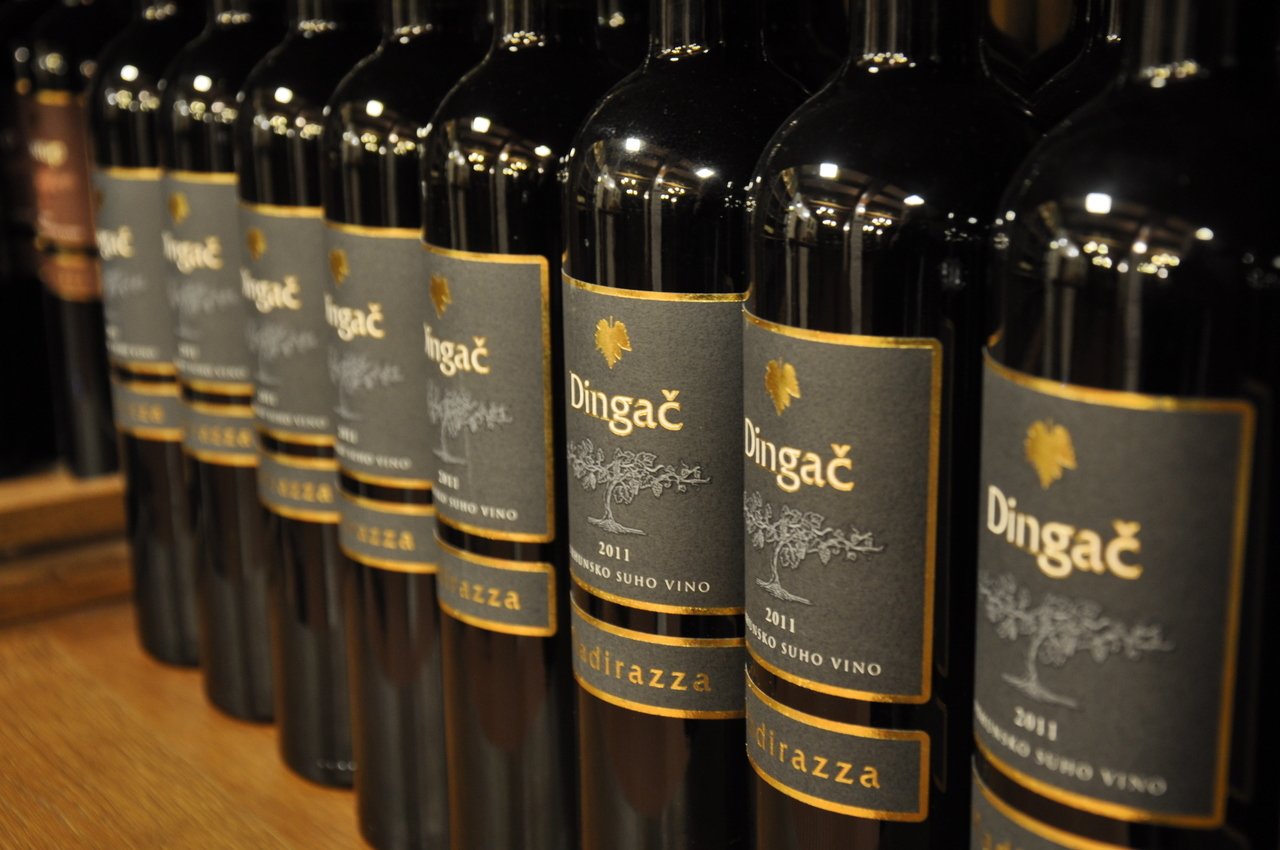
As with most places catering to the tourist market, the alcohol prices in Croatia can vary from bar to bar, depending on where in Croatia you’re stepping out. How much you should expect to spend on drinks is completely dependent on your consumption and preference.
Beer is by far the cheapest option, and local beer tends to be cheaper than imported brands. You can usually find a pint of beer for around $2 USD at a local bar. Expect to pay slightly more for a brand name import.
A bottle of standard house wine at a restaurant or bar can cost around $10 USD, and a shot of vodka around $2 USD as well. Of course, you can buy the same alcohol for as little as half of these prices at a local store or market.
Our advice is to pick up a fair supply from a market and enjoy a few early drinks at home. If you’re still up to hit the town after that, check out the happy hours in the area.
ESTIMATED EXPENSE: $3-$200 USD
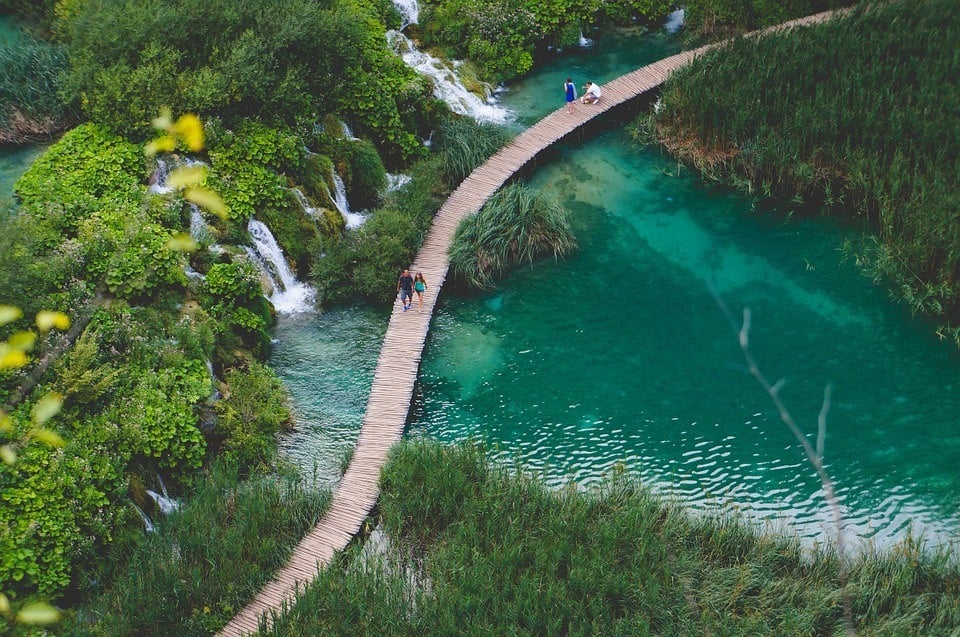
Croatia is full of the most wonderful attractions including the most incredible national parks . Many can be visited as part of a tour or on your own. Hotspots are ranging in pricing from absolutely free to quite expensive. Popular tourist destinations like Plitvice Lakes National Park are a bit pricy in summer–the park (famous for its incredible waterfalls) will set you back $45 USD per person from June-September.
Some of the cheapest include parks like Paklenica National Park for about $3. Other excursions, like boat rides to the blue caves, can cost as much as $130-150 USD or more.
Using the city of Dubrovnik as an example: a tour of the city walls will cost around $10 USD admission. The museum of the Rector’s Palace is a little less at $6 USD.
As we already mentioned, you don’t have to pay to get in everywhere. Beaches, town squares, many churches, and parks are free to visit.
Here are a few pointers on how to save money on attractions:
- It may sound odd but pay in kuna when given the choice. Paying in Euros means giving a sneaky little extra, which can be avoided by just sticking to the local currency.
- Do some research on everything that’s free in your area. Stick to the free attractions and keep the money in your bank account.
- Look at official websites for a discount or free days. Some museums, for example, have free days on certain days of the month.

A new country, a new contract, a new piece of plastic – booooring. Instead, buy an eSIM!
An eSIM works just like an app: you buy it, you download it, and BOOM! You’re connected the minute you land. It’s that easy.
Is your phone eSIM ready? Read about how e-Sims work or click below to see one of the top eSIM providers on the market and ditch the plastic .
Unexpected expenses can come up at any time, unfortunately, so being prepared is important when setting up your travel budget. Nobody likes to think abo0ut an emergency, but it’s better to be safe than sorry.

Set aside a portion of your budget to plan for “surprises”. A worst-case scenario would be a medical emergency – paying for a trip to the hospital shouldn’t cause a panic over how to afford dinner later, or even worse, how to get back home.
There’s also the unexpected must-have gift that you really need to bring back to your aunt. Doesn’t matter what comes up, better to have some funds in reserve – just in case.
Tipping in Croatia
As a rule of thumb, a decent restaurant service deserves a 10% tip. It’s pretty much the standard across Croatia. You can push that up to 15% if you’re really impressed with the service. Rounding up to the bill won’t hurt your wallet, but it’ll surely put a smile on someones face.
A $1-$2 USD tip is appreciated by a porter at your hotel. Carrying your bags can be a bit of work. Other than that, you can round up to tell a street vendor to “keep the change”, if you like, though it’s not expected.
As far as taxis go, no more than a rounded-up amount is expected, unless you’ve taken a long intercity ride. Then it’s ok to leave a normal tip.
Get Travel Insurance for Croatia
ALWAYS sort out your backpacker insurance before your trip. There’s plenty to choose from in that department, but a good place to start is Safety Wing .
They offer month-to-month payments, no lock-in contracts, and require absolutely no itineraries: that’s the exact kind of insurance long-term travellers and digital nomads need.

SafetyWing is cheap, easy, and admin-free: just sign up lickety-split so you can get back to it!
Click the button below to learn more about SafetyWing’s setup or read our insider review for the full tasty scoop.
Still not quite sure how to backpack through Croatia on a budget? Here are a couple of things to try:
- Walk when you can : Chances are you’ll be in a city or town that is wonderful to walk around. Go on and get some fresh air!
- Book ahead : Sometimes you can save a pretty penny by booking ahead. Tickets to theaters, museums, and other attractions do offer rewards for booking in advance.
- Happy hours and 2-for-1 : Almost every bar or restaurant has a time of the day or week for a particular special. Ask your local desk or consult the local web guide for advice.
- Carry a water bottle : Don’t waste money on plastic, or bottled waters carry your own and refill it in the fountains and the tap. If you’re worried about potable water, get a filtered bottle, like the GRAYL , which filters out 99% of viruses and bacteria.
- Earn money while you travel : Teaching English while traveling is a great way to make ends meet! If you find a sweet gig, you may even end up living in Croatia.
- Become a volunteer with Worldpackers : Give back to the local community and, in exchange, you’re room and board will often be covered. It’s not always free, but it’s still a cheap way to travel in Croatia.
Here’s a general observation: In Croatia, the cost of travel tends to be more expensive in the high tourist season (summer) than in the off-seasons. Depending on where you’re flying from, flight costs may differ quite a lot.
If you’re able to visit in the low season, you’ll find Croatia travel costs affordable in terms of accommodation, food, and entertainment. Balance your budget with smart decisions like shopping for food at a market, or eating street food rather than at an expensive restaurant on the main street.
Use the bus – it’s a lot cheaper than taxis or car rentals. And enjoy the walkable towns and cities on foot whenever you can.
It may be overly optimistic to call Croatia a cheap vacation, but it’s not the most expensive, either. With that in mind, you should be able to visit with a reasonably-sized wallet and see quite a bit of the country. Croatia on a budget is totally possible.
What we think an average Croatia travel budget should be: $50-$100 USD per day .
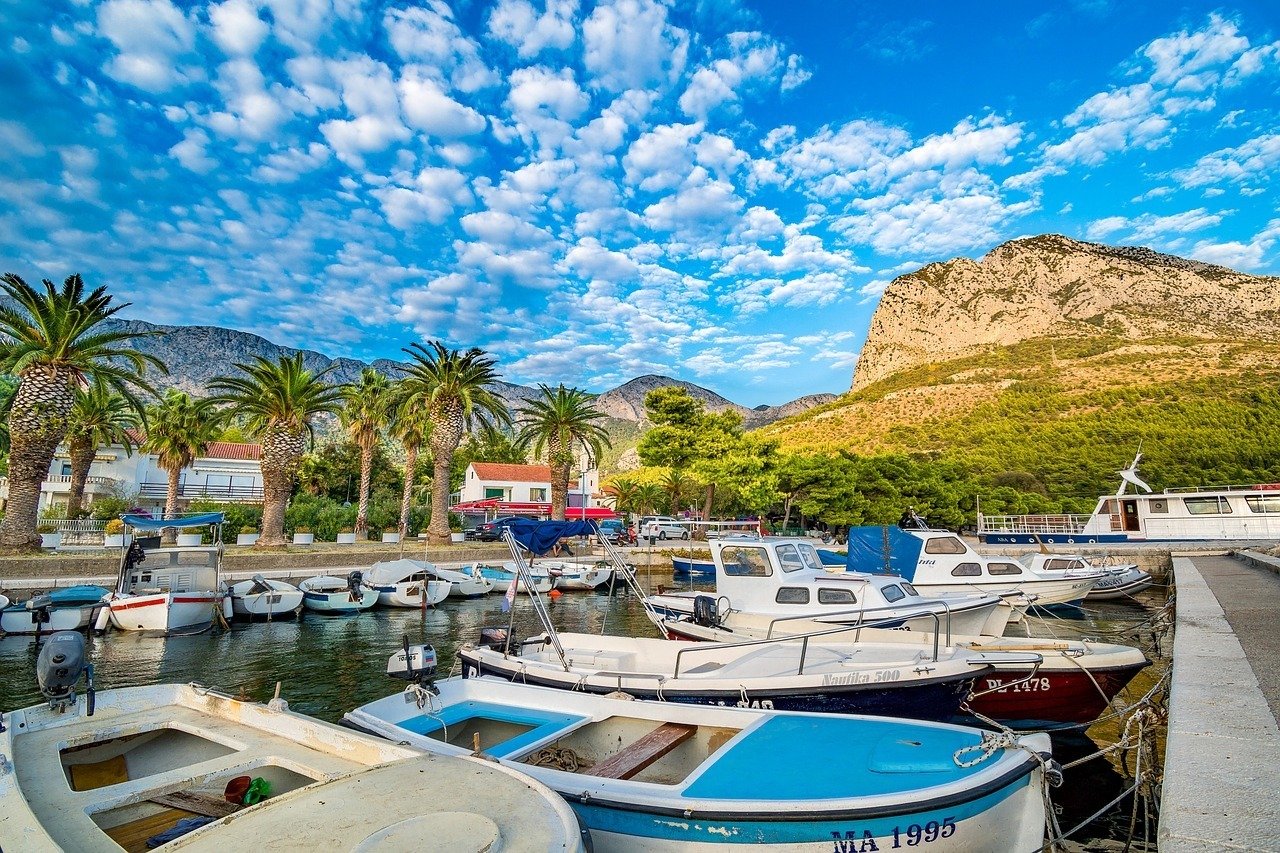
Updated February 2023

And for transparency’s sake, please know that some of the links in our content are affiliate links . That means that if you book your accommodation, buy your gear, or sort your insurance through our link, we earn a small commission (at no extra cost to you). That said, we only link to the gear we trust and never recommend services we don’t believe are up to scratch. Again, thank you!
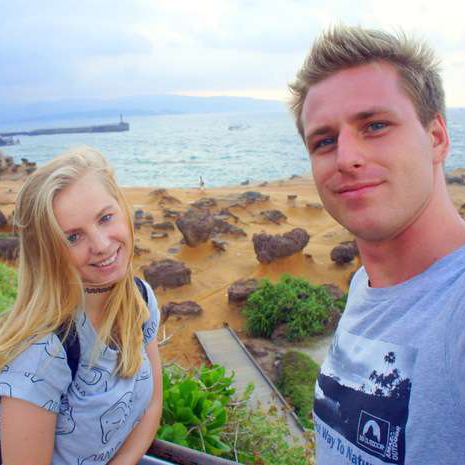
Agness and Cez
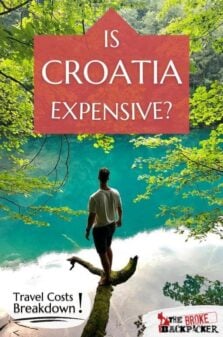
Share or save this post

Being in Croatia right now, I can tell you, that the prices you mentioned are pretty different now. A coke at a restaurant is 3,5 euros (about 4 USD). A pizza is about 12 USD. Car rental is about 45 USD a day + insurance and gas. Meat, cold cuts and vegetables at the supermarket is cheap though, and you can get a good homemade meal for a fraction of the cost at a restaurant. Meat is about 5 usd a pound. Vegetables are about 1 usd a pound. Cold cuts vary, but a cheese, sausages and dried ham is between 6-12 usd a pound. A big bottle of coke (2 liters) is 3 usd. And a 2 liter (cheap beer) is 5 usd. Buying at the supermarket is by far the cheapest solution. Marketplaces will rip you of. If you’re not planning to do your own cooking, expect to use as much as you would in the world’s most expensive countries… And I know what I’m talking about, as I’m danish. Prices are literally the same as in Denmark, if you don’t cook yourself.
Leave a Reply Cancel reply
Your email address will not be published. Required fields are marked *
Save my name, email, and website in this browser for the next time I comment.
Notify me of followup comments via e-mail.

T his post may contain affiliate links, which means I may receive a commission, at no extra cost to you, if you make a purchase through a link. Please see my full disclosure for further information.
Is Croatia Expensive to Visit in 2024? (Local’s Guide)
Wondering is Croatia expensive to visit? You’ve just landed on the ultimate guide to Croatia travel costs.
I’ve been living in Croatia full time since 2014 , traveling up and down the country extensively and have gotten to know the prices in each region pretty well.
Plus, having welcomed friends and family from all corners of the globe, I’ve seen firsthand how different people perceive the cost of travel in Croatia . They bring a fresh perspective to my home country, showing me what might catch visitors off guard or put a smile on their faces when it comes to expenses.
In this guide, I’ll provide you with my honest and up-to-date opinion on whether or not Croatia is expensive for travelers . We’ll cover everything from the current prices of accommodation, transportation, dining, activities, and entertainment.
When I’m not exploring Croatia, I’m a world traveler at heart, always on the hunt for flight deals, comparing hotel rates, and evaluating the general costs of adventuring in different places.
So I’ll also share s ome of my best tips on how you can save money and stretch your Croatia travel budget even further. Now let’s get into the details of how much it costs to visit Croatia.

Table of Contents 👇
Is Croatia Cheap or is it Expensive?
Asking how expensive is Croatia is kind of like asking how long is a piece of string ?
There are too many variables to be able to give an exact answer to this question. Everyone has their own travel style, travel budget, and personal preferences when it comes to the type of vacation they want.
To set the record straight , Croatia is no longer the under-the-radar travel destination it once was. The beautiful country’s stunning islands, crystal-clear waters, and medieval towns are becoming more and more popular with travelers from all over the world. As a result, prices have increased over the years.
Croatia is not a budget destination .
But prices in Croatia aren’t one-size-fits-all either. Prices vary widely depending on several factors, such as your location within the country, the time of year, and your transportation choices.
In popular tourist destinations like Hvar and Dubrovnik, you might find that costs are on par with other well-known Mediterranean destinations like Greece and Italy .
That said, the aim of this post is to offer a clear picture of what you can expect cost-wise when traveling in Croatia. I’ll share my personal insights to help you determine whether or not Croatia aligns with your budget.
Additionally, I’ll include some practical tips so that you can make the most of their trip without overspending.

Money in Croatia
Before we get into the details of Croatia prices, you should know that Croatia joined the Euro on January 1, 2023. This means that the official currency of Croatia is the Euro .
Croatia has long been a cash based society, but since I moved here in 2014, the country has made great progress toward accepting cards at many locations. Most restaurants and stores will accept cards, while the majority of cafes, bakeries, ice cream shops and markets are cash-only.
I recommend having at least some cash (in smaller bills) on you at all times for situations where you can’t use your credit or debit card.
When traveling to Croatia, make sure you have a credit card with no foreign transaction fees . I have a favorite travel credit card that has been in my wallet for 4 years and has never let me down in any country. Plus, by using it, you get points back which you can later redeem for free travel like airfare and hotel stays.
You’ll also want to have a reliable travel debit card. I use Revolut , a prepaid debit card that allows you to withdraw cash abroad without incurring excessive transaction fees. With Revolut, you can also manage and hold up to 29 different currencies .
When withdrawing cash in Croatia, only use ATM machines that are from legitimate banks. Erste, PBZ, Zagrebačka Banka, OTP, Raiffeisen, and Addiko Bank are all reliable and have offices in Croatia. Avoid using no-name ATMs or ones that say “Euronet” on them as they charge high fees.
Croatia Trip Cost Guide
Accommodation prices in croatia.
Figuring out your accommodation costs is a major part of your travel budget when visiting Croatia. Hotels in Croatia are slightly cheaper (if at all) than other major destinations in Western Europe.
Seasonality plays a big role in pricing. In general, accommodation prices tend to be higher along the coast during peak season from June to August and lower in the off-season months (November to March).
Split and Dubrovnik are the two most expensive coastal cities, while towns that are inland tend to be more affordable year-round. The most affordable major city in Croatia is Zagreb, with plenty of awesome places to stay .
There are numerous accommodation options in all areas of Croatia, ranging from budget-friendly hostels to quaint B&Bs to luxury boutique properties and even some larger hotel chains.

Luxury Hotel Prices in Croatia If you’re looking to splurge, prices start around €150 per night and can go up substantially from there. Luxury hotels often come with a range of amenities like spas, gourmet dining, and spectacular views, making the higher price tag worth it for those looking to indulge. To get an idea of what these might cost you, check out these gorgeous beach hotels in Split or these amazing hotels in Dubrovnik with pools .
Budget to Mid-Range Hotel Prices in Croatia If you’re looking to stay at a budget to mid-range hotel, expect prices to be between €60 and €90 per night depending on the city you’re visiting. These hotels often provide a simple, yet comfortable, stay and are a solid choice for travelers who are looking for a good value.
Booking is the best site to use. It is the most popular accommodation booking platform in Croatia and has the most options.
Hostel Prices in Croatia Almost every major tourist destination in Croatia will have a selection of hostels. For instance, a bed in a 12-bed mixed dorm in Dubrovnik will set you back around €35 per night if you’re planning to visit in September. This can be a great way to save money and meet other travelers.
Many hostels also have private rooms available (some even with their own private bathrooms), so if the the thought of staying with many other travelers isn’t your style, you still have the option to rent a comfortable room without having to stay in an expensive hotel.
HostelWorld is the best place to look for hostels in Croatia as they tend to have the most listings and the lowest prices.
Airbnb Prices in Croatia Airbnbs are a good option to experience local life, and there are some really unique Airbnbs in Croatia . However, they tend to be around the same price as the majority of private apartments and hotels listed on Booking.
Over 500 locations at your fingertips
Get access to my 🇭🇷 Croatia Google Map for FREE, including my top recommendations for restaurants, bars, beaches, must-visit attractions and more. Drop your email below and I’ll send it to you so that you can travel Croatia like a local ! 🇭🇷
Transportation Prices in Croatia
Bus prices in croatia.
If you’re planning to hop between multiple destinations on your Croatian journey—which, let’s be honest, you probably are—then a reliable mode of transportation is a must.
In major cities like Zagreb, Split, and Dubrovnik, public transportation is relatively affordable. For instance, the price for a 30-minute ride on a public bus or tram in Zagreb will only set you back €0.53.
When it comes to connecting different cities, the train network in Croatia is limited, so buses are often your best bet. Croatian coach buses are usually well-maintained, comfortable, and come equipped with air conditioning to keep you cool on those hot summer days.
Some companies like FlixBus even offer wifi on board.
If you’re embarking on longer journeys between cities, there’s an added convenience: by law, buses are required to stop every 2 to 2.5 hours. This gives you a welcome opportunity to stretch your legs, make use of restroom facilities, and grab some snacks.
I recommend purchasing tickets online, especially if you are traveling during peak season, as certain routes can sell out quickly. FlixBus is my go-to option as they have newer buses and their journeys tend to be the fastest.
Car Rental Prices in Croatia
If it’s in your budget, I’d wholeheartedly recommend renting a car while you’re in Croatia. Trust me, having your own set of wheels will take your experience to a whole new level. Not only does it give you the freedom to explore more off the beaten path locations in Croatia that public transport can’t easily reach, but it also makes planning day trips a breeze.
You’re not tied to bus schedules or an organized tour, which means you can come and go as you please, even making impromptu detours to charming villages or secluded beaches you just learned about. In short, renting a car makes travel through Croatia much more spontaneous and exciting! I recommend using Discover Cars for the best rental car prices as they check both local and international providers to ensure you get the best rate.

Ferry Prices in Croatia
Plan to do some island hopping in Croatia? You’ll need to take a ferry (or two). Most major islands like Hvar , Korcula, and Brac can be reached by ferries departing from Split or Dubrovnik.
There are a number of different companies offering ferry services, and the price will vary depending on your route, destination, and time of year. Foot passenger ferries, also called catamarans, offer fast and affordable service to the islands starting from around €10 per person for a one way ticket.
If you plan to take a car to the islands, you will need to take a car ferry, which will add to the price of your ticket. The price of a car ferry from Split to Hvar starts at around €45 per journey for a vehicle up to 5 meters in length. Of course, the larger the vehicle and the longer the journey, the more expensive the ticket will be.
I like to use Ferryhopper to book my tickets in advance to ensure I have a spot on the ferry. Their site makes it easy to compare prices between different ferry routes and companies, so you know you’re getting the best deal.

Visiting Croatia’s islands? D ownload the Croatia Island Hopping Guidebook !
Food Prices in Croatia
Now that we’ve covered accommodation and transportation, the next thing you’re probably wondering is how much is food in Croatia?
When it comes to the average cost of eating out in Croatia , you’ll be happy to know that there is a good mix of dining options available, from simple fast-food spots to upscale restaurants.
If you’re into fine dining, you’ll find Michelin-starred restaurants in Zagreb , Dubrovnik, and Rovinj. These places are perfect for those special nights when you want to treat yourself.
So is Croatia expensive to eat out? Yes and no. While there are plenty of expensive restaurants, you can certainly eat well in Croatia without spending a lot (and you don’t have to compromise on quality or authenticity).
The golden rule here is to steer clear of tourist traps. That restaurant right on the water or next to the main square? They might offer pretty views, but often at a price that’s several times higher than it needs to be.
Venture just a little outside the immediate city center, away from the tourist hustle, and you’ll discover family-run restaurants offering tasty local dishes at budget-friendly prices. Follow this strategy, and you can comfortably keep your main meal budget between €15 and €20.
If you’re looking to stretch your Euros even further, you might want to consider renting an apartment with a kitchen.
Cooking your own meals can significantly cut down on expenses, and instead, you can use that extra money for activities and souvenirs. Alternatively, you can choose a place to stay that has breakfast included in the room rate. That way, you’ve got at least one meal covered for the day.

Activity Prices in Croatia
Croatia has a lot to offer when it comes to activities, and the good news is you don’t have to spend a fortune to have a good time.
You can easily enjoy free activities like swimming at the beach, wandering through the Old Town, or hiking. Some cities like Zagreb even offer free walking tours (do keep in mind that you are expected to leave a tip at the end of these tours though).
However, if you’re interested in tours or specific attractions, you’ll have to budget for those.
Museum tickets are usually pretty affordable, sometimes as low as €5.
But if you want to walk the walls of Dubrovnik , know that it’s a bit pricier at €35 per person. While it’s not cheap, the fee helps preserve the city walls, and honestly, the experience is worth every penny if you’re visiting Dubrovnik.
Boat trips from Split and other coastal destinations are another popular activity, especially if you want to explore Croatia’s islands and snorkeling spots. These excursions aren’t budget-friendly, though, starting at around €50 per person and can climb to €100 or more, depending on the specifics of the trip.
Croatia’s national parks are also major draws, but tickets for national parks like Krka or Plitvice Lakes can be pricey. For example, entry to Plitvice Lakes National Park during the high season will cost about €40 per person. If you’re thinking of taking a guided tour from Split to Plitvice, expect to shell out around €70.
Let’s not forget about Croatia’s wineries , many of which offer free tastings. You can take a tour to visit these, but if you have a rental car, it’s totally possible to do it on your own. Just remember, it’s generally expected that you’ll buy a bottle to thank them for their hospitality.
It’s worth noting that some attractions offer discounts for students or seniors, so if you fall into either of those categories, make sure to ask and present a valid ID to score those savings!

Entertainment Prices in Croatia
When calculating the overall cost of your trip to Croatia, don’t forget to account for entertainment.
If your plans include drinking in Croatia and experiencing the world-famous nightlife scene in places like Hvar or Dubrovnik, be prepared to spend a bit. Many clubs have an entrance fee, and drinks are an additional cost once you’re inside.
If you want to go on a booze cruise in Split , for example, those tours typically include a free drink or two in the price of the ticket so you could save some money there.
But if clubbing isn’t really your thing, there are more laid-back options that won’t break the bank.
Enjoying a glass of wine or a cold beer at a cozy seaside bar can be pretty affordable. Alcohol prices in Croatia vary depending on your location. For instance, a specialty cocktail at a fancy bar in Hvar Town might set you back between €10 and €15, but a basic drink at a regular cafe bar is more like €5 to €7.
And if you’re a fan of local brews or wines, you’re in luck. A glass of Croatian house wine generally costs around €4 or €5 at a bar, while the price of a beer in Croatia is around €3 for a local brew like Ožujsko or Karlovačko.

Traveling Croatia on a Budget: How to Save Money
Just like anywhere else in the world, if you’re smart about your spending and do a bit of extra legwork, it is totally possible to travel to Croatia and have an amazing time without draining your bank account. Here are some of my best money-saving tips for traveling to Croatia.
How to Save Money on Flights to and From Croatia
Skyscanner is my go-to when it comes to finding the best flight deals because they show prices for both regular airlines and low-cost carriers (which may be an option for you depending on where you’re flying in from). You can also search the entire month to find the cheapest dates to fly.
How to Save Money on Accommodation in Croatia
Hostelworld : Like I mentioned earlier in this post, most major cities in Croatia have hostels that you can stay in. Hostelworld is the best platform to find budget-friendly dorm rooms and even private rooms. Plus, they’re a great place to meet other travelers and make friends while visiting Croatia.
Couchsurfing : For the truly adventurous traveler, Couchsurfing offers free stays with locals. Now, I have not personally used this, but my cousin swears by it and she’s Couchsurfed all over Europe! It’s worth looking into if you’re on a shoestring budget.
TrustedHousesitters : This is one I actually recently signed up for thanks to a recommendation from a friend, and I’m really excited to try it! Basically, this service allows you to stay in someone’s home while they’re away, in exchange for taking care of their pets. I think this will be a great option if you’re looking to stay in a place longer and really get a feel for what it’s like to live there.
How to Save Money on Transportation in Croatia
Blabla car : Blabla car is a ride-sharing platform that is actually quite popular among locals in Croatia. The way it works is you just download the app, put in your location and the destination you’re going to, and if someone is driving that route, they pick you up and you travel together (sharing the cost of the journey).
Travel by bus : If you don’t want to share a ride, FlixBus is the next best way to travel cheaply in Croatia. They have an excellent selection of routes and frequent departures so you can easily get anywhere you want to go at an affordable price.
How to Save Money on Roaming Fees
Airalo : This is a must if you want to stay connected without racking up a huge roaming bill while traveling. Airalo offers eSIM cards that you can use to access affordable mobile data in Croatia (plus over 200 other countries).
I’ve used it in Croatia, Turkey, Thailand, Malaysia, Vietnam, Singapore, and the USA, and I can vouch for its reliability when making international calls and affordability. I recommend downloading it and setting up your plan while still in your home country so that you can have data as soon as you touch down in Croatia.

How Much Money to Take to Croatia
How much money to take to Croatia for 7 days?
It really depends on your travel preferences and spending habits. Generally speaking, a moderate budget could be around €1000 to €1500 for a week . This would include accommodation, meals, some activities, and a bit of entertainment.
If you’re looking to save, you could potentially manage to get by on €500 for the week, but you would need to stay in hostels, eat cheaply, forgo any day trips, and be very mindful of your budget.
A Real-World Example For some perspective, I recently visited Mljet Island in August of 2023 and spent €700 for a 4-day trip for two people.
This included our transportation costs, staying at a mid-range Airbnb (you can check out where we stayed here ), dining at moderate restaurants (we also cooked a few meals at our accommodation), and entrance fees for the national park.
This is a very realistic average budget if you’re looking to enjoy Croatia without going to extremes, either by pinching pennies or by overspending.
Croatia Vacation Budget Calculator
Why is croatia so expensive.
Croatia has gained popularity as a tourist destination thanks to the filming of movies and shows (like Game of Thrones). This has contributed to the increase in prices, especially in hotspots like Dubrovnik and Hvar.
Is Croatia cheaper than Italy?
Generally, yes. Meals, accommodations, and attractions tend to be more affordable in Croatia than in Italy, although the gap is closing. See more comparisons between the two in this post about Italy vs Croatia .
Is Croatia cheaper than Greece?
It’s a bit of a toss-up. In popular areas like Dubrovnik and Hvar, prices can rival those in Greece. But overall, you might find Croatia slightly cheaper, depending on where you go and what you do. See more comparisons between the two in this post about Greece vs Croatia .
Is Croatia affordable to travel to?
Affordability can be subjective, but generally speaking, Croatia can be affordable if you plan wisely. Budget options exist alongside more luxurious ones.
How much does a meal cost in Croatia?
A meal at a mid-range restaurant in Croatia can cost between 15 and 20 euros. If you’re trying to save money, stay away from touristy spots and do some extra research to find more affordable options.
Is Croatia expensive to eat and drink?
It can be if you dine in touristy areas. However, affordable options exist, especially if you venture away from the hotspots. A quick search on Google or short walk away from the center of town will likely lead you to a spot that serves tasty Croatian food at reasonable prices.
How much money do you need in Croatia for a week?
It depends on your travel style and spending habits, but a moderate budget could range from €1000 to €1500 for a week for accommodation, meals, entertainment, and some activities. If you’re on a backpacker budget, it’s possible to visit the country for about €500 a week.
Is 500 enough for a week in Croatia?
It’s possible, but tight. You would have to stay in hostels, eat cheaply, and limit paid activities in order to travel Croatia on €500 a week.
How much will I need per day in Croatia?
A moderate, realistic budget for two people in Croatia is around €175 to €200 per day. This includes good, mid-range accommodation, meals, transportation, and a few activities or sightseeing tickets.
The Verdict: Is Croatia Expensive to Visit?
So, after all is said and done, how does the cost of a trip to Croatia measure up? The answer really is subjective.
Like in many travel scenarios, your Croatia trip cost will depend on what time of year you decide to visit, what locations you base yourself in, what type of accommodation you choose to stay in, where you eat, and how much you want to indulge in activities and entertainment.
It’s true that prices in Croatia after Euro have gone up, and costs can fluctuate in more popular destinations during the high season. Yet, with a bit of planning, you even cross destinations like Dubrovnik and the Pakleni Islands off your bucket list without breaking the bank.
With that said, I hope that this post, along with my real-life examples, were able to give you a general idea of what you might spend in various categories when visiting Croatia. Remember though, these estimates don’t include any extra costs like international flights, travel insurance, or souvenirs.
Whether you’re looking to backpack across the country, splurge on a luxury yacht trip, or find a happy medium, you can absolutely make Croatia work for your budget.
Before you go , make sure you pack all of the right things for your Croatia trip !
You Might Also Like
- Cost of Living in Croatia (Local’s Guide)
- Is Dubrovnik Expensive? (Complete Guide to Prices in Dubrovnik)
- 31 Croatia Hidden Gems + Secret Spots (Local’s Guide)
- 500 FREE Croatia Google Map Pins
Do They Speak English in Croatia?
- How to Say Hello in Croatian
- Is Zagreb Worth Visiting?
Best Airport to Fly Into Croatia
- The Best 10 Day Croatia Itinerary By a Local
- Is Dubrovnik Worth Visiting? 15 Reasons You Need to Go
Croatia Travel Planning Guide
💸 What is the currency in Croatia? As of January 1st, 2023, the official currency of Croatia is the Euro and NOT the Kuna (which is also the name of the national animal of Croatia ). 🇭🇷 What language do they speak in Croatia? Croatian is the official language of Croatia . Learn some phrases in Croatian before your trip with the Ling app ! 🚑 Should I buy Croatia travel insurance? 10000% YES – Seriously, don’t leave home without it . You never know what can happen on the road. I like SafetyWing because they provide excellent coverage for as little as $1.50 a day. 📱 Will my phone work in Croatia? Maybe – check with your provider to see if you’ll have service while traveling Croatia. If you don’t have service (or it’s too expensive) I recommend getting an eSIM like Airalo . Airalo allows you to have data while traveling without the high costs of roaming. They have super affordable plans available for 190+ countries, including Croatia. Download the app and get your plan before you leave home so that you have data as soon as you touch down in Croatia! 🏨 What’s the best way to book my Croatia accommodations? For Croatia hotels, Booking is by far the best site. 🛫 What’s the best site to buy Croatia flights? I always use Skyscanner to find the cheapest flights. 🚗 Is it safe to rent a Car in Croatia? Yes! – In fact, renting a car in Croatia is one of the best ways to see the country! I recommend Discover Cars because they check both local and international rental companies to ensure you get the best deal. (Get your Croatia road trip itinerary here ) 💦 Is it safe to drink the water in Croatia? Tap water in Croatia is completely safe to drink , so bring your reusable water bottle and fill up! 🪪 Do I need a visa for Croatia? Depending on where you are coming from you may or may not need a visa to enter Croatia. Check the official Republic of Croatia Ministry of Foreign Affairs website for more information on who should apply for a visa.
Fueled by her passion for travel and her Croatian heritage, Olivia left the USA in 2014 to study abroad in Croatia where she has been living ever since. She founded Inspired by Croatia to share travel tips, destination guides, and exclusive local insights about the country she now calls home.
Similar Posts

Croatian Pizza: What’s the Hype + Where to Try it in 2024
Everything you wanted to know about Croatian pizza including what makes it so great, how to order it, and where to try pizza in Croatia!

What is the National Animal of Croatia?
Learn more about the national animal of Croatia, where you can spot it, and why this symbol of Croatia is so important to the history of the country.

Are There Sharks in Croatia? 2024 (Local’s Guide)
Wondering if there are sharks in Croatia? Find out about shark attacks in Croatia and other animals you should worry about in the Adriatic Sea.

How to Say Hello in Croatian (With Audio Examples)
Learn how to say hello in Croatian with these tips from a local! Plus, practice how to pronounce hello in Croatian with audio examples.

Figuring out the best airport to fly into Croatia can be tricky. This guide breaks down the best airports in Croatia and the pros and cons of each.

Get prepared for your trip! Find out do they speak English in Croatia and how widely spoken it is to make your trip smoother and more enjoyable.
Cost of a Trip to Croatia & the Cheapest Time to Visit Croatia
The average price of a 7-day trip to Croatia is $1,602 for a solo traveler, $2,737 for a couple, and $1,564 for a family of 4 . Croatia hotels range from $44 to $199 per night with an average of $78, while most vacation rentals will cost $160 to $390 per night for the entire home. Average worldwide flight costs to Croatia (from all airports) are between $972 and $1,414 per person for economy flights and $3,052 to $4,440 for first class. Depending on activities, we recommend budgeting $35 to $71 per person per day for transportation and enjoying local restaurants.
See below for average , budget , and luxury trip costs. You can also look up flight costs from your airport for more tailored flight pricing.
The Cheapest Times to Visit Croatia
On average, these will be the cheapest dates to fly to Croatia and stay in a Croatia hotel:
- January 1st to April 1st
- May 7th to May 20th
- October 1st to December 9th
The absolute cheapest time to take a vacation in Croatia is usually late March .
Average Croatia Trip Costs
Average solo traveler.
The average cost for one person to visit Croatia for a week is $1,073-$2,278 ($153-$325 per day)
Food, Travel, and Sightseeing : $35 to $71 per day for one person’s daily expenses
Flights : $498 to $1,277 for economy
Lodging : $55 to $72 per night for one 2 or 3-star hotel room
or $69 to $84 per night for a 1-bed vacation rental
Average Couple’s Trip
The average cost for a couple to visit Croatia for a week is $1,816-$4,044 ($259-$578 per day)
Food, Travel, and Sightseeing : $70 to $141 per day for two people’s daily expenses
Flights : $996 to $2,553 for economy
Average Family Vacation
The average cost for 4 people to visit Croatia for a week is $3,589-$7,938 ($513-$1,134 per day)
Food, Travel, and Sightseeing : $139 to $282 per day for four people’s daily expenses
Flights : $1,992 to $5,106 for economy
Lodging : $111 to $143 per night for two 2 or 3-star hotel rooms
or $104 to $126 per night for a 2-bed vacation rental
Traveling Cheap to Croatia
How cheap can you make a vacation to Croatia? The cheapest trip to Croatia is about $121 per person per day for travelers willing to take standby flights, deal with inconvenience, and otherwise limit travel expenses. About 1% of rentals are available in the $0 to $100 range for an entire place, and vacation rentals can be booked for as low as $16 per night. These inexpensive rentals must be booked as early as possible and may not be in the most desirable areas. 1-star hotels are more likely to be available, with rooms starting at around $38.
Even cheaper trips are possible depending on where you live and whether you can drive. Check the cheapest times to fly for more saving ideas.
Budget Solo Traveler
The lowest cost for one person to visit Croatia for a week is $845-$1,924 ($121-$275 per day)
Food, Travel, and Sightseeing : $17 to $35 per day for one person’s daily expenses
Lodging : $38 to $44 per night for one 1-star hotel room
or $38 to $67 per night for a 1-bed vacation rental
Budget Couple’s Trip
The lowest cost for a couple to visit Croatia for a week is $1,469-$3,438 ($210-$491 per day)
Food, Travel, and Sightseeing : $35 to $69 per day for two people’s daily expenses
Budget Family Vacation
The lowest cost for 4 people to visit Croatia for a week is $2,817-$6,678 ($402-$954 per day)
Food, Travel, and Sightseeing : $69 to $138 per day for four people’s daily expenses
Lodging : $75 to $89 per night for two 1-star hotel rooms
or $57 to $101 per night for a 2-bed vacation rental
Overall it is very possible to travel to Croatia cheaply.
The Cost of a Luxury Croatia Trip
There is no true ceiling on the cost of a luxury trip, so our estimates are based on what most people do in Croatia.
Luxury Solo Traveler
The high-end price for one person to visit Croatia for a week is $2,321-$8,801 ($332-$1,257 per day)
Food, Travel, and Sightseeing : $69 to $141 per day for one person’s daily expenses
Flights : $1,244 to $3,188 for first class
Lodging : $99 to $199 per night for one 4 or 5-star hotel room
or $389 to $771 per night for a preferred vacation rental
Luxury Couple’s Trip
The high-end price for a couple to visit Croatia for a week is $4,049-$12,976 ($578-$1,854 per day)
Food, Travel, and Sightseeing : $138 to $282 per day for two people’s daily expenses
Flights : $2,489 to $6,376 for first class
Luxury Family Vacation
The high-end price for 4 people to visit Croatia for a week is $8,096-$23,642 ($1,157-$3,377 per day)
Food, Travel, and Sightseeing : $275 to $564 per day for four people’s daily expenses
Flights : $4,977 to $12,752 for first class
Lodging : $199 to $399 per night for two 4 or 5-star hotel rooms
or $584 to $1,157 per night for a preferred vacation rental
Croatia Hotel Prices
The cost of staying in Croatia is slightly lower than the average city. On average hotels are less expensive than vacation rentals. Luxury vacation rentals are more expensive in Croatia due to very high property costs. The graphs below show how much cost can vary depending on the type of experience you’re looking for.
Croatia Lodging Cost by Star Status
The average price for the class of hotel is on the (y) axis. The hotel class (out of 5 stars) is on the (x) axis.
Prices are based on Croatia hotel averages and may not reflect current prices. In some cases, we extrapolate prices to estimate costs, and hotels with your desired star rating may not be available.
Vacation Rental Prices
The percent of vacation rentals in the price range is on the left (y) axis. Price range is on the bottom (x) axis.
There are a healthy amount of vacation rentals serving all budgets in Croatia.
Flight Costs to Croatia
Averaging flights around the world, prices go from a high of $1,414 average in mid December to a low of $972 in late March. Median flight price is $1,135. These prices are based on millions of flights. For Croatia our data includes thousands of originating airports, and hundreds of airlines. The area has average variance in price compared with other locations.
Average Flight Cost by Season
Average flight cost by day of week.
The cheapest day to fly in is typically Tuesday, and the cheapest day to fly back is usually Tuesday. Click here to see data for the cost of flights from your airport. In Croatia, the difference between the cheapest and the most expensive week is about $442, so you can easily save about 45% simply by using our free flight guides and booking in advance.

Daily Expenses Budget
Daily vacation expenses vary more based on what you’re interested in doing. A fine dining restaurant with drinks around Croatia can easily cost $260 per person or more, while a standard nice meal might be about $17 per person. Private tours can cost $519 per day, but self-guided tours to see the outdoor sights can be free. Costs vary wildly, so recommendations are made based on the cost of living and averages we see for this type of vacation.
Other Croatia Guides
Travel costs nearby.
- Skradin, Croatia
- Starigrad, Croatia
- Pirovac, Croatia
- Biograd na Moru, Croatia
- Adelaide, SA, AU
- North Adelaide, SA, AU
- Footscray, VC, AU
- Port Pirie, SA, AU
- Zemunik Donji, Croatia
- Braybrook, VC, AU
Travel Costs in Popular Places
- Malacca, Malaysia
- Chiang Rai, Thailand
- Moscow, Russia
14 ideas for traveling in Croatia on a budget

Mar 17, 2024 • 7 min read
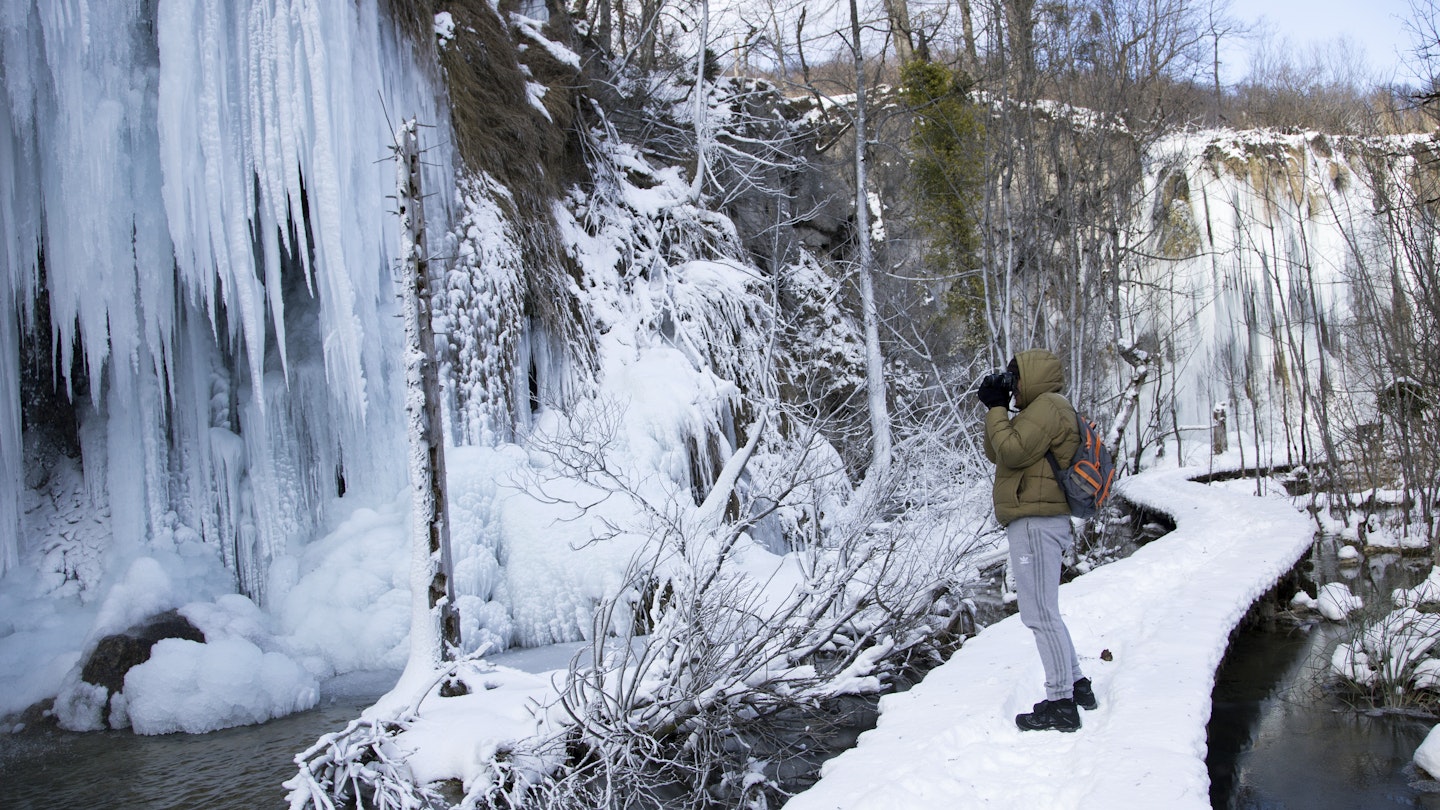
Much of Croatia is a snowy wonderland in the winter months – the most economical time of year to visit © ninopavisic / Shutterstock
Travelers have caught on to Croatia .
Once a relative bargain, this beautiful country has seen prices creeping up as more and more travelers discover its charms. Luxury hotels have been springing up at a rapid pace, particularly in some of the upmarket resorts along the Adriatic coast and on a few of the islands. At the same time, there’s been a surge in private apartments and family-run guesthouses, which are more affordable choices in Croatia if you’re watching each euro.
Start your budgeting with a large line item for your flights to the country, which can rise to mind-boggling levels as the summer season approaches. Yet once you arrive, you’ll find it surprisingly easy to travel around without spending too much.
Only if you read on, that is. Here are out top money-saving tips for exploring Croatia on a budget.
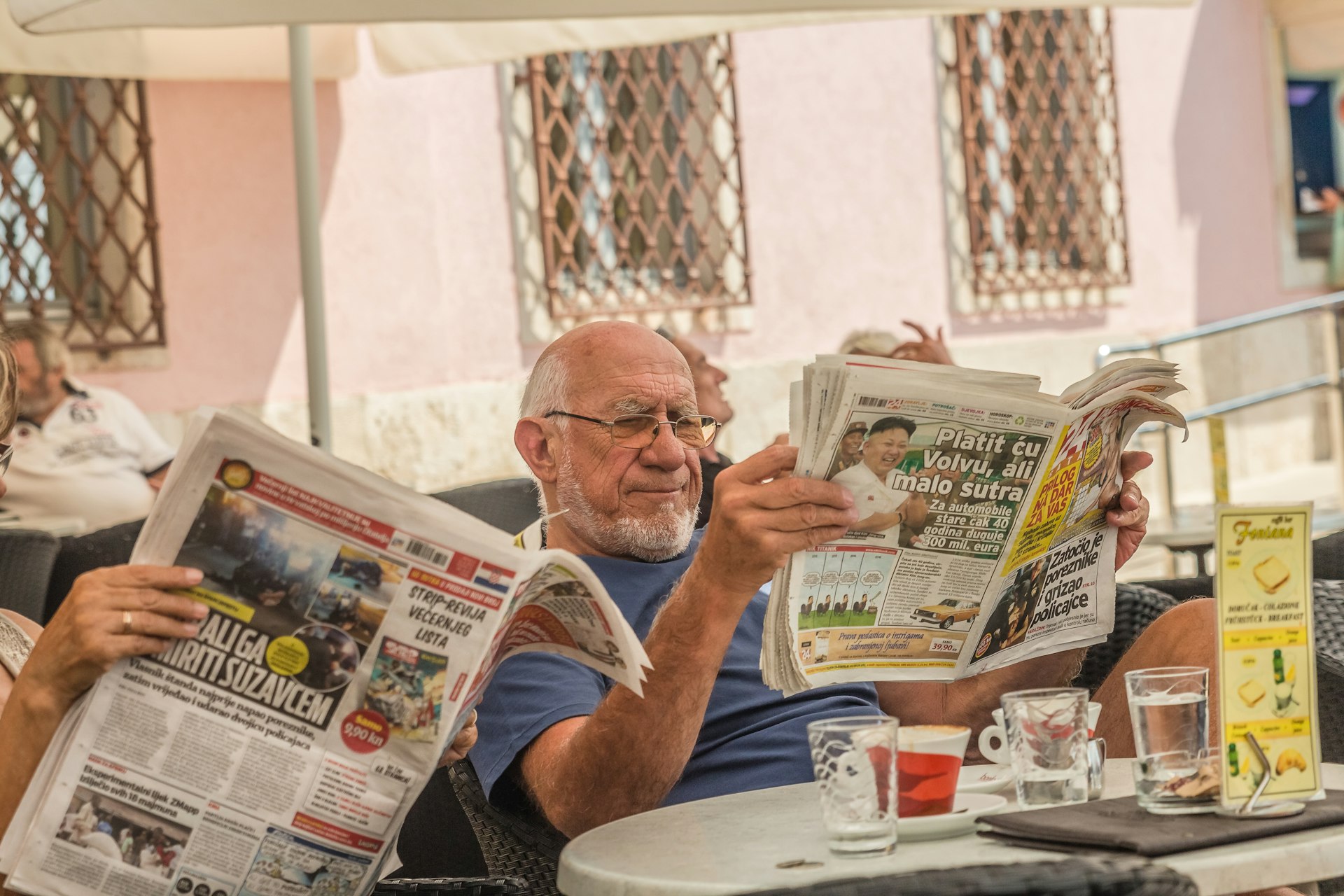
How expensive is Croatia? A guide to daily costs
- Hostel dorm bed: €35 per night
- Basic room for two: €75 per nigh
- Self-catering apartment for two: €95 per nigh
- Ticket on a city bus: €0.50–2.90
- Coffee: €1.60–3
- Sandwich: €4
- Dinner for two: €68 for two courses
- Beer at the bar: €4 for a half-liter of Croatian draft beer
- Breakfast slice of burek : €3.30
Be flexible about your arrival airport
From June onward, flights into Split start to soar – and no wonder, since the city is the gateway to some of Croatia’s most desirable islands , including Hvar , Brač and Vis . But Split’s runway isn’t the only one in the region – and you might be surprised by the fares you’ll find on flights into the airports at Zagreb , Zadar or Rijeka (which is actually on the island of Krk ).
Buses with Arriva from Zagreb to Zadar cost around €15; with Croatia Bus you can pay €30 for a one-way trip from Zagreb to Split, with occasional discounted seats for €15. There’s also the option of flying into cities in neighboring countries – Ljubljana in Slovenia , Budapest in Hungary or Trieste in Italy – and renting a car. In this region, you don’t have to drive far to get to an international border.
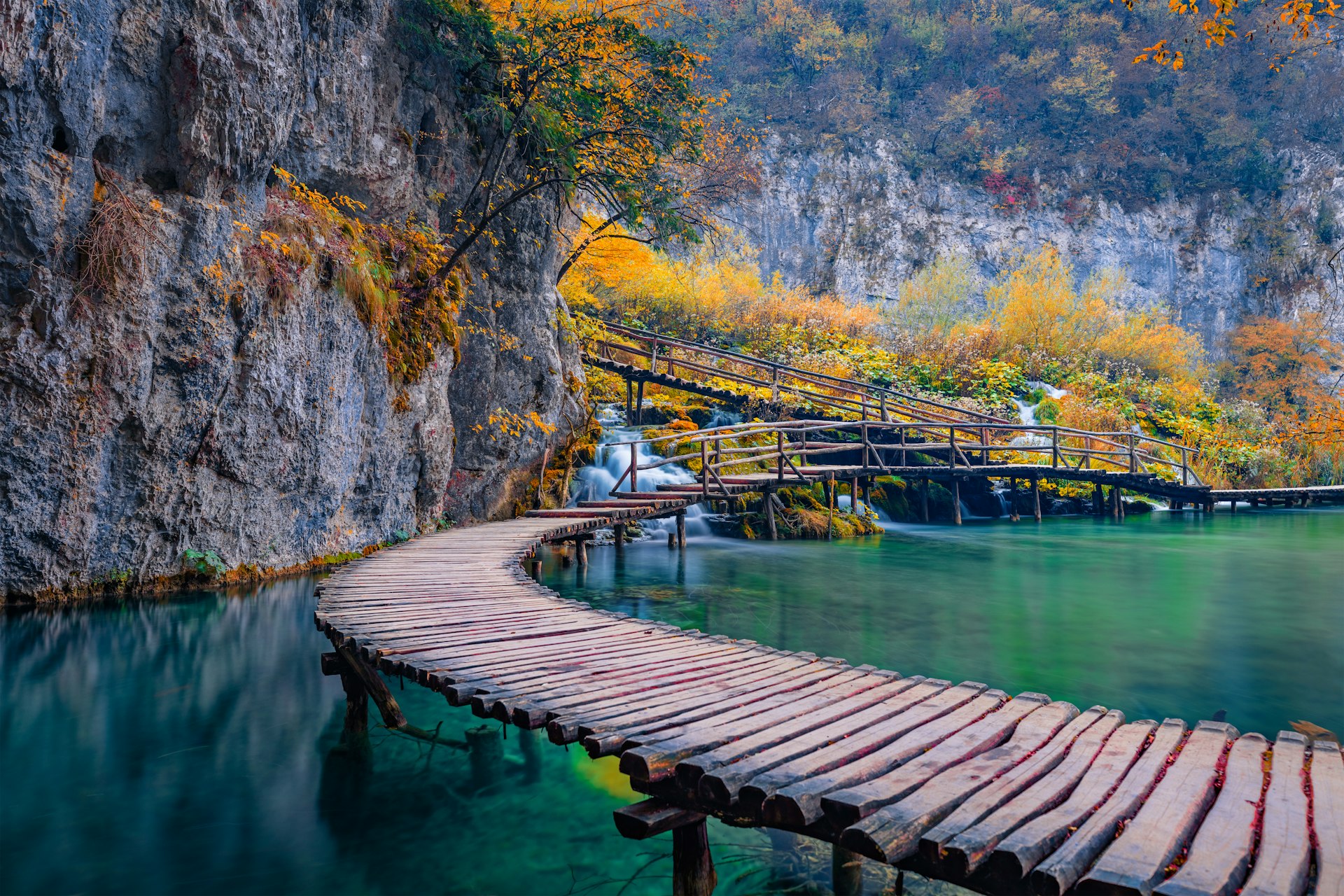
Visit outside of the summer months
High season in Croatia – July and August, and sometimes the second half of June – brings high prices, with accommodations and many attractions raising their prices in accordance with demand. Entrance fees to Plitvice Lakes National Park from June to September, for example, run around €40; the same experience is €25 in April, May or October. Even better yet, Plitvice in the winter becomes a snowy, magical place, and entry costs only around €10. Similarly, Krka National Park charges adults €40 for visits between June and September, but only €15 for April and May and €20 for October – with the best bargain of all being found January to March, November and December, when it costs just €7 to visit.
Save money on accommodation by staying a little further out
While it’s always tempting to stay in the center of town, such convenience usually comes at a premium. But a (very pleasant) walk of 15 or 20 minutes from a town’s center will usually snag you lower-priced accommodation options. Dubrovnik is a good example: rather than stay in the Old Town or just outside the city walls, look further out toward Gruž or Babin Kuk, both of which are easily reached by bus from the Old Town.
Swap a hotel room for an apartment
In recent years, the inventory of short-term apartment rentals in Croatia has swelled to meet growing demand. You’ll certainly save on the cost of food if you can do self-catering; some apartments offer the use of a shared barbecue. Many also include other useful free services such as bikes you can borrow.
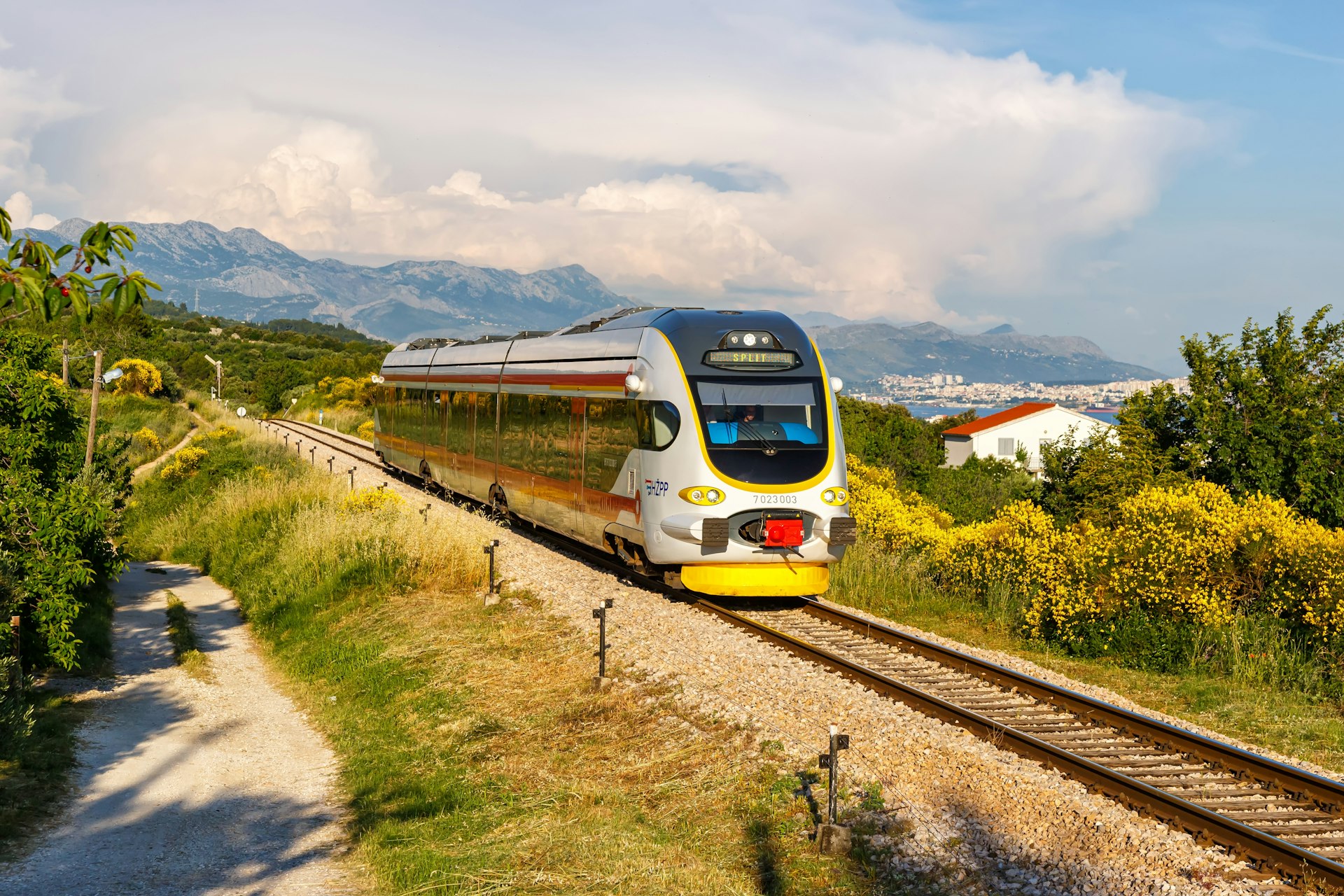
Croatia’s rail fares are a great value...
While it doesn’t reach the entire country, Croatia’s national railway company, HŽPP , offers an affordable way to get around parts of it. The regions around Zagreb are well connected, and trains do run from Zagreb to Split – though not further south, toward Dubrovnik. Still, factoring in a train leg for at least part of your journey will help keep costs down, given how reasonable the fares are: think €34 for a round trip between Zagreb and Split.
...As are the many long-distance bus services
Particularly along the Adriatic coast, Croatia’s bus network is as extensive as its rail network is limited. The only problem is trying to find the service you need among all the different companies, which provide everything from long-distance travel to tourist coaches. Arriva is a good place to start, as the company also offers international routes. Check the websites of the main bus stations, including those in Split and Zagreb , to get more information on timetables and tickets.
City buses are the cheapest way to get around town
Croatia’s urban buses can be astonishingly cheap: in Zagreb, a ticket can cost as little as €0.50. Generally, tickets are a few cents cheaper if you buy them from kiosks rather than the driver, who will take only cash. If you plan multiple journeys in the course of a day, a daily ticket can be – but is not always – cheaper.
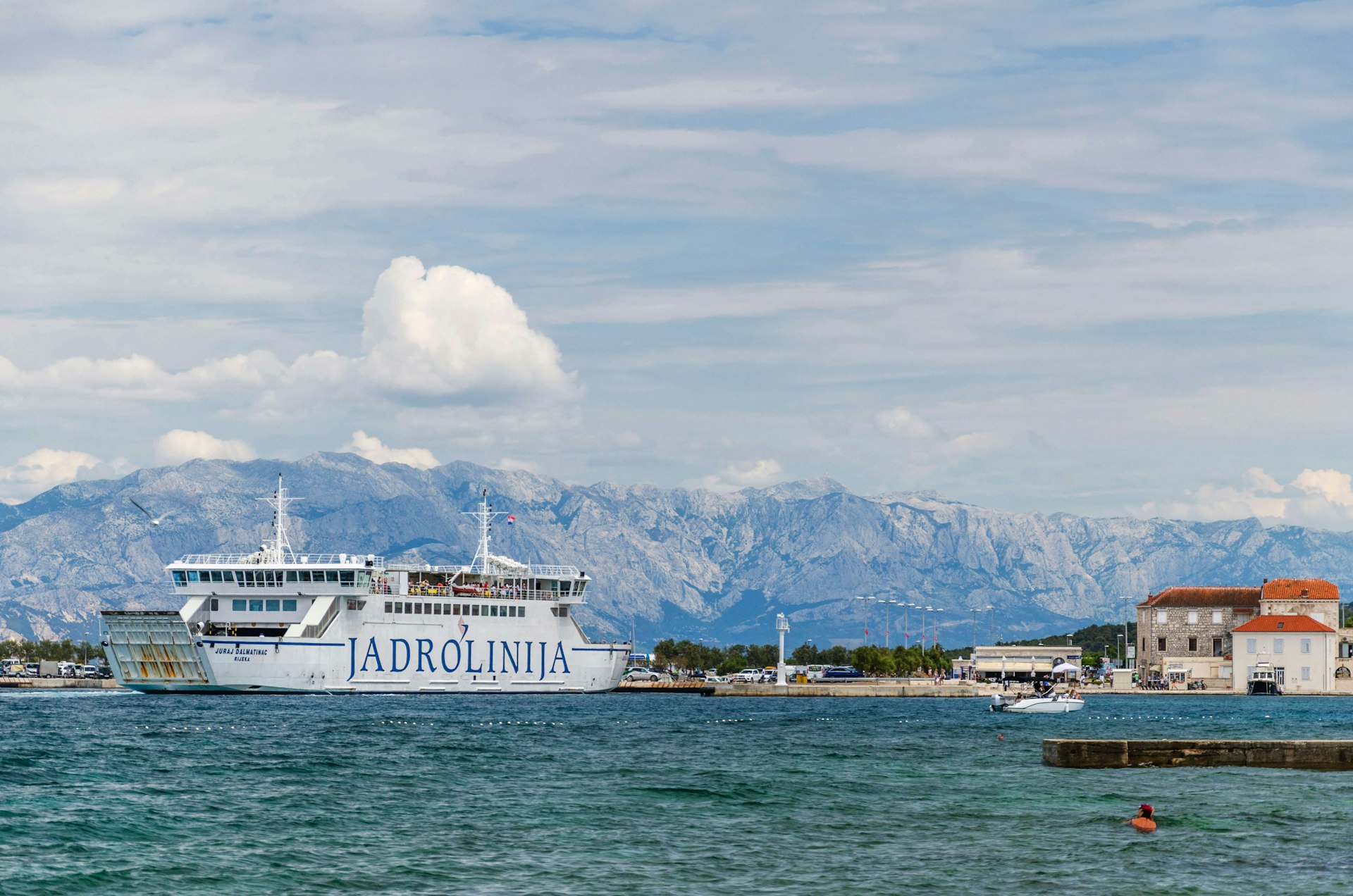
Passenger tickets on car ferries are slightly cheaper than catamarans
With a bit of planning, you can travel to Croatia’s inhabited islands easily and affordably, both from the mainland and between islands. The national ferry operator, Jadrolinija , runs car ferries as well as passenger-only catamarans. Catamarans are faster but sometimes more expensive, particularly in July and August. A regular car ferry from Split to Hvar costs around €6 per passenger, yet a catamaran would be over €7. If you plan on island hopping, these savings can add up.

Look out for unexpected restaurant charges
Croatia’s seafood is some of the best in Europe – and you should expect pay a premium for such high quality. If you’re on a budget, you might want to pass on the grilled fish that many restaurants sell by the kilo. You won’t know the exact price until the bill comes – and this can be an unpleasant surprise. There will be other fish and seafood options on the menu that have a set price, so at least you’ll know what you’re paying.
Also bear in mind that many restaurants automatically charge a couvert – rather like a cover charge – for each diner, about €4 a head. This usually includes a basket of bread. You could try to wave away the bread and insist not to be charged for it, but this doesn’t always work.
Make a marenda one of your meals
Marenda is like a Dalmatian version of brunch, a hearty meal eaten before noon that harks back to the days when people would have been working since very early morning and needed a filling break. Nowadays, you’ll see marenda menus that are served only at lunch – some of the cheapest meals to be had in Dubrovnik.
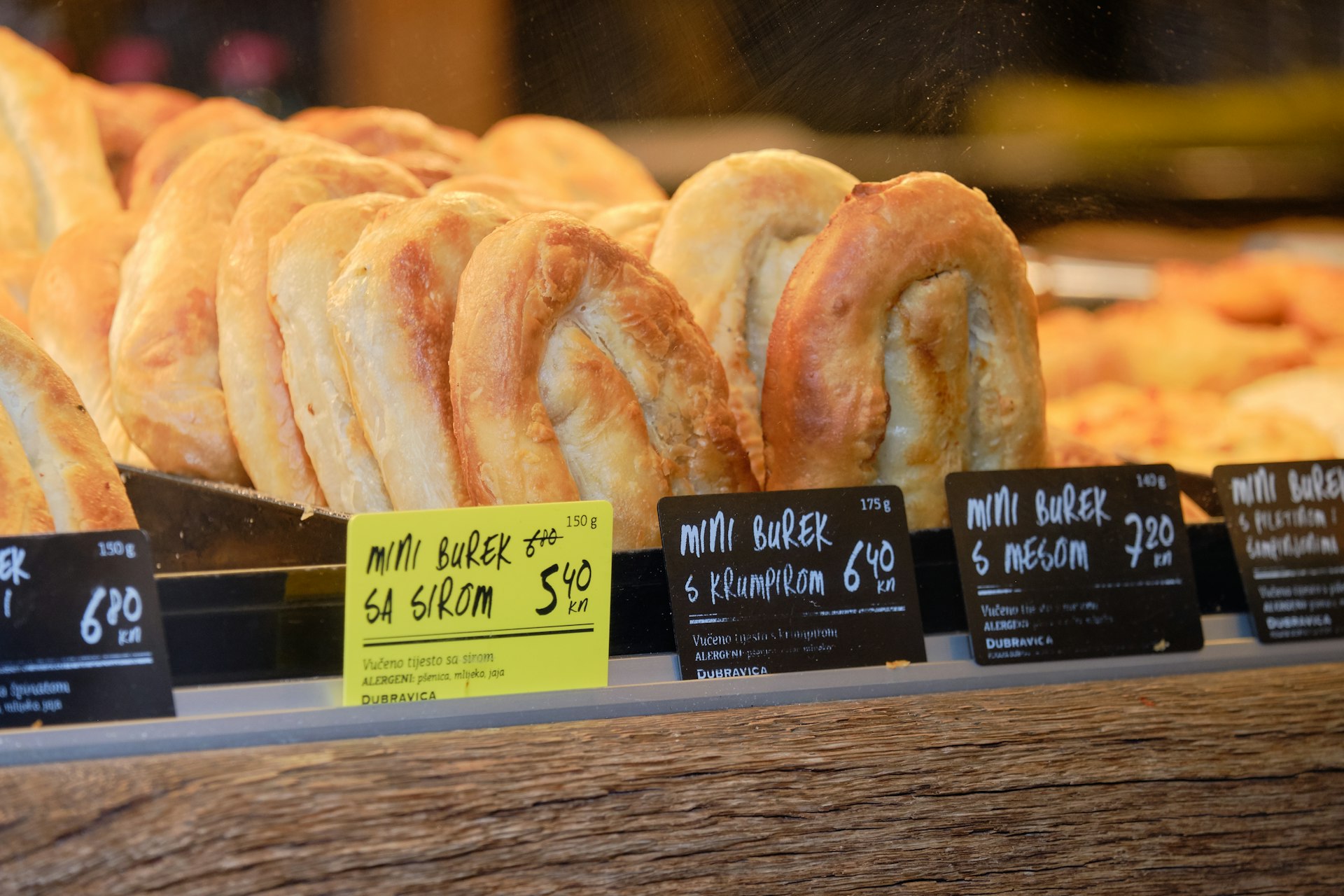
Snack on burek from local bakeries
Picked up from a bakery ( pekarnica ), these filo pastries pies are a cheap and delicious way to kick off the day and keep you going till lunch. Burek can be filled with cheese, spinach (sometimes both) or meat, and taste good cold as a picnic snack.
Drink the tap water
Tap water in Croatia is perfectly drinkable, and you can save money as well as help reduce waste by avoiding bottled water in stores and restaurants. Ask for a glass of obična voda .
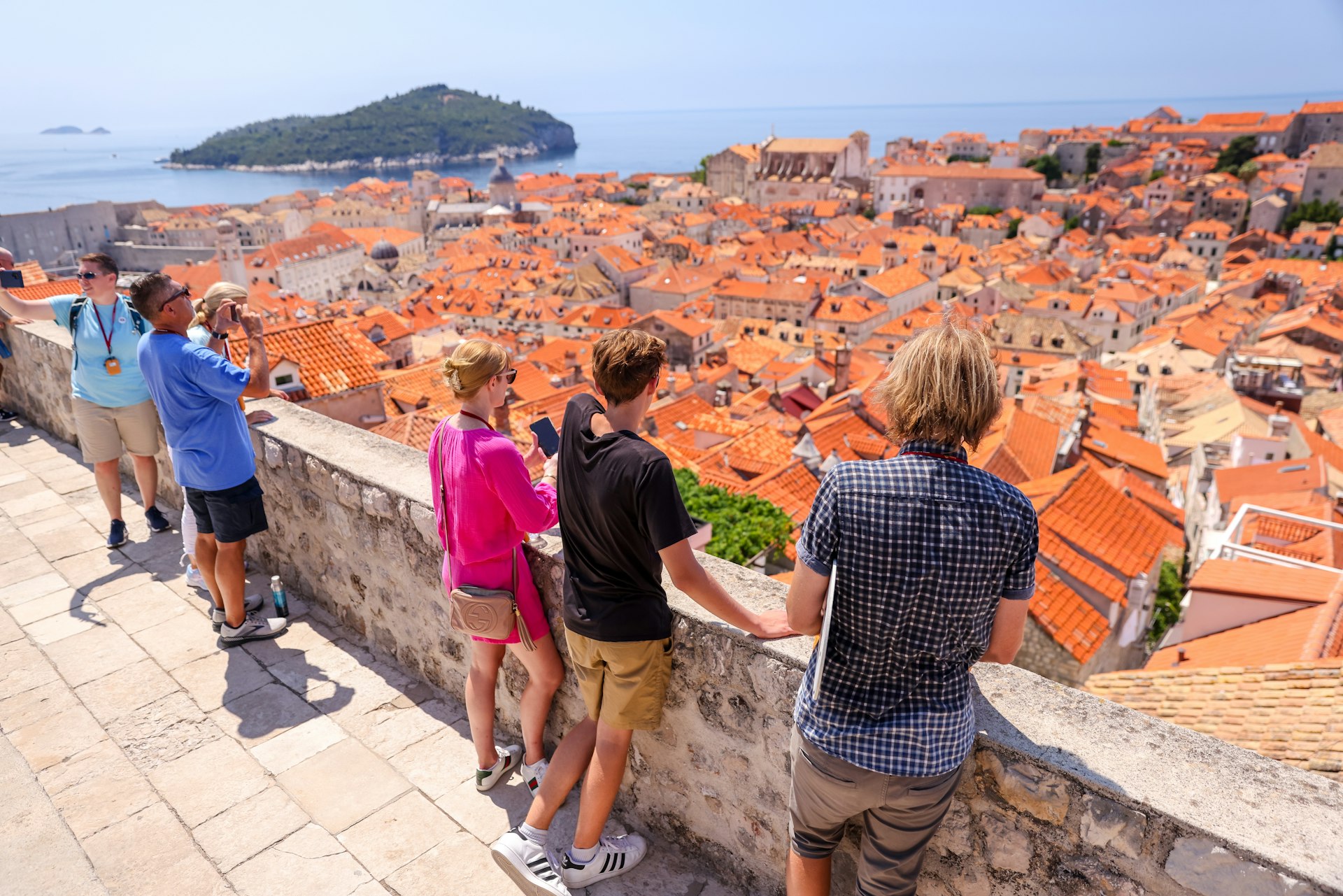
Ask about student discounts
If you have an up-to-date International Student Identity Card (ISIC), the savings can be huge. Rather than spend €35 to walk Dubrovnik’s city walls , for example, you’ll be charged only €15 if you present your card when buying a ticket.
City passes don’t always provide good value
While a city pass that offers free entry to certain attractions, free public transportation and discounts in shops and restaurants can look good on paper, sometimes you’ll need to spend your entire trip visiting all of the listed attractions before you achieve any savings. Do the math before you invest in any multi-site pass, as ofen à la carte tickets come in cheaper.
This article was first published June 2022 and updated March 2024
Explore related stories

Budget Travel
Mar 26, 2024 • 6 min read
While on the rise in recent years, Puglia is still a relatively undiscovered destination for foreign visitors. Italians, though, have known for a very long…
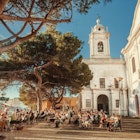
Jan 1, 2024 • 10 min read

Jun 16, 2023 • 7 min read

May 23, 2023 • 6 min read
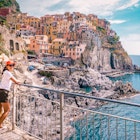
May 20, 2023 • 7 min read
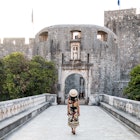
Apr 15, 2023 • 7 min read

Apr 28, 2022 • 8 min read

Feb 12, 2022 • 6 min read

Jan 27, 2022 • 7 min read
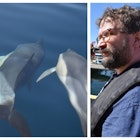
Nov 13, 2019 • 10 min read

Croatia Travel Budget: Is Croatia Expensive?
Wondering how much a trip to Croatia costs, and if Croatia (or more accurately, Dubrovnik) really is expensive to visit? This Croatia travel budget guide is for you!
The travel budget for Croatia outlined here reflects our exact expenses during a 2 week trip to Croatia in July–in other words, the most expensive time to visit the country.
This trip to Croatia was characterized by expensive days (excursions, lodging that was on the pricier side for us at the time), balanced with very inexpensive days–for one entire week in Jelsa, we paid for almost nothing outside of our lodging and groceries.
The Croatia travel budget outlined here represents our time spent backpacking the country on what we would consider a flashpacker budget. Basically, no to dorm rooms, yes to a/c, and no to major luxuries.
We visited Split , Krka National Park, Hvar , and Dubrovnik during this trip, focusing our time on Croatia’s popular Dalmatian coast.
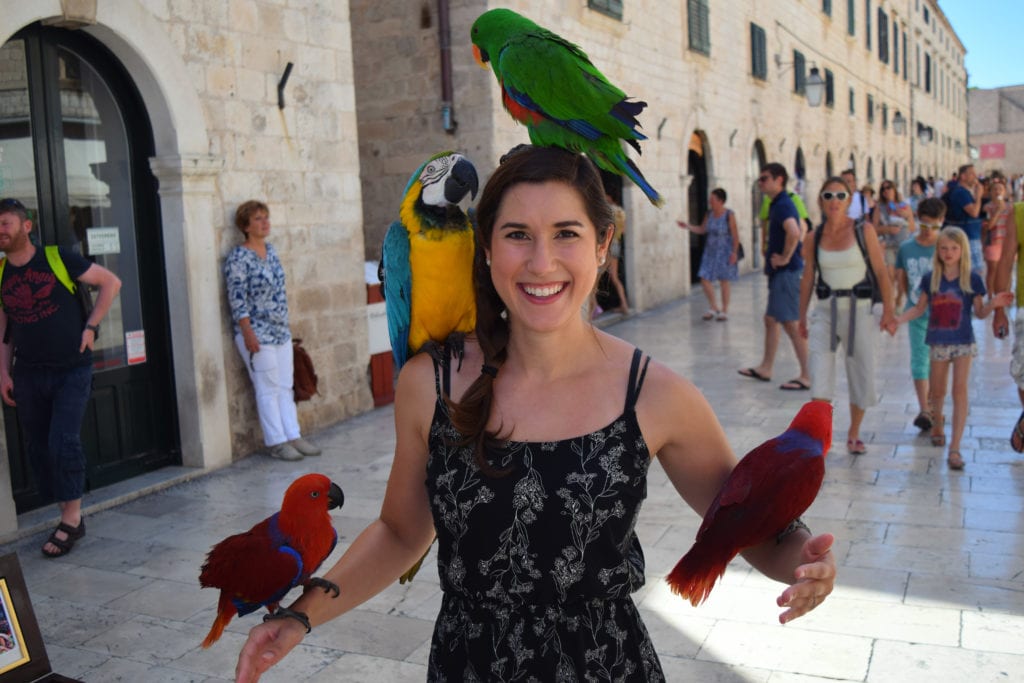
Some links in this post may be affiliate links. If you make a purchase through one of these links, we may earn a small commission at no extra cost to you. Please see our disclosure policy for more detail.
The balance worked out well: our travel budget for Croatia ended up being right on target.
We spent 13 full days in the country, averaging a total Croatia trip cost of $107.12/day, or $53.56 per person, per day. This added up to a total cost of $1392.61.
All expenses are listed in USD unless otherwise noted, and, as usual for our travel budget roundups, we don’t include the costs of entering or leaving the country here, as those expenses can vary so dramatically depending on your starting point (in our case, this visit to Croatia was part of our planned 6 month round the world trip ).
Before getting into our detailed breakdown, it’s also worth noting that we have visited Croatia several more times since this trip (it’s one of our favorite countries in the world!), and though we don’t tend to travel on as tight of a budget anymore, a trip of this nature is still feasible on a similar budget.
However, prices for certain popular tourism activities–such as walking the walls in Dubrovnik or visiting Plitvice Lakes National Park –have risen dramatically. To capture these overall trip costs now, we’d recommend visiting outside of the absolute peak of July and August if at all possible!
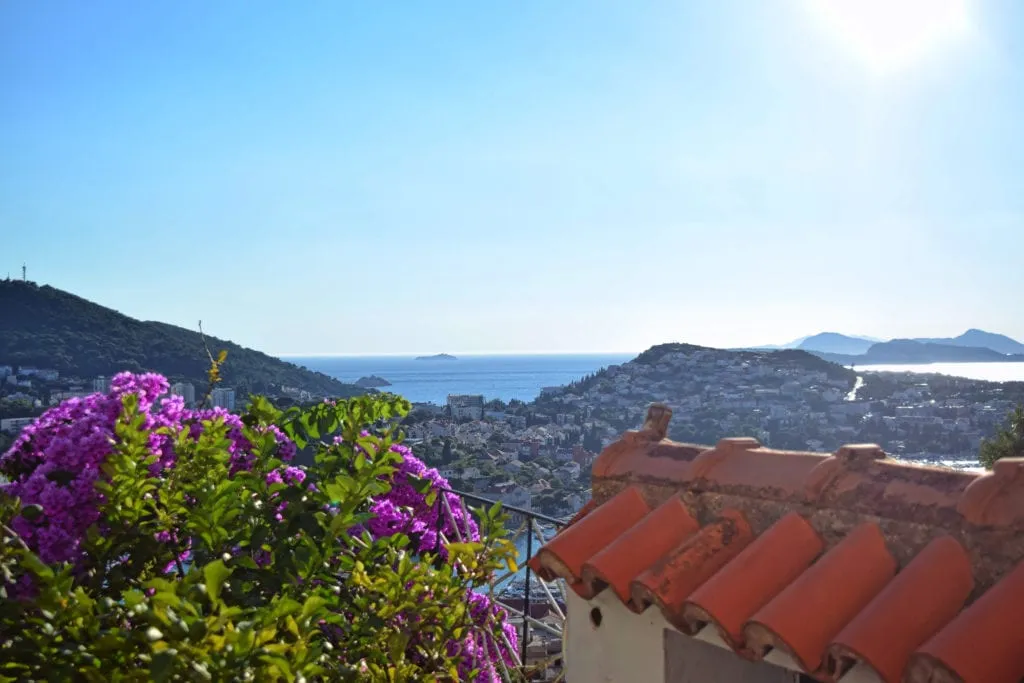
Our Lodging Costs in Croatia
Total: $799.81 for 14 nights.
At an average of $57.13/night, lodging ate up a bigger chunk of our travel budget for Croatia than in our previous stop of Slovenia .
Split, the island of Hvar , and Dubrovnik are all tourist hot spots that we were visiting during the high season, but compromising a bit on location for our lodging helped keep costs reasonable, even if it did keep us away from the city centers.
Our Transportation Budget in Croatia
Total: $102.29.
Considering that we had 3 base destinations during our time in Croatia, and lodging in both Split and Dubrovnik that required public transportation to reach their city centers, transportation costs ended up being fairly reasonable.
The ferry between Hvar and Split cost less than $10/person each way, and the bus from Split to Dubrovnik cost less than $20/person.
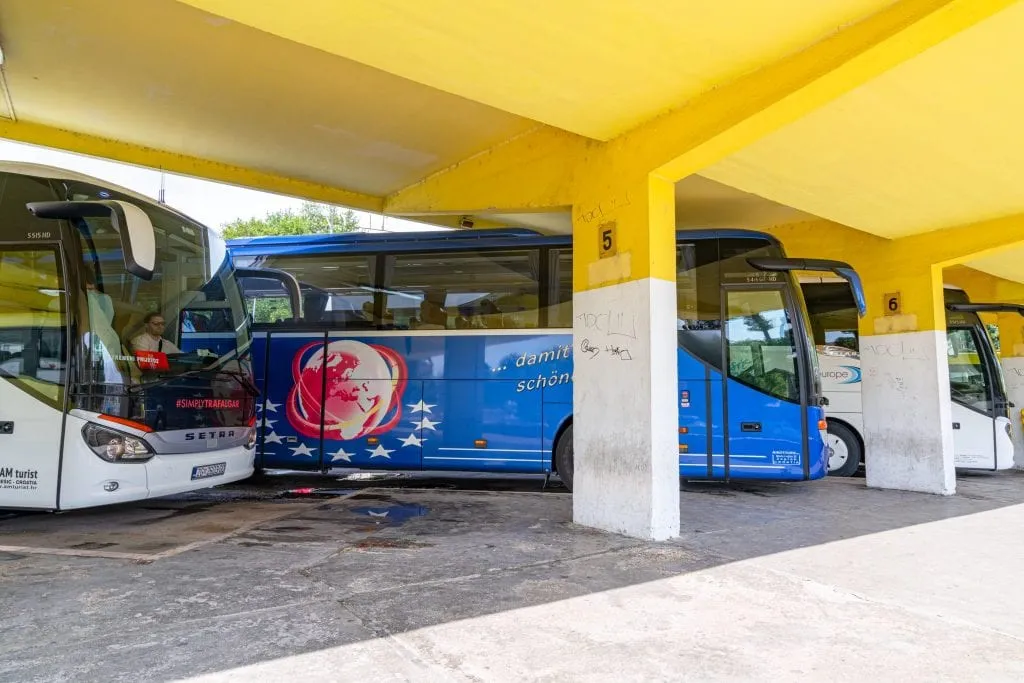
Our Restaurant Expenses in Croatia
Total: $105.82.
With no kitchen access in Split and limited kitchen access in Dubrovnik, we had more restaurant meals in Croatia than in many of our European destinations.
We compensated with several rounds of street food that generally ran between $3-4 per person–the prices felt quite budget-friendly for Croatia, but feel laughably expensive to type out while sitting here in Thailand.
Our Grocery Expenses in Croatia
Total: $103.83.
Groceries were very reasonable in Croatia, even in tourist destinations–$103.83 fed us every meal during our week in Jelsa (excluding the fresh garden produce that our Airbnb host was very generous with), about half our meals in Dubrovnik, and a couple of meals in Split.
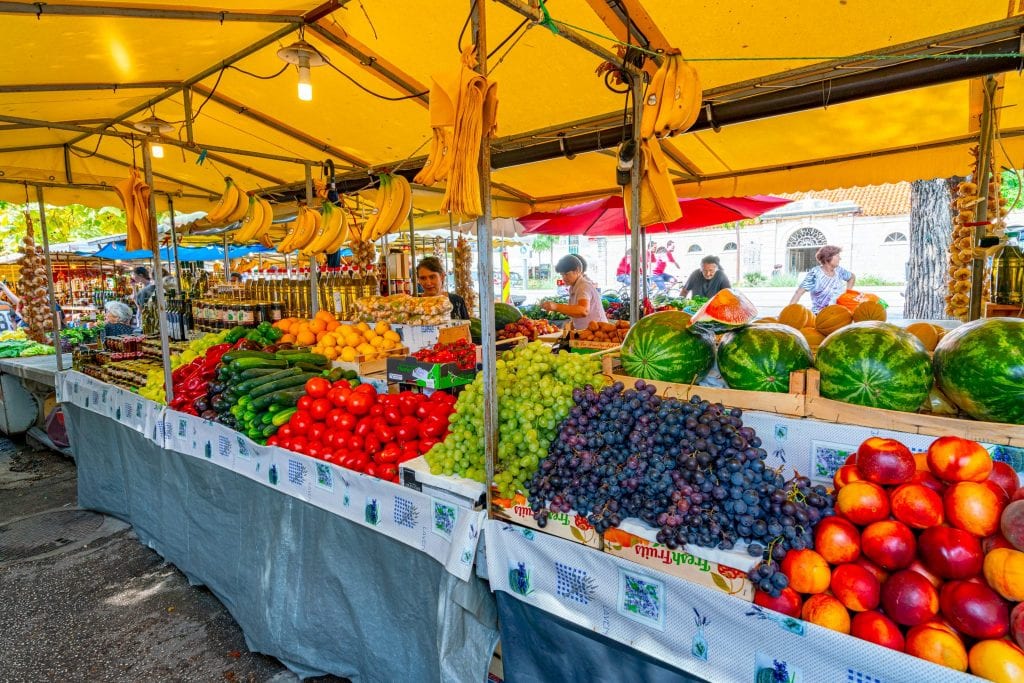
Our Tour + Excursion Travel Budget for Croatia
Total: $238.89.
Our Croatia travel budget was definitely impacted by our liberal use of excursions, but we don’t regret it–there was just so much to do!
The bulk of our expenses in this category was eaten up by a day trip to Krka National Park from Split (just over $50/person), a one day Dubrovnik Card (about $25/person), and our kayaking excursion in Dubrovnik (about $33/person).
The kayaking tour was not only a bargain, it was our favorite excursion of the entire European leg of our trip.
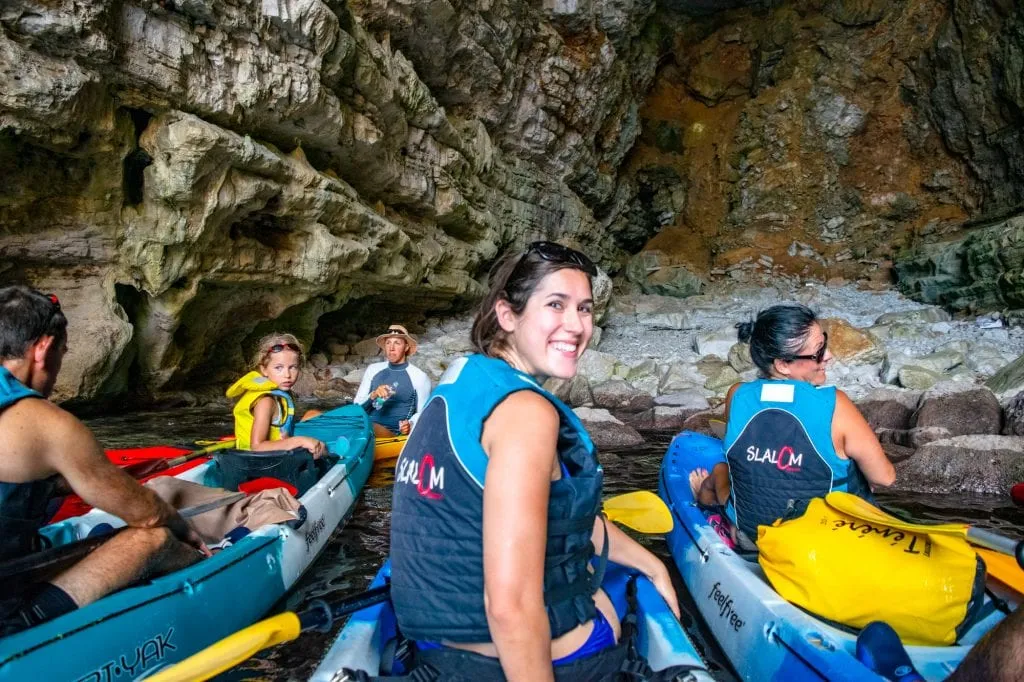
Miscellaneous Trip to Croatia Costs
Total: $41.97.
Several bathroom visits and forgettable odds and ends ended up in this category, but the most notable expense was our decision to spend about $20 and get a couple of simple pairs of swimming goggles in Jelsa.
They greatly improved our time in the Adriatic Sea while on Hvar, and I wish we had packed them to begin with. Now we have these we take with us.
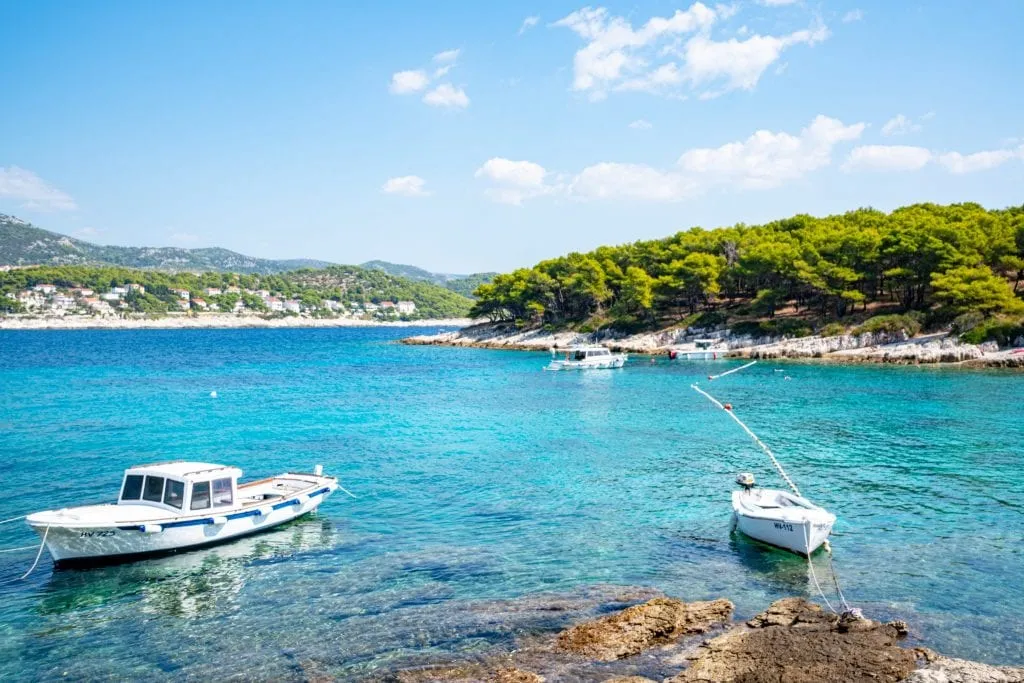
We were very satisfied with our travel budget for Croatia, though it’s debatable whether or not the trade-off for lodging that was further away from attractions in exchange for cheaper prices was worth it.
So, is Croatia expensive? Compared to nearby destinations like Piran , Sarajevo , and Kotor , absolutely–especially in the high season, and especially in ever-popular Dubrovnik.
However, it’s worth it: years after this trip (and with several more trips to Croatia under our belts), Croatia remains one of our favorite places in the world.
Visiting during the shoulder or off-season is a great way to limit your Croatia travel budget (we loved visiting Dubrovnik in February, and Plitvice and Hvar in September!).
Mixing in less-iconic destinations like those on the Istrian peninsula or even the capital city of Zagreb is also fantastic for lowering your overall trip to Croatia cost.
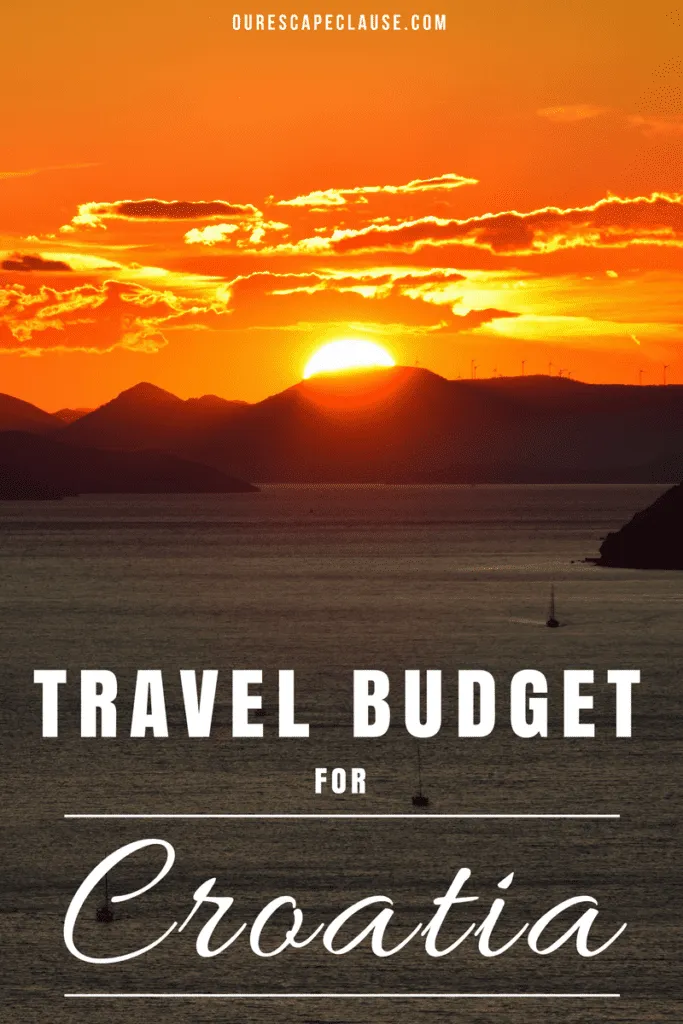
About Kate Storm

In May 2016, I left my suburban life in the USA and became a full-time traveler. Since then, I have visited 50+ countries on 5 continents and lived in Portugal, developing a special love of traveling in Europe (especially Italy) along the way. Today, along with my husband Jeremy and dog Ranger, I’m working toward my eventual goal of splitting my life between Europe and the USA.
6 thoughts on “Croatia Travel Budget: Is Croatia Expensive?”
Hi, Jeremy and Kate@ I was happy to found Croatia on your must see list. It is in my mind for s long timec to visit, and now, because of you, I can read your review for my next holiday in Croatia. I wondered, if, except your blog, you have also a vlog on You Tube. I hope you are ok, during your holiday in USA. Have a great time. Keep in touch, Cris
Hi Cris! Croatia is truly magnificent, hope you have a wonderful trip there!
We don’t do any vlogging or Youtubing right now, and don’t have plans to change that, but you never know what the future holds!
I’m traveling to Dubrovnik next week and was hoping to do a kayak trip. Just wondering which one you did- where did you go from, how long was it, where did it take you etc Thenks!
We took our tour back in 2016 and just booked it in person from a saleswoman in town, so I don’t know the exact name. It took us around Lokrum Island, briefly into some caves, and into a cove to swim and cliff jump. I believe it was a 2-3 hour tour, give or take. The one I linked here appears to follow the same itinerary–it’s a pretty popular one! Be prepared for aching shoulders, but it’s worth doing in my opinion.
Hi Laura: Thanks for your blog and great tips. We are a Canadian couple in our youthful 60’s. My husband is very active, skis, bikes, hikes. I now have a 1 knee issue and I am awaiting more knee surgery. I use a cane, wear a brace. I have booked a month in Aug. – Sept. 2022 trip to Croatia for us. We will have a car to drive. I have booked hotels, apts. in many cities. Excluding Dubrovnik as we were there before. We need input on Brac, Hvar and Korcula islands. To get to by ferry car on Brac, Hvar and walk on in Korcula. We are driving to Pula and throughout to Split and many areas between. Any suggested places, seeing heritage sites and your thoughts would be appreciated. Thank you. Regards Nancy Bradbury
Hi Nancy! Sadly, we haven’t been to Brac or Korcula yet ourselves–hopefully before too long!
We do have a whole post on Hvar, though! We’ve been twice and love it: https://www.ourescapeclause.com/best-things-to-do-in-hvar-croatia/
Leave a Comment Cancel reply
Is Croatia Expensive: Croatia Travel Costs Revealed
Croatia has become increasingly popular travel destinations in the last years. However, many travelers to wrongly think that Croatia is cheap destination to visit.
This can’t be further from the truth. Croatia isn’t budget-friendly destination any longer, although it isn’t overly expensive either. It is still cheaper than neighboring countries to the west and north like Italy, Austria, or France. However, Croatia is more expensive than other Balkan countries like Bosnia, Montenegro, Serbia, Bulgaria, or Macedonia. And even to a certain extent Croatia is more expensive than Slovenia.
So if you are wondering is Croatia expensive and trying to figure out your Croatia trip cost, in this post we share various expenses and prices in Croatia in order to help you with your Croatia budget.
Flights to Croatia and the accommodation take the biggest part of your total Croatia travel costs. Since the pandemic and inflation struck, the flights to Croatia doubled in price. The same happened to the accommodation prices. With the exemption of luxury hotels, that has always been expensive, the rest of accommodation had their prices increase 30-50% easily in the last two years.
The same happened to prices of the meals in Croatia, and to smaller extent to excursions, car rental, public transport, and parking fees.
On average, if you travel in high season, expect your 7-day trip to Croatia to cost 2.000 € for a solo-traveler, 3.650 € for a couple, and 6.300 € for a family of four. This calculation is based on staying at Airbnb, using public transport if you are a solo traveler, or a couple, and renting a car if you are a family of four, going on two excursions during your 7 day stay, and eating one meal out in a average tourist restaurants.
Prices of overseas international flights to Croatia in high season are anywhere between 1000 € (from the USA and Canada) up to 1800 € (from Australia). Accommodation rental in Croatia in high season costs anywhere between 120 € to 250 € a day. We have budgeted your accommodation at 90 € for a solo traveler, 120 € for a couple, and 180 € for a family of four. We have also budgeted 60 € a day per person for various activities, food and drinks, public transport, internet, and other minor expenses. We believe that this budget can afford you nice vacation in Croatia. However, we didn’t budget any splurge, like expensive meals in fine dining restaurants, or late-night cocktails at popular bars.
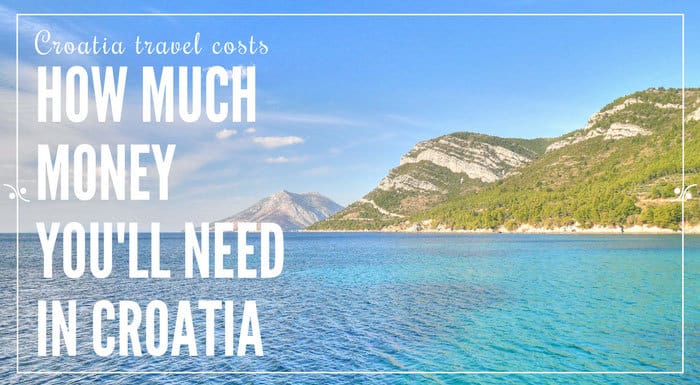
Table of Contents
Is Croatia Expensive?
The short answer is Croatia isn’t expensive! But before you jump up of happiness, let’s also say that Croatia isn’t cheap to visit either. At least not dirt cheap, as many people imagine.
The prices in Croatia are average. Some things you’ll find quite expensive, other things you will find cheap. Gas, cigarettes, alcohol, bakeries, meals in the restaurants, you’ll find affordable and cheaper than in many European countries. On the other hand, some grocery items are super expensive like bottled water, soft drinks, or coffee. For example, I pay around 5 € for a 500 g of Lavazza coffee in Italy, but in Croatia it costs double. As simple as that! Many prices in Croatia will simply match and be comparable with what you play back home.
Below you will find a breakdown of all Croatia prices. That should answer your question if Croatia is expensive or not!
Accommodation and Hotel Prices in Croatia
The tourist infrastructure in Croatia is very good. From budget dorm rooms, and camping pitches to vacation rentals, villas, and top-notch hotels, Croatia’s accommodation offer is wide and varied, and there is something for every type of traveler.
However, whether you travel on a budget or you like to live it up like a celebrity, the costs of accommodation in Croatia will make the largest part of your travel budget.
Below we compare the average cost of a weekly stay for two persons in various types of accommodation in coastal Croatia, and in various seasons.
As you can see in the table above, in high season , accommodation rates in Croatia vary a lot. You can expect to pay anywhere between 50 € and 550 € a day depending on the type of accommodation you choose for your stay. Now, that’s a pretty wide range, and it shows that Croatia has something to offer for all types of budgets and travel styles.
Croatia hotel prices range from 70 € a night for a 2-person room with breakfast in a 2-star hotel in April, to 900 € a night for a stay in the best 5-star luxury hotels in Croatia , in a double room with breakfast.
If you are traveling in a low season, budget at least 70 € a day if you will be staying in Airbnb, or at least 120 € for a stay in a decent hotel in popular destinations in Croatia .
In shoulder season, your accommodation budget should be at least 100 € for an apartment rental in Croatia , and not less than 170 € for a good hotel.
And in the high season, at least for the last three years, since the pandemic and inflation changed completely the accommodation landscape in Croatia, prices are sky-high, and absolutely unpredictable. Last summer, a friend was renting a studio in Porec for 400 € a day. That was a price of a 5-star hotel in pre-pandemic time. Crazy!
However, even at the moment of writing this post, I could find a double room in a 5-star hotel in Dubrovnik and in Split for 350 € a night. Now, more than ever before, it is important to book your accommodation as early as possible, especially for the high season, and other high demand period. As a rule of thumb, if visiting Croatia in high season, budget at least 150 € a day for an Airbnb stays in Croatia, and not less than 250 € for a good hotel in Croatia.
Our tips about how to save on accommodation in Croatia
- Avoid traveling to Croatia in July and August, choose instead June or September
- Prices are the most affordable if you stay in a fully-equipped apartment.
- Price shop : prices of accommodation change with a demand; book early, but opt for a flexible rate, and watch closely your accommodation choice ; the closer the date of your holidays, the more firm your booking can be; if you find a better deal in another property or better rates with less flexible conditions, take the opportunity and re-book your accommodation.
- Use the Booking.com site to compare the prices of accommodation in Croatia. They have a user-friendly interface, simple price calculations, and by far the largest choice of accommodation in Croatia.
How Much Does it Cost to fly to Croatia
Transportation cost make a large part of a total Croatia trip costs. If you are traveling from the USA, Canada, or Australia, you won’t find lots of direct flights to Croatia. Prior to COVID-19, American Airlines flew from Philadelphia to Dubrovnik, Delta Air flew from NY JFK to Dubrovnik, and both, Air Canada and Air Transat flew from Toronto to Zagreb. However, now only Air Transat has direct flights between Toronto and Zagreb. And the prices start at 1.000 € per person.
So, more often than not, you’ll need to fly to another European hub, like London, Frankfurt, Amsterdam, Paris, Rome, or Vienna, and then take a connecting flight to Croatia. This is not a problem, and it can be cheaper than flying directly, as from these European hubs many low-cost companies fly to major Croatian coastal towns (Zadar, Split, Dubrovnik, Rijeka, and Pula) from April to October. Low-cost companies, like everywhere else, offer very cheap rates the earlier you book your flights, and rates gradually increase as the seats fill up. So if you plan on flying to Croatia, secure your flight as early as possible.
Costs of buses in Croatia
The most affordable way to travel around Croatia is by bus. Buses are also the single most popular public transport in Croatia.
There are lots of bus companies operating in Croatia. The prices of bus fares between the cities depend on the time of the day, and the route it takes. The early morning or night buses are cheaper than daytime buses.
A one-way ticket from Zagreb to Split costs anywhere between 130 Kn to 170 Kn per person. You can check the departures and book a seat online through the GetYourGuide website, or for all the buses departing from Zagreb through the Zagreb Bus Station website .
Examples of one-way bus ticket prices in Croatia (per person) in 2014:
- Zagreb-Split: 130 to 170 Kn (18€ – 22€)
- Zagreb-Dubrovnik: 210 to 250 Kn (25€ – 30€)
- Zagreb-Pula: 115-185 Kn (15€ – 20€)
- Split-Dubrovnik: 100 to 140 Kn (15€ – 20€)
- Pula-Rovinj: 30 to 45 Kn (4€ – 6€)
Ferry prices are affordable as long as you don’t travel by car. While passenger tickets tend to be rather cheap, the price for a car (should you happen to have one) is very high. It adds quite a bit to your total Croatia travel costs.
Examples of one-way ferry ticket prices in Croatia in 2014:
- Split-Brač (Supetar): adults: 33 Kn (4.5€); car: 160 Kn (22€);
- Split-Hvar (Stari Grad): adults: 47 Kn (6.5€); car: 318 Kn (45€);
- Split-Vis: adults: 54 Kn (7.2€); car: 370 Kn (;
- Orebić-Korčula (Dominče): adults: 16 Kn (2.2€); car: 76 Kn (10€);
- Brestova-Cres (Porozina): adults: 18 Kn (2.4€); car; 115 Kn (15.5€);
Train transport in Croatia is very limited. And trains are generally very slow. There are trains connecting Zagreb with Split to the south, Rijeka to the west, and Osijek to the east.
Examples of one-way train prices in Croatia in 2014:
- Zagreb-Split: 190 Kn (25.4€)
- Zagreb-Rijeka: 175 Kn (23.5€)
- Zagreb-Osijek: 205 Kn (27.5€)
Travel by car is by far the best way to travel around Croatia. However, it’s also the most expensive one, especially if you need to rent a car.
Fuel cost In July 2014, the price of fuel was 10,89 Kn (1.45€) for Eurosuper and 10,03 Kn (1.35€) for Euro diesel. Prices change weekly.
Toll highways, bridges, and tunnels Ticket system toll highways in Croatia are new, comfortable, and fast, but expensive. A one-way trip from Zagreb to Split will cost you 174 Kn (23.5€) . If you travel further south to Ploče (the last motorway exit – Karamatići) it will set you back 222 Kn (30€). From Zagreb to Rijeka , expect to pay 70 Kn (9.4€) each way.
Besides motorways, tolls apply to some bridges and tunnels. A bridge to Krk you’ll pay 35 Kn two ways (4.7€). The tunnel Učka that you pass driving to or from Istria will set you back 29 Kn (3.9€). From the Kaštel , a Slovenian-Croatian border crossing, to Pula the highway costs 41 Kn (5.5€).
Car rental Car rental in high season , just like accommodation, comes with a high price tag, and brings up your Croatia travel costs. Daily rental with a full insurance package and unlimited mileage starts around 400 Kn (54€) for a mini car category (ex. Nissan Pixo), economy car (ex. Polo) goes for 470 Kn (65€), intermediate car category (ex. Audi A3) you’ll pay around 550 Kn (75€), renting a station-wagon will set you back 630 Kn (84€) per day.
In shoulder season , car rental is more affordable. In September for example, you’ll rent a mini category car for as low as 125 Kn (17€), economy car for 140 Kn (19€), intermediate for 360 Kn (48€), while a station-wagon will set you back 380 Kn (51€).
Croatia Travel Costs: Food & Drinks
Restaurants and bars.
Being from Canada, I’ve always found that restaurants in Croatia are expensive. Anyways, when talking with my north-European or British friends, they find it affordable. The truth is probably somewhere in the middle. You can eat well in Croatia for as little as 20 to 40 Kn. You can read all about that in our post about Local, delicious and cheap eats in Croatia under 6 € .
Light meals go for 35 Kn to 60 Kn (5-8€). Light meal can include a plate of pasta, risotto, mussels a la buzara , fried calamari, chicken breasts with a side dish, and alike. Fish and steaks are generally the most expensive. Fish is charged by kilo, and you can expect to pay around 350 Kn (45€) per kilogram. Portion is usually 330 gr. Expect to pay around 140 Kn (19€) for a steak. If you like wine, ask to taste restaurant’s house wine. It’s usually very decent wine, and the price is much lower than any bottle you can order. This will help you keep your Croatia travel costs in line with your budget.
Prices of drinks in bars vary a lot depending on the destination (Dubrovnik and Hvar being the most expensive), micro-location (the closer to the popular attractions, the more expensive it gets). We’ll skip those extreme places for now, and focus on average prices in bars and cafes in Croatia.
- Cocktails: 35 Kn – 60 Kn (5-8€)
- A bottle of wine: 120 Kn – 280 Kn (16-40€)
- A glass of wine: 9 Kn – 26 Kn (1.2-3.5€)
- Espresso: 7 Kn – 10 Kn (0.9-1.4€)
- Macchiato (coffee with milk)/ Cappuccino: 10 Kn – 14 Kn (1.4-1.9€)
- Cafe Latte: 14 – 20 Kn (1.9-2.7€)
- Mineral / Still water: 12 Kn – 15 Kn (1.6-2€)
- Soft drinks: 14 Kn – 20 Kn (1.9-2.7€)
- Alcoholic beverage: 22 Kn – 28 Kn (2.9-3.8)
- Local beer 0,33 L: 14 Kn – 20 Kn (1.9-2.7€)
- Imported beer 0,33 L: 25 Kn – 40 Kn (3.4-5.5€)
A small treats by the beach cost:
- Ice-cream: 5 – 10 Kn (0.7-1.4€) for a scoop; 8 Kn – 15 Kn (1-2€) for a Nestle or Ledo cornet;
- French fries: 12 Kn – 25 Kn (1.6-3.4€)
- Crepes: 12 Kn – 20 Kn (1.6-2.7€)
Green markets, supermarkets and bakeries
The cheapest stores to get your groceries are supermarkets. Croatian supermarket chains, like Konzum and Plodine, tend to be a bit more expensive than their international competitor Lidl. Other supermarket chains that you can find in Croatia are: Mercator, Kaufland, Spar, Tommy, Billa, and Getro. All supermarkets run weekly special offers that can help you cut your Croatia travel costs.
Prices of some items in Croatian supermarkets*:
- Barilla Spaghetti 500 g: 8.99 Kn (1.2€)
- Rice Gallo arborio 500 g: 14.99 Kn (2€)
- Fresh milk Dukat 3,2% mm 1 l: 5.99 Kn (0.8€)
- Eggs (pack of 10): 10,99 Kn – 16.99 Kn (2.3€)
- Jamnica mineral water / Jana still water 1,5 l: 4.99 Kn (0.7€)
- 6-pack beer Karlovačko 0,5L: 44.95 Kn (6€)
- Tuborg Green 0,5 l: 8.99 Kn per can (1.2€)
- Heineken 0,33l: 7.99 Kn per can (1.1€)
- Butter Dukat I class 250 g: 13.99 Kn (1.9€)
*these prices were taken in July 2014 in Konzum supermarket; they may slightly vary in other supermarkets, or by brand; the prices here are for the informational purpose only; stores change their prices regularly; check the real price when you arrive in the store
Green and fish markets are not always the cheapest option to shop for fresh fruits, vegetables, and seafood, but they are certainly the most interesting places to shop. Croatians love their local green markets, and every town has one. Prices are a bit higher than in the big supermarkets, but if you are able to tell locally grown from imported produce, then we suggest you to check the green markets. Don’t forget that some of the stands just resell products from the supermarkets for the higher price. But here you need to go with your gut feeling, and try not to pretend to buy locally grown tomatoes in December, or locally grown mandarins in April.
Bakeries are everywhere in Croatia. Majority of them, however, sell white flour, chewy bread and rolls. But if you look harder, and do your research you’ll come across few bakeries offering really great whole grain breads, rolls, and pastries. In Poreč we like Concettino and Mlinar bakeries, in Zagreb we love Stil bakery and homemade corn bread you can buy at green markets, etc. Bakeries also make all kinds of sweet and savory pastries and bread rolls. The most popular are phyllo dough pies (meat, spinach, potato, cheese), and buhtle (yeast dough pastry filled with cheese, marmalade, or chocolate spread).
Croatia Travel Costs: Activities
You’ll find lots of activities to choose from while on holidays in Croatia. However, activities don’t always come cheap. If you look into cutting your Croatia travel costs, then stick to cycling, swimming, sun bathing, and walking when it comes to activities. We’ve checked costs of popular activities in Croatia, and would like to share them with you to help you plan better your holidays in Croatia. 2014 prices are as following:
- Jet Ski: 200 Kn – 250 Kn (27-34€) for 15 min
- Paddle boat: 50 Kn – 70 Kn (6.7-9.5€) per hour
- Banana boat ride: 50 Kn (6.7€) per person
- Single Dive: 300 Kn – 450 Kn (40-60€)
- River rafting: 210 Kn – 280 Kn (28- 37€) per person
- Sea Kayaking: 250 Kn (34€) per person
- Zip lining: 400 Kn (54€)
- 10-minute panorama flight: 120 Kn (16€) per person or 600 Kn (80€) per flight
- Entrance fee for Plitvice Lakes National Park in July and August: 180 Kn (24€)
- Entrance fee for Krka Waterfalls National Park from June through September: 110 Kn (15€)
- Entrance fee for Mljet National Park from mid-June to mid-September: 100 Kn (14€)
We hope that this post will help you plan better your holidays in Croatia. While we couldn’t list all the costs that might occur during your stay in Croatia, we believe these info helps you get a better idea what to expect in Croatia cost wise.
If you need any other info regarding Croatia travel costs, let us know in the comments below. We’ll happily answer all your questions. Or, just share your thoughts on Croatia travel costs: expensive, cheap, moderate? We are happy to hear from you!
Frankaboutcroatia.com is a participant in the Amazon Services LLC Associates Program, an affiliate advertising program designed to provide a means for sites to earn advertising fees by advertising and linking to Amazon.com and affiliated sites. This post might also contain affiliate links to other sites, like accommodation or activities. And if you purchase anything using these links, we earn a little commission with no extra costs for you. Thank you for supporting our blog! Read full disclaimer here.
Home / Croatia Travel Tips / Is Croatia Expensive: Croatia Travel Costs Revealed
36 thoughts on “Is Croatia Expensive: Croatia Travel Costs Revealed”
Hello! Any recommendations around Rijeka? Thank you!
Hi Terry, definitely Kuna. Kuna, as Croatian currency, is used everywhere, while Euro in Croatia has limited use.
Frank, Good day to you. You have a great website. Thanks for all of the in-depth and interesting information!
We will be spending 4 nights in Rovenj. During this time, we will also make day trips to Porec and Pula.
To get us started, we thought we would purchase approx. $200 USD in either Euros or Kunas before arriving in Croatia. This will save us some time of not having to purchase upon our arrival. Which currency is most widely used in these three areas where we will be travelling (Kuna or Euro)? Thank you, Terry
Hello Frank. Thank yo for all your information. I am arranging a visit to Croatia from 04/07/19 – 18/07/19 for 6 people. 3 sisters and hubbys! The plan is: Arrive Split for 2 nights. 04/05 Gulet cruise from Dugi Rat 06-13th. ( already booked) Pick up a vehicle from Split Town centre. Drive to Mostar for 1 night 13/07 ( up to 3 drivers) Leave Mostar for Dubrovnik 2 nights. 14/15th Dubrovnik to Bay of Kotor 2 nights 16th/17th Return flight from Dubrovnik 18/07 Drop car at Dubrovnik airport. I have checked distances and it seems doable!
We are experienced travellers ( toured Spain, 3 weeks in Uganda, across Europe, Cyprus) and are used to ” doing it ourselves”. However i think age may be catching up with me and a bit of confidence has gone.
Do you thin the above is doable!!! Thanks
Slovenia is wonderful! Also, easy and safe to drive. Besides Bled, make sure to visit the capital, Ljubljana. You can also visit northern Adriatic islands, Krk, Cres, and Rab.
Hi Darwin, shuttle buses are usually in line with flights. The company that operates the shuttle bus is Fils Pula.
It all depends how many museums and attractions you plan or are interested to see. The more you do, the more worth Dubrovnik card is.
Iam in Dubrovnik for 7. Days is it worth buying the 350kn tourist pass?
My Girlfriend and I are going to Croatia next month we are staying In Opatija for 10 days.
Do you have any tips on nice places to go and activities, apart from Rovinj, Plitvice and Krka?
Also, we were thinking to drive to Lake Bled in Slovenia, do you any experience of driving through Slovenia?
Hi Frank, I’ll be visiting Croatia by early Oct and I’m planning on taking 3-4 days in Istria after Plitvice & Zadar. How is the public transport from Pula airport at around midnight? The flight sched I’ve seen of Croatian Airlines from Zadar to Pula arrives at 23:30HR. Unfortunately, I’ll be missing the Friday Jadrolininija ferry. The only other option I guess is taking the late afternoon bus thru Rijeka. Thanks
Hello, we are off to Croatia to visit many relatives and will be in Zadar as our base. Would you know whether there are any excursions (day trips) from the Island of Vir to Dugi Otok (to get to Sakarun beach) please? We will be there August/September. Many thanks Frank
Thanks, Neil! Checked the prices, but they are still pretty much the same.
Hello – which would be the best place to go for diving and snorkelling and not so touristy – is June or September better for visibility? Hope you can help. Thank you
My sister and I are heading to Croatia next week and spending one day in Split before heading to Bol on the Island of Brac for three nights. We love the water and particularly stand up paddle boarding. Do you know where we can find out more about this in Split/on Brac?
Thanks so much! Michelle & Nicky
Hi Frank, We booked a last minute holiday to Novigrad arriving this Tuesday. Flying to Pula through Thompson airlines. We have rented an apartment with AirBnB for the week. However, we have hit a problem in hiring a car, without a credit card. Companies double the cost with debit cards and have high holding fees. It’s to late to apply for a credit card. Could you advise on car hire company and best way of getting around if we do not have a car please. Best wishes and thank you Debbie & Dudley
Hello Frank – we ( two ladies late 60’s) are travelling to Porec for a wedding, then want to get to Split on 5 th July. Any good ideas?
Hi! We are planning a September honeymoon in Croatia. We’ll visit Venice for two days either at the beginning or the end of the trip. In Croatia we know we want to visit Split, Dubrovnik, Plitvace (and/or Krka), and Korčula. We’re thinking about two weeks. Can you offer any guidance on which order would be best? How to get around? Where to stay? Thanks so much! Lasara and Adam
Although I find your information helpful, don’t you think that a blog on savings on costs from 2014 is out of date and that a new evaluation of this topic is needed? January 31,2016
We are travelling in Croatia for 2+ weeks Nov 12 till end of November. We will be travelling from Budapest. What is the best way to get there. Are the ferries running in November? Will a lot of the venues be closed in November? Is it possible to travel from Dubronvik to Rijek on ferries? Any information you could provide would be great.
Hi Annette & Harvey, thanks for reading! Glad to hear you’ll explore Croatia for five weeks. That should give you plenty of time to get to know the country. Since you are travelling on bus, it can be a bit tricky, as small villages usually don’t have very good bus connections, particularly in Istria and the islands.
You can check villages along Makarska Riviera; Split, although a big town, can be a good base to explore the rest of Dalmatia on bus and ferries (it’s a major transport hub in Dalmatia).
My in-laws have a seafront villa with apartments to rent in a small village of Komarna (70 km north of Dubrovnik). It’s a great place to unwind, and feel the local vibe. Besides, the views from the balcony are top.
We also like a lot Peljesac peninsula. It’s still not too crowded with tourists, has lovely beaches, and the best red wine in Croatia is produced here. Viganj is an interesting village, popular among wind surfers (laid back atmosphere is guaranteed).
You can also considered staying at the less visited islands like Vis, Dugi Otok, or Silba. Besides AirBnB, check also Booking.com. I believe that in Croatia Booking has the largest choice of private accommodation (and they don’t charge a booking fee).
Let us know if we can help with anything else.
My hubbie and I are arriving in Croatia on 1st September and travelling for 5 weeks.
We would like to stop for at least a week in 3 places to soak up the local atmosphere. Can you recommend some small quiet local villages that are by the sea side that maybe have a couple of restaurants and a supermarket as we will be using the local buses to get around and doing a bit of self catering as well. We also use AirBNB a lot for booking self contained apartments and find this a good way to find what your after for your budget.
Loved reading all the information and very timely for us. We are in Bulgaria currently and it sounds like Croatia will be a bit more expensive than here.
Cheers Annette & Harvey Australia
Hi John, thanks for stopping by. There are great restaurants in and around Rovinj; we’ve reviewed many on them here at our blog. The easiest is if you start with our summery post on best places to eat in Rovinj – https://www.frankaboutcroatia.com/restaurants-in-rovinj/ Have a great holidays in Rovinj and Croatia, and let us know if we can help with anything else.
My wife and I are going to spend two weeks in Croatia starting August 8th. We are driving from Zagreb to Rovinj and then south to Dubrovnik. I didn’t see any restaurant recommendations for Rovinj in your Istria article. Do you have any? Or should we drive north for dinner?
Frank, Thank you for this thoughtful and helpful post. We are coming in early September and staying for 2 weeks. We are thinking of renting a boat and a skipper in the Split vicinity. Would you happen to know how much that would cost for 3 days. If too expensive, do you have any other ideas as to how to cruise some of the islands with some privacy?
Thank you for all your help. Ronit
Regarding rental cars, what is the cost crossing the border into Slovenia? Is there a fee or any paperwork required? Same with driving through the short part of Bosnia heading South to Dubrovnik? Also, is there a toll sticker/pass available in Croatia as there is for slovenia?
I think that Croatia is one of the cheap destinations in Europe, when you take all of its attractions and beauty that Croatia has to offer.
if you need a car in Dalmatia please check our prices..:) lovely blog
Thanks for your comment, Monika! Glad to hear that Croatia wasn’t too expensive for you. Apartments usually aren’t that expensive. You’ll find majority of them renting for 70 euros a day. However, they can go as expensive as 180 euros a day. It takes some planning and searching to find a right match.
Thanks for stopping by, Laura! It sure does. So like you said: Come on, people, hurry up :)
What a fabulous post. You have done all the hard work for visitors to Croatia so they know exactly what to expect. We’re coming to visit you in August this year…not the ideal time as you mention but sometimes you’ve gotta visit when you can. I know it is going to be so much more expensive than our visit in June and July last year but the beaches will still be stunning and the food fresh and delicious! See you soon!
Lovely post. I think Croatia is getting more and more expensive, so everybody hurry up and visit it RIGHT NOW! :)
Thanks for putting in all the hard work for us Frank. This breakdown of costs is invaluable.
Croatia overall wasn’t very expensive for us but the renting apts – yes it was. Regards
Wow Frank! What a fantastic breakdown of costs. I think anyone could (and should) budget a trip to Croatia now!
Yes, we were aware Croatia isn’t cheap. We found restaurant prices to be about the same as in Canada. And we found the weather in September to be glorious – not too hot for sightseeing but still warm enough for swimming… Good money tips here!
I took the bus from Zadar to Plitvice Lakes when I was in Croatia in May – really reasonable, and comfy too! Would definitely recommend it as a way to travel. :-)
Leave a Comment
- Destinations
- Travel Guides

How much does a trip to Croatia cost?

Faraway Worlds
- Croatia travel costs
Croatia, with its stunning Adriatic coastline , historic cities, and diverse natural beauty, has increasingly captured the hearts of travellers worldwide over the last decade. Since joining the EU, this enchanting country has firmly established itself on the global tourist map. If you're contemplating a journey to Croatia, one of the key questions on your mind is likely about budgeting for your trip.
Given its growing popularity, the cost of travel in Croatia can vary, largely depending on your travel style and season of visit. Despite its increasing appeal, Croatia still manages to maintain a spectrum of affordability that caters to both luxury and budget travellers.
To help you plan your journey, below is a detailed breakdown of the potential costs for a week-long visit for two in Croatia during the shoulder season. In this budget, we'll cover accommodation, food and drinks, activities, and transportation costs, providing an estimated total for your Croatian adventure.
As always, these are general estimates and actual costs may vary depending on your personal preferences, travel season, and any unexpected circumstances. This budget does not include other potential expenses such as international flights, travel insurance or souvenirs.
)
Total cost for a week in Croatia
Overall, we suggest budgeting around €1500 for a week-long trip for two in Croatia . This includes:
Accommodation: €630
Food and drinks: €600
Transportation: €100
Activities: €160
The above cost is based on staying in good, mid-range accommodation and eating out most of the time. It makes allowances for sightseeing activities and day trips, but doesn’t take into account expensive activities like adventure sports or private tours.
Generally speaking, the longer you travel, the cheaper it costs per day, while fly-in, fly-out trips can be more expensive.
Below is a breakdown of these costs, so you can update your own budget accordingly.
)
Accommodation costs in Croatia
Croatia's accommodation options run the gamut from luxury resorts to cozy bed-and-breakfasts, suiting a wide range of preferences and budgets. For a comfortable double room in a hotel, which generally includes a private bathroom and other basic amenities, you can expect to pay an average of €90 per night . This totals to around €630 for a week-long stay.
However, costs can vary significantly depending on your destination and choice of accommodation. Notably, popular tourist cities, such as Dubrovnik, tend to command higher prices, especially during the summer months. Staying in smaller towns on the mainland or lesser-visited islands like Korcula typically costs a bit less.
For travellers on a tighter budget, consider staying in hostels. Hostels in Croatia are often well-maintained and centrally located, offering dormitory-style rooms for a fraction of the price of hotels. They're also a fantastic way to meet fellow travellers.
Remember that venturing off the beaten path can often lead to not only quieter, more unique experiences but also more affordable accommodation options. Planning ahead and booking in advance, particularly for popular areas during peak season, can also help secure the best deals.
)
Costs for food and drinks in Croatia
While you’re in Croatia, you’re going to want to try the local food, so this budget assumes you’ll be eating out most of the time (or at least twice a day). There are options at a range of price points in Croatia and we’ve budgeted to eat at a couple of nice restaurants as well as having cheaper lunches on a couple of days.
This is an easy place to cut costs if you're travelling on a budget - just plan on eating cheap meals or cooking for yourself.
Budget meals: If you’re on a budget, you can find a basic lunch for around €7 each. Don't miss out on trying burek , a popular and delicious pastry filled with cheese or meat, often enjoyed as a quick, affordable snack.
Mid-range meals: Expect to pay around €11 each for lunch. If you’re after local dishes, you can try peka , a traditional slow-cooked dish with meat or seafood and vegetables, or pljeskavica , a local version of a hamburger often found in street stalls and casual eateries.
Restaurants: Expect to pay around €50 for a nice dinner with drinks. Meals in fine-dining restaurants will be more expensive.
If you’re planning on drinking alcohol or coffee during your visit, you can expect to pay around €8 for a cocktail, €3 for beers, and €7 for a bottle of wine. Cappuccinos are around €2 each. This budget includes room for daily coffees and a couple of alcoholic drinks, so expect to spend less on food if you don’t drink.
Keep in mind that dining costs can escalate in heavily touristed areas and during peak summer months. To try more authentic and often less expensive food, consider dining out of the major tourist centres.
)
Transportation costs in Croatia
Navigating Croatia is relatively straightforward with its efficient public transportation. Plan to budget around €100 for the week for transport , which includes travelling between towns and taking a couple of day trips.
Popular destinations and routes may command higher fares, particularly during the summer months.
Intercity travel: For travel between cities, you could use Croatia's reliable and extensive bus network. However, for a more scenic experience, consider travelling by ferry along the beautiful Adriatic coast or by train through the picturesque interior. The average cost for a one-way intercity bus or train ticket is around €15.
Day trips: Expect to pay around €40 per person for a round-trip ticket.
Local transportation: Croatia’s cities and towns are generally very walkable, otherwise public transportation such as trams and buses are an economical choice, with a one-way ticket typically costing around €1.50. Alternatively, taxis and ride-sharing services are widely available and offer a convenient but slightly more expensive mode of transport.
)
Activity costs in Croatia
While you’re in Croatia, you’ll want to experience some of its beauty, whether it’s a day trip to see the cascading lakes and waterfalls at Plitvice Lakes National Park (€64) or a Game of Thrones tour in Dubrovnik (€25).
Activities vary in cost, depending on whether you’re just paying an admission fee (often around €10-15) or want to take an organised trip that includes transport to a nearby island (€60). If you are still planning the specific things you’d like to do in Croatia, we recommend budgeting an average of €40 each per activity .
If you’re on a budget, many of the activities are free or cost very little to enter. Wander around a lesser-visited town, go for a hike, or visit one of the historic sites in the country (entry usually around €10). Many attractions also offer reduced prices for students, seniors, and children, so don't forget to bring any relevant identification to take advantage of these discounts.
A few things to note
These estimates don't include extras like international flights, travel insurance, or personal expenditures for souvenirs or additional entertainment. Please note that costs can vary, and prices in tourist-heavy cities or during peak seasons may be higher. Nevertheless, with thoughtful planning, Croatia can be an affordable and unforgettable destination that offers value for every travel budget.
Share this article
Last Updated 12 February 2024


Split Croatia Travel Guide
Your guide to Split Croatia
Home » Split » Split Travel Costs
Split Travel Costs
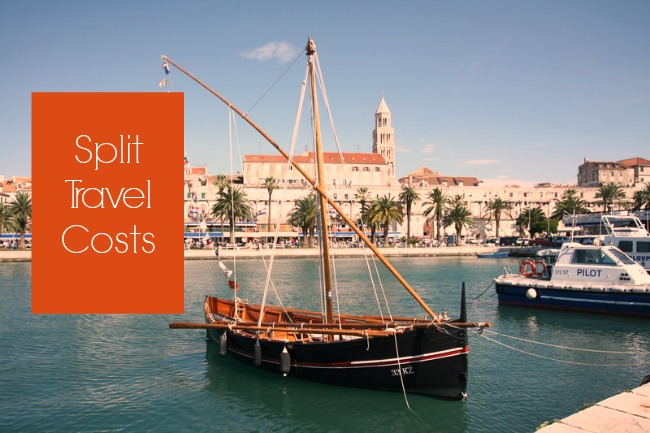
Is traveling to Croatia expensive, and how much will my trip to Split Croatia cost? That’s a fairly common question, and the truth is Croatia is becoming a more and more expensive destination every year.

Your main day-to-day expenses will be based on multiple factors including accommodation, food, sightseeing, transportation, and even phone communications.
Before you embark on your trip to Croatia it’s important to know how exactly much will your visit to Split Croatia cost. My Split Travel Costs guide and calculator will enable you to get a fairly good idea about your expenses.
In the last few years Croatia has witnessed a raise of accommodation prices, particularly in some top visited destinations such as Dubrovnik and Hvar town.
Nevertheless, Croatia’s tourist costs are still lower in comparison to other Mediterranean destinations like Spain, Italy or even Greece, especially if you keep away from traveling in July and August when prices are at their peak. See more on Split budget tips !
Croatia Travel Costs Calculator
We built this custom travel costs calculator which takes into account most important expenses: accommodation, food, drinks, transportation, communication, and sightseeing.
This Croatia travel costs calculation doesn’t include some other potential costs involved (more on that below), but it gives you an excellent overview of main expenses and helps you plan your budget. Try it!
It may not seem like it but we worked really hard to build this travel expense calculator, so feel free to thank us by sharing it on Facebook or Twitter . Thank you!
In case the calculator form doesn’t expand properly you can open it in a new window here .
My calculator should give you a rough idea on how much you can expect to spend during your trip to Croatia, and it accounts for different budgets, lifestyles, and even seasonal pricing differentials. All prices displayed are in Euros (€).
It does not however calculate expenses for getting to Croatia (plane or ferry tickets, or gas and tolls) since the pricing of this greatly depends on the country of origin. Calculator also does not include other potential costs within Croatia, including but not limited to ferry tickets (if traveling to islands), museum tickets, boat rentals, or similar expenses.
Also worth noting is that all prices mentioned or referenced are for Split area, which is considered average to slightly above average in prices. Traveling to a different part of Croatia may raise or lower your expenses, but it’s still a fairly accurate representation of travel costs involved.
Below you can find out a lot more about prices and costs of traveling to Croatia, so if you want to plan for every penny I’m sure you’ll find my detailed cost breakdowns helpful.
Split Travel Costs for all budgets
Below I have presented some average daily expenses (per person) based on category and travel style (low budget, mid range and luxury), accounting for typical costs of accommodation, food, water, transportation, entertainment, alcohol beverages, souvenirs, tips and brochures.
Only communication costs are equal for all travel styles. I should also mention that these costs are referring to Split Riviera , Trogir and Makarska Rivieras and Central Dalmatian islands . Some more exclusive destinations like Dubrovnik and Hvar are more expensive, and on the other hand certain small counties or villages can be much cheaper.
Split travel costs also vary up and down depending on tourist season you are traveling in. In the period of the highest season and the biggest crowds (last week of July to mid August), travel costs are notably high. But things go better in the rest of the year.
Travel costs drop down significantly from October to May. While the winter months in Split (November to March) might be the cheapest months to travel in Croatia, keep in mind that many activities, hotels, restaurants, and other facilities are open only seasonally from May to October.
Tips for cutting travel costs
- If you can, don’t travel in July and August, instead chose June or September up to mid October.
- Costs are lower if you you stay in fully featured apartments .
- Book your accommodation as early as possible to get the best deals.
- Use Hotelscombined or Booking to compare prices of accommodation in Split and Central Dalmatia, including islands.
- Book your accommodation in Split’s neighboring districts like Podstrana .
Split travel costs breakdown by budget
Tables below will show you my estimated daily expenses for low, mid-range, and luxury budgets.
As you’ll notice accommodation takes the largest chunk of your travel budget, but all other expenses can also add up.
Luxury Budgets:
My luxury budget is for those who don’t really care about how much money they spend on holidays, but still stays reasonable. Basically it means no villas with private pools, but if you can afford those then you don’t need my budget tips anyway.
This luxury budget assumes you don’t mind spending an extra €1,000 during a two-week vacation, and I know for a fact many travelers like to enjoy themselves and experience Croatia without worrying about money.
Accommodation considered in luxury category are small boutique and four-star hotels. There’s plenty of elegant and even recently opened hotels in Split which can accommodate you if you’re willing and able to afford it. Many will even offer complimentary free breakfast for a €100 price tag.
I was fairly generous in determining these prices, so unless you’re eating or drinking in the most expensive restaurants the total expense of €230 per day should be more than sufficient to suit a more luxurious lifestyle. Spending €90 a day for food and drinks means you can have 3 pretty fancy meals in above-average restaurants (price-wise), along with 10 beers or soft drinks.
Local transportation assumes you can take 2 taxi rides every day, though I’d still definitely recommend a slow paced stroll where you can glance at the local life.
Mid Range Budget
Mid range budget will easily permit you to sleep in some 3-star hotels and new trendy opened hostels, and pretty much any reasonably priced private apartment, while also allowing you to eat in mid-range restaurants.
I highly recommend reading:
- Split accommodation guide
- Where to eat in Split?
- Top fast food places in Split
€25 a day is enough for two cheap meals in local konobas (taverns), which are great places to eat at not only because of low prices but also for authentic and traditional food . You can easily squeeze in a cheap breakfast with bread, eggs, Nutella or something similar for less than €2 a day. Buy your groceries at cheaper local shops or supermarkets!
You can tighten your food budget even further with fast food and pizza places, but I left this for low-budget vacations. If you can afford it, I strongly recommend trying local cuisine, it’s really not that expensive and you’ll definitely feel better about yourself, your health, and you’ll experience something new which should after all be the point of a vacation.
€11 for alcohol (or soft drinks if you prefer, pretty much the same price) can afford you about 5 beers and a coffee at a bar, which is a reasonable amount for an average traveler. Needless to say prices are way lower if you buy drinks at shops and enjoy them at home.
There’s plenty of things to discover in Split by walking , but €12 for local transportation budget should easily include a taxi ride to the other part of town in those moments where you just don’t feel like walking. Alternatively you easily buy 3-4 bus tickets for this price.
Low Budget:
Low budget assumes you’re looking to save money whenever possible. Unfortunately you can’t get most stuff for free, but there are still places that cater to those who’s budgets don’t allow for extra expenditure, and ways to save money on things you don’t need.
When traveling on a low budget you can count on private accommodation (renting rooms) and on large number of cheap and low budget hostels , while fast food or pizza restaurants will be the most economic places to eat.
Don’t miss reading my Split accommodation tips article for more ideas how to save money during your trip!
For €30 a day you can book a decent hostel or a small room, and in most cases it shouldn’t really matter where you sleep. Most people with low budgets are backpackers and young travelers who are looking to have a good time, and that typically involves staying on the move rather than chilling in accommodation.
12 € food budget allows for fast food 2-3 times a day, some snacks, and a cheap breakfast. You won’t go hungry with this amount, but don’t expect to feast either! Jam and bread for breakfast, cheap Dalmatian dish at a konoba for lunch, and a couple of slices of pizza or a hamburger for dinner can fit in this budget.
If you’re traveling with friends or family, it can be very beneficial to rent accommodation with a small kitchen, allowing everyone to save a ton of money. Groceries are really cheap in supermarkets, and a decent cook can make a 4-people meal for 7-8 euros quite easily.
This budget is all about saving money, so it’s not very generous in the alcohol department, but €6 can afford you five beers or soft drinks in supermarkets. When going outside or to the beach, bring bottled water, and fill it at home! Tap water in Croatia (excluding some remote islands) is perfectly safe to drink, so don’t waste money on bottled water.
Split Travel Costs – Accommodation
Below are average costs of various accommodation types for 7 days for 2 people.
High season (end of July to mid August):
- Camping site – 500 €
- Apartment rental (up to 4 persons) – € 750
- 2 stars hotel – 700 €
- 3 stars hotel – 1000 €
- 4 stars hotel – 1400 €
- 5 stars hotel – 3500 €
Low season (June and September):
- Camping site – € 190
- Apartment rental (up to 4 persons) – 350 €
- 2 stars hotel – 450 €
- 3 stars hotel – 700 €
- 4 stars hotel – 900 €
- 5 stars hotel – 2500 €
Accommodation costs are only included as a rough estimate: prices can vary greatly depending on destination, location, amenities, distance to landmarks or beaches, or a number of other factors.
Bigger online booking engines like Booking.com (hotels & private apartments) or HostelWorld (hostels) often have promotional discounts ranging from 10% to 30% even in high season, so make sure you check them before you book your accommodation. Some last-minute deals can also save you hundreds of euros.
Split Travel Costs – Transportation
Getting around Split County by bus is the cheapest and most economic way of transportation. Prices are low and there are a lot of buses connecting Split with Trogir or Makarska Riviera. For example Makarska is connected with over 40 daily buses to Split and one way ticket is only 52 Kuna (Euro 6.80) for 80 km distance.
Ferries from Split to central Dalmatian islands are cheap for passengers, but if traveling with a car you can expect to pay up 6 times more in high season. For example Split to Supetar ( Brac island ) ferry running 50 minutes (in high season 6 to 8 times daily) will cost you 23 Kuna (Euro 3.00) for passengers, but for vehicles not exceeding 1,80 m in height you will pay Kuna 106 (Euro 13.87).
My budget tips:
Consider traveling by bus to coastal destinations as it is a cheaper and most frequent way of getting around. If you decide to visit one of the larger islands like Hvar or Brac, consider renting a car as buses are rather inconvenient.
Split Travel Costs – Food
Budgeting travel costs for food is often really hard for travelers because there isn’t any way to know how much food is actually going to cost. Food can get really expensive if you eat at restaurants, or can be fairly cheap if you shop at grocery stores.
Meals in Split and nearby islands are good quality and prices are reasonable. Depending on what you want to eat, international or local Dalmatian cuisine, average meal costs from 40 to 80 Kuna (Euro 5 to 11).
I wouldn’t recommend going to expensive restaurants or hotels for a good meal: local konobas (taverns) often have fantastic food for a fraction of the price. An infallible way to discover affordable places with great food is to see where locals go for their marenda , and guess what: I’m a local and I wrote a guide for that too!
In cheapest restaurants in Split you can get a pizza from Kuna 38 (€5), while a plate of pasta or fish risotto starts at 50 Kuna (€6.50).
As I already mentioned above, cooking by yourself is also an excellent way to save a potentially significant amount of your budget for other things. Ingredients and groceries are cheap in markets or shops, and you should be able to feed six people for €10.
Split Travel Costs – Drinks
Croats really do love spending time in bars! It may seem unusual to many travelers at first, but prices in our bars and coffee shops are significantly lower than in most of Europe, such as Germany or Scandinavian countries.
Assuming you avoid bars located right next to popular tourist attractions or town squares, prices are reasonably low and allowing everyone to experience this Croatian tradition. Average price for a coffee is about €1,50, while a beer (0,5 L) or a soft drink (0,33 L) will cost about €2.
Still the cost of making coffee at home is insignificant compared to bars, so take that into consideration if you want to save as much as possible. Buying beer in supermarkets is twice as cheap, with 0,5 liter going for around €1.
I don’t recommend drinking alcohol on the beach, so take some soft drinks or water with you. Tap water is safe to drink in Croatia, so fill your bottles at home and bring them with you. Purchasing bottled water (€1 for 0,5L) every day is a significant and needless expense!
Tap water is free!
- Water = voda (of water = vode)
- Glass = čaša (pronounced as “ chasha “)
- Glass of water = čaša vode
- Pint / pitcher = krigla
- Coffee = kava
- Beer = pivo
- And = i (pron. “ ee “, like in b EE r)
- Beer/coffee and a pint of water = pivo/kava i čaša vode
Learn more about:
- Drinking in Split
- Croatian Language Basics
- Useful Croatian Phrases
When ordering coffee it’s customary in Croatia to get a (free) glass of tap water. You won’t get it in some tourist places as foreigners usually don’t request it, but you should never feel embarrassed to ask for it. Most Croats are surprised when they don’t get it by default.
Learn how to say “čaša vode” and you can easily save a few euros! Just make sure you specify you want a glass of water — otherwise some waiters will bring you bottled water which costs about €1 – €1.50.
If you’re feeling especially thirsty in our summer heat you can also order a glass of water with your beer. This way you can quench your thirst without spending as much or consuming too much alcohol.
Please don’t walk alone into a bar and only order tap water. It’s considered impolite not to pay for anything, and some establishments may even decline service unless you order something you have to pay for.
And one last tip about bars: nowadays most bars and restaurants offer free wifi for their customers, check your receipt for the password.
Split Travel Costs – Communication
Communication expenses is something that many travelers don’t consider when planning their trip. Roaming charges can cost a fortune, but using your phone or internet in Croatia doesn’t have to be overly difficult nor expensive.
If you want to call or text to your family or friends abroad, the cheapest option will always be applications like Skype, Viber or WhatsApp.
Alternatively if you need to call landlines or mobile phones without internet access, you can consider purchasing a local prepaid SIM card. You can buy it for €8 – €10, and unless you require extensive mobile data (internet) usage the calls included should be sufficient to stay in touch with your loved ones.
Younger travelers probably don’t care about phone calls, and mobile internet is where all of their communication happens. Prepaid SIM cards can be enough for basic usage, but if you plan on staying online 24/7 you’ll probably burn your available bandwidth within a few days.
An excellent alternative I discovered for this is RoamFreeNinja , which is basically a very small wireless modem you can carry with you. Daily rental costs about €7, but the upside is that you can connect up to 10 devices through it. If you split the costs with your friends or family it can be an extremely affordable option considering what you’re getting.
Another upside to RoamFreeNinja is that you will have unlimited bandwidth, which is a must have if you plan extensive Facebook, Youtube or Netflix usage.
Split prices by season
Many costs associated with traveling to Croatia and Split greatly depend on the season. The main difference is in accommodation, where pricing is easily 50% lower in off (low) season.
High season (July and August)
The climate is perfect. The island of Hvar is the sunniest, followed by Split. The prices are skyrocketing and coastal resorts are packed with tourists. Don’t expect any discounts on accommodation!
Mid Season (June and September)
The coast is lovely, the sea warm enough, tourists are few and prices are affordable. The spring and end of summer are ideal for boating and sailing. Hotels and private apartments are not fully booked, so it’s easy to find excellent places to stay in.
Low season (October to April)
In April and October weather is still warm enough. Accommodation prices are significantly lowered, often 50% to 70% compared to high season. The winter period is a real bargain for spa offers. Temperature rarely goes below zero (°C) in winter, but strong bura wind can make staying outside unpleasant.
Consider Cruises
You’re wrong if you think cruises are only for the rich. Even in high season you can find 7-day cruises for less than € 1,000 per person, and considering what some of these cruises include those offers can be significantly cheaper than planning a vacation by yourself.
- Cheap cruise holidays
- Party cruises for young
- More cruises in Croatia
Here’s an example from one of Croatia’s leading cruise companies: by booking their Southern Explorer cruise you get a place to sleep, free breakfast and lunch, water, and guided sightseeing of Split, Makarska, Mljet island, Dubrovnik, Trstenik, Korčula island, and Hvar island.
Totaling to only €142 per day you get accommodation and food included, which are two of the biggest expenses you’ll have during any vacation. Furthermore this cruise will take you to all 7 destinations , making it an excellent and convenient way to explore different places without paying extra for transportation or guided tours.
If you wish to see more for less, booking a cruise is definitely worth considering.
- Budget Tips for Saving Money in Croatia
- Budget Travel Guides
- Split Accommodation Tips & Tricks
- Cheap Cruise Holidays in Croatia
If you want to save about 30% on accommodation while still enjoying great weather, mid-season is perfect for you. Streets and beaches aren’t packed with tourists, prices are more reasonable, accommodation is easier to find, and the sea is enjoyably warm.
And if you somehow managed to read this entire awfully long guide I’m certain you’ll find a few easy tips you can apply during your next vacation which will easily reduce your final expenses by 10-20%.
While Croatia and Split can be expensive, there’s always ways to save money. It’s not only about spending less, the point is to spend money on things that matter most and be able to see and do more for the same amount of money.
Even saving €15 a day in a week-long vacation means you can book a day trip to Plitvice Lakes or see Dubrovnik’s walls , which are both undoubtedly more memorable experiences than eating in expensive restaurants or sleeping in air-conditioned rooms.
Optimize your expenses and use the extra budget to discover more of Croatia, as these memories will last a lifetime.
- Budget Travel
- Traveling around Croatia

If you like this travel guide about Split Travel Costs and found it useful, consider supporting the author with a coffee or share it with your friends:
Compare deals from multiple websites to find your hotel, hostel, or private apartment for the best price! You can also check for flights and ferries to Croatia, book airport transfers in advance, or find most popular tours and cruises, all thanks to my partners!
- Accommodation
If the form above is not loading you can search directly on DirectFerries .
Below are my recommended sailing trips in Croatia from trusted companies and tour operators. Feel free to check the offers and links to find additional information and more related cruises!
From Split:
- Southern Explorer - explore top places between Split and Dubrovnik!
- Luxury at Sea - relaxing luxury cruise of best destinations near Split
- Southern Pearls - one-way cruise from Split to Dubrovnik
- Split to Dubrovnik One-Way Luxury Cruise - travel in style from Split to Dubrovnik
- Split to Dubrovnik Private Sailing Holiday - your own private yacht and crew
Top rated: Southern Explorer
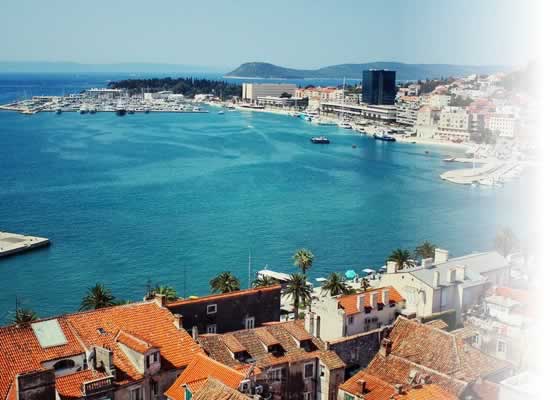
Starting and ending in Split, this cruise will take you to Makarska, Mljet, Dubrovnik, Trstenik, Korcula, Hvar and Brac!
Dates & pricing »
From Dubrovnik:
- Dubrovnik Discovery - discover top destinations near Dubrovnik
- Southern Pearls - one-way cruise from Dubrovnik to Split
- Luxury at Sea - one-way luxury cruise from Dubrovnik to Split
- Dubrovnik to Trogir - charming 8-day sailing trip from Dubrovnik to Trogir
- Adventure Sailing - kayaking, snorkeling, cycling and more in this active sailing adventure
Top rated: Dubrovnik Discovery
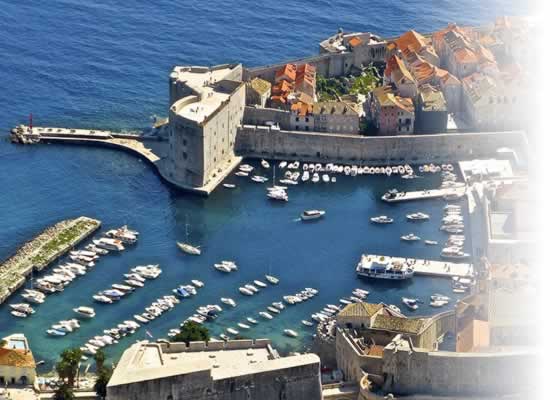
Depart from Dubrovnik on a week long cruise and explore Mljet, Hvar, Korcula, Trstenik, and Sipan.
More departure ports:
One-day sailing trips:.
- From Dubrovnik
- View all Croatia 1-day sailing trips
Organized tours are excellent ways to explore my beautiful country, and I highly recommend taking at least one trip during your visit. There are limitless fascinating places to see, and you can easily book a tour or day trip from my trusted partners below.
Below are five top rated tours from Split!
Discover more trip ideas:
- Top day trips from Split (my article)
- More tours from Split (100+)
- Tours from Dubrovnik (70+)
- See all tours in Croatia »
- Browse more tours on Viator (200+)
Find transfers and compare prices on:
- SoloTransfers (best prices from Split)
- HappyToVisit
- From Split airport
- From Split city
- From Dubrovnik airport
- From Dubrovnik city
From Any Location:
- Select any pickup and dropoff - from and to 200+ destinations in Croatia.
- From Split to Dubrovnik
- From Dubrovnik to Split
- From Split to Dubrovnik (shared transfer, special offer for only €55)
- From Dubrovnik to Split (shared transfer, special offer for only €55)
More options:
- Hire a private chauffeur (from €166/day)
- Rent a car on AutoEurope (from €40/day)
- Rent a car on RentalCars.com (price comparisons)
Cruises are fantastic and inexpensive way to discover multiple destinations in Croatia.
Dubrovnik Discovery Cruise
8 days, 6 destinations
From Dubrovnik to Mljet, Korcula, Hvar, Trstenik, and Sipan
€ 423 - 700
(€ 52 - 87 per day)
Young & Fun Party Cruise
8 days, 8 destinations
From Split to Makarska, Korcula, Dubrovnik, Mljet, Hvar, Brac (Bol), Omis
€ 370 - 700
(€ 46 - 87 per day)
Split to Dubrovnik Cruise
8 days, 9 destinations
From Dubrovnik to Sipan or Slano, Mljet, Korcula, Bisevo, Vis, Hvar, Bol (Brac island), Makarska, Pucisca (Brac), Omis, and Split
€ 425 - 890
(€ 53 - 111 per day)
- ← Split to Krka National Park – Easy Day Tour
- Walking in Split: Discover the City on Foot →
Nik is Split.gg's manager and technical contact, who also occasionally writes an article or guide about traveling to Croatia. More about our authors »
You May Also Like
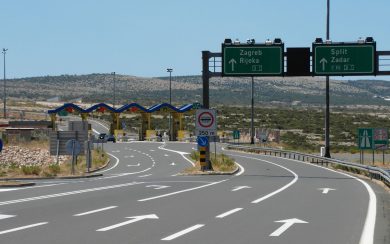
Getting to Split by Car
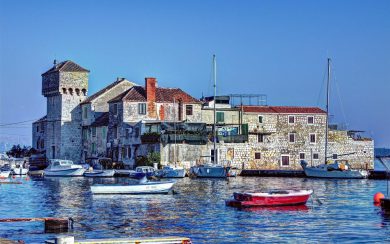
Kastela Riviera – Seven Swans

Split Tours: Visit Vis, Hvar, Korcula and Dubrovnik in 10 Days
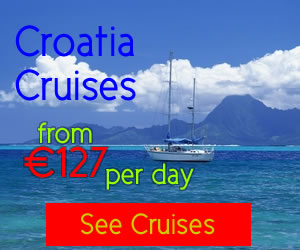
Currency Converter
Try my free currency converter:
HRK = Hrvatska Kuna - Croatian Kuna
From: HRK GBP EUR USD CAD AUD SGD EGP ARS BBD BRL CLP CNY CZK DKK XCD EEK HKD HUF ISK INR IDR ILS JMD JPY LVL LBP LTL MYR MXN NAD NPR NZD NOK OMR PKR PAB PHP PLN QAR RON RUB SAR ZAR KRW LKR SEK CHF THB TRY VEF
To: HRK GBP EUR USD CAD AUD SGD EGP ARS BBD BRL CLP CNY CZK DKK XCD EEK HKD HUF ISK INR IDR ILS JMD JPY LVL LBP LTL MYR MXN NAD NPR NZD NOK OMR PKR PAB PHP PLN QAR RON RUB SAR ZAR KRW LKR SEK CHF THB TRY VEF

- Living In Croatia
- Croatian Recipes
- Balkan Recipes

Home > 32 Ways To Travel Croatia On A Budget & Save Money
32 Ways To Travel Croatia On A Budget & Save Money

Written by our local expert SJ
Sarah-Jane has lived in Croatia for 10+ years. SJ, as she is known, has been traveling the Balkans & beyond since 2000. She now shares her passion for traveling with her husband & kids.
Traveling to Croatia doesn’t have to break the bank – and you don’t have to be a budget traveler to need to make your money go further. As someone who’s lived in this stunning country for 11 years, journeying from the northernmost points to the southern tips, I’ve witnessed firsthand the evolution of Croatia as a travel destination.
Over the last 18-24 months, food and accommodation prices have surged by 30-50%, making budget-conscious travel more critical than ever. But don’t worry, I can help you save money.
In this guide, I’ll share insider tips and strategies to help you save money while still enjoying the best of Croatia – from its fantastic weather and friendly people to its breathtaking natural beauty.
With an increase in budget flights from across Europe, Croatia remains an accessible and attractive option for savvy travelers. Let’s dive into how you can experience popular tourist destinations in Croatia without overworking that credit card!
Skip Ahead To My Advice Here!
Cost Of Items In Croatia (As Of Feb 2024)
- Coffee (at a café): €2 – €4
- Beer (local, at a bar): €3 – €5
- Pizza (in a restaurant): €7 – €14
- Sandwich (from a bakery or café): €4 – €6
- Ice Cream (per scoop): €2 – €2
- Seafood dish (at a restaurant): €11 – €30
- Gelato (per scoop in a tourist area): €2 – €3
- Pasta dish (in a restaurant): €8 – €17
- Bottled Water (0.5 liter): €2 – €3
- Soft Drink (in a café or restaurant): €2 – €4
- Local Wine (per glass in a restaurant): €4 – €7
- Cocktail (at a bar or nightclub): €6 – €12
- Petrol: €1.50 per liter
Transport Travel Budget Saving Tips
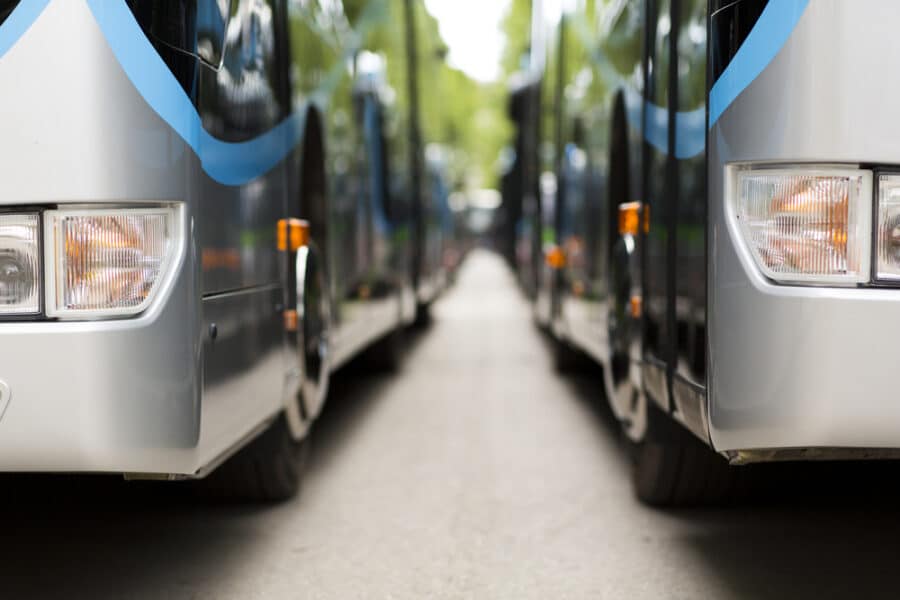
So, you need to get from point A to point B. So, how do you do that traveling to Croatia on a budget, as transportation costs add up fast?
1. Use The Extensive Buses Network In Croatia – The Cheapest Way To Travel
Croatia’s extensive bus network is a traveler’s dream, especially if you’re on a budget. With countless bus lines weaving through the country and even beyond its borders, getting around on local transportation has never been easier or more affordable. Forget the old image of crowded, uncomfortable buses. Today’s Croatian bus service is all about modern comforts and convenience.
These coaches come equipped with amenities that make road travel a breeze. Free WiFi? Check. Electric plug-ins? You got it. This means you can stay connected, charge your devices, and share those travel moments in real-time. The buses are designed with passenger comfort in mind – think headrests for a quick nap, more legroom (which, trust me, is a blessing), and ample space for your travel bags. Air conditioning keeps the summer heat at bay, and on-board toilets mean fewer pit stops.
Plus, most bus drivers speak English, so you’ll have no trouble getting tips or directions. Whether you’re hopping between major cities or venturing into lesser-known regions, Croatia’s bus network is a reliable, comfortable, and cost-effective way to travel.
So, grab a seat on the bus, enjoy the views, and let the road take you to your next Croatian adventure!
We recommend you book your bus tickets here.
The best part for me is that taking the bus allows you to relax and soak in all the beauty Croatia has to offer, and it’s the best option for budget travel in Croatia .
2. Find Budget Car Rental In Croatia
Of course, buses are not for everyone. Car rental can be inexpensive if you know two things.
- Are you looking to rent a car in Croatia without overspending? It’s definitely doable, and here’s how. First up, timing is critical – book your rental car early. Just like snagging the best seats at a concert, early booking often means better deals and more options to choose from. The early bird really does get the worm in the car rental game
- Now, about the car itself: think small. Smaller vehicles are not only more affordable in terms of rental costs, but they’re also more economical when it comes to fuel consumption – a win-win for your wallet. However, don’t forget to consider luggage space. Those charmingly compact cars are great until you realize your suitcase won’t fit. So, do a quick check to ensure there’s enough trunk space for your bags. This way, you balance cost-efficiency with practicality.
By following these simple tips, you can enjoy the freedom and convenience of having a car in Croatia without the high prices. Drive through the country’s beautiful landscapes and explore hidden gems at your own pace, all while keeping your budget in check.
- Car Rental & Driving Tips In Croatia
3. Use The Ferry Network
Exploring Croatia’s stunning coastline and islands doesn’t have to mean splurging on a sailing cruise or renting a yacht – which, let’s be honest, can really stretch your budget.
A wallet-friendly alternative?
Hop on a ferry!
Not only are ferries significantly more affordable, but they also offer a relaxed and scenic way to travel between islands. While a private yacht might give you luxury and exclusivity, ferry rides offer their own charm with the chance to mingle with locals and fellow travelers. Plus, you can’t beat the feeling of the sea breeze on your face as you travel from one beautiful destination to another.
Ferries in Croatia are efficient and well-connected and offer a range of routes covering the most popular islands as well as some hidden gems.
The experience is straightforward – buy your ticket, hop on, and enjoy the journey. You’ll get to see the Croatian coastline from a different perspective, and who knows, you might even stumble upon a quaint coastal town you hadn’t planned on visiting.
This way, you get the essence of the Croatian maritime experience without the hefty price tag of a private charter.
So, grab a ferry schedule, plan your island-hopping adventure, and get ready to explore Croatia’s islands in a way that’s both budget-friendly and full of local flavor!
We recommend you book your foot and car ferries with Ferryhopper in advance here.
- Guide To Ferries In Croatia
4. Go The Scenic Route On Your Road Trip
Embarking on a road trip through Croatia ? Here’s a savvy tip: skip the motorways and their tolls, and instead, embrace the scenic local roads.
Sure, they might add a bit more time to your journey, but trust me, the views are worth it. Plus, they’re 100% free, which is great news for your budget.
Croatia’s local roads snake through picturesque landscapes, quaint villages, and along stunning coastlines, offering a more authentic and immersive travel experience.
So, why rush on the motorway when you can take the road less traveled? It’s an opportunity to see Croatia through a different lens at your own pace. Plus, saving money on tolls means you can splurge a little more on experiences and treats along the way.
Grab a map, plot a course (for example, the old road from Zadar to Split ), and get ready for a road trip filled with memorable sights and experiences – the Croatian way!
5. Take A Private Transfer
Taking a private transfer in Croatia might sound like a luxury option, but it can actually be a savvy, money-saving move, especially if you’re traveling in a group.
Think about it – splitting the cost of a private transfer with friends or family can often work out to be as affordable, if not cheaper, than buying individual tickets for public transport. And let’s not forget the added benefits that come with it.
First off, private transfers offer a level of comfort and convenience that public buses can’t match.
The convenience factor is a major plus. Say goodbye to the hassle of dragging your luggage to bus stations and puzzling over bus schedules. And then, there’s the often-overlooked detail of getting from the bus stop to your hotel.
In many cases, this means hailing a taxi (and getting ripped off!), which adds extra cost and time to your journey. With a private transfer, these worries vanish. You get a direct, comfortable ride from your pickup point straight to your hotel door.
Private transfers offer a relaxed, air-conditioned journey, minus the overcrowded buses. They’re tailored to your schedule, providing the flexibility that public transport can’t match.
So, for a group exploring Croatia, opting for a private transfer can mean more time enjoying your trip and less time (and money) spent on navigating the logistics of travel. It’s a smart, stress-free way to move around and make the most of your Croatian adventure.
Get a quote on your private transfers here.
Brands we use and trust, croatia accommodation budget travel tips.
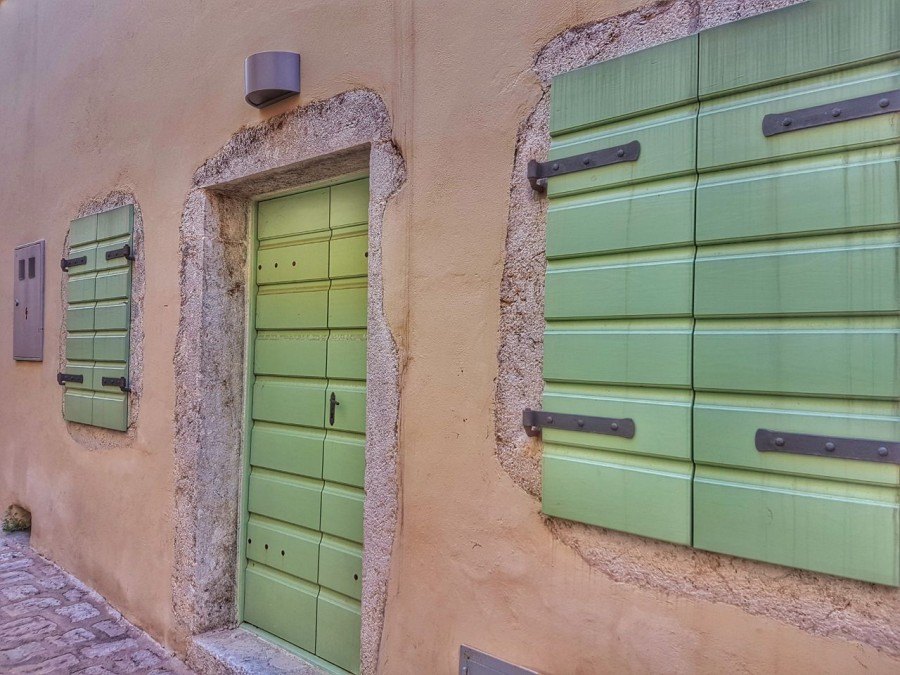
Finding the perfect place to stay in Croatia doesn’t have to drain your wallet. After years of exploring this beautiful country, I’ve learned that while hotels are great, there’s a whole world of budget-friendly accommodation options out there that help your tight budget.
From cozy local apartments to unique homes on Airbnb, these alternatives not only save you money but also offer a more authentic Croatian experience.
It’s true that Croatia isn’t overrun with international hotel chains, but that’s part of its charm. The ones that do exist tend to be on the pricier side. So, if you’re traveling on a budget, it pays to be savvy about where you stay. Hunting for deals on specialized booking sites early on can lead to some serious savings.
But there’s more to budget accommodation than just snagging a good deal. Here are some essential tips to help you find a great place to stay in Croatia without breaking the bank. Whether you’re a seasoned traveler or planning your first Croatian adventure, these insights will guide you to comfortable, affordable stays that enhance your travel experience.
6. Opt For Local Apartments Or Homes
While hotels have their charm, consider the more budget-friendly option of local apartments or homes available on platforms like Airbnb. If you are with a group, a two-bedroom apartment will cost way less than two hotel rooms.
These accommodations often provide a more authentic and cost-effective experience, allowing you to live like a local and save money. They come in all shapes and sizes, catering to different needs and budgets, and often include amenities that hotels charge extra for.
7. Search For Deals On Specialized Booking Sites
Croatia may not boast a plethora of international hotel chains, but the ones present can be pricey. To snag a deal, turn to specialized booking sites and keep an eye out for sales. These sites frequently offer discounts and special rates that aren’t available elsewhere.
8. Use Incognito Mode For Hotel Searches
A little-known trick: browse for hotels in incognito mode. This prevents dynamic pricing tactics from hiking up prices based on your search history, potentially leading to better deals.
9. Book Hotels Early
Many hotels offer early booking discounts, so get in there as soon as your travel dates are set. While these discounts are often available until the end of March, you might also stumble upon last-minute sales throughout the year.
10. Book Directly With Hotels
Don’t overlook the benefits of booking directly with a hotel. Contact them via their website or phone and inquire about discounts or all-inclusive options. Direct bookings sometimes unlock special rates not advertised elsewhere.
11. Stay Outside The City Center
Consider accommodations slightly outside the central part of the city. These areas often offer more affordable options and can give you a glimpse into everyday local life. Plus, a short walk or public transport ride easily connects you to the city’s main attractions.
12. Embrace Camping
For the more adventurous, camping is a wallet-friendly alternative to hotels. Croatia’s natural beauty makes it an ideal place to camp, offering a unique experience close to nature.
- Where To Go Camping In Croatia
- Where To Go Glamping In Croatia
13. Stay In Hostels
Hostels aren’t just for backpackers; they’re a great way to save a lot of money and meet fellow travelers. Croatia’s hostels range from basic to boutique, catering to different comfort levels and budgets.
- Cool Hostels In Croatia
14. Try Housesitting
For a longer stay, consider housesitting. It’s a cost-free way to enjoy accommodation, often in exchange for looking after the property or pets. This option lets you live like a local and truly immerse yourself in Croatian culture.
Skip The High Season & Save Money In Croatia
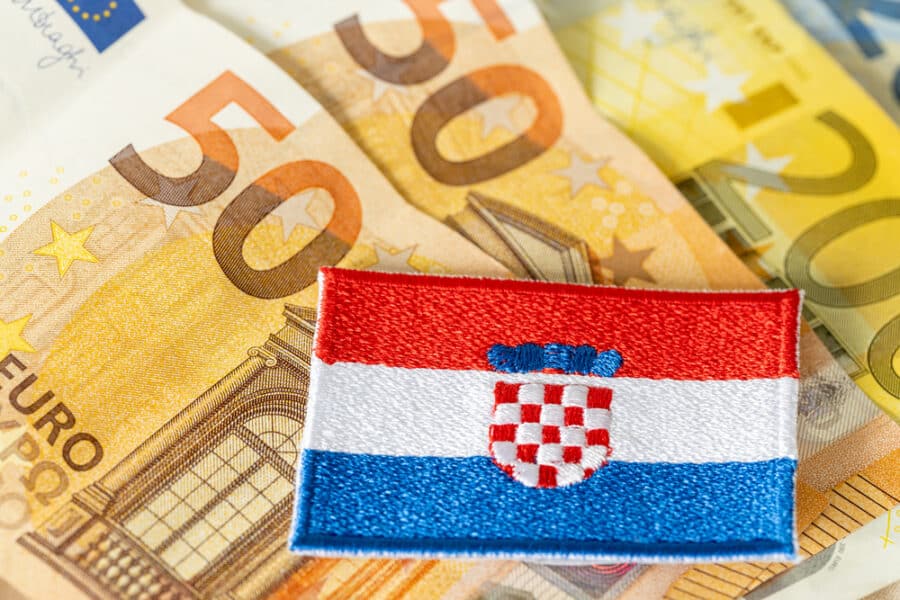
Planning a budget-friendly trip to Croatia? Timing is everything. Take a moment to step back and consider when you’re visiting because the season can make a massive difference to your wallet.
Tourism in Croatia has a distinctly seasonal rhythm. Peak season, running from July through August, sees prices skyrocketing. Everything from accommodation to activities can cost significantly more during these months. Even we locals tend to avoid traveling within our own country during this time due to the steep prices.
15. Come In The Shoulder Seasons
However, there’s a sweet spot for budget-conscious travelers: the shoulder seasons. Spring (April, May, and June) and autumn (particularly September) are ideal times to visit. Why? Firstly, you’ll sidestep the inflated costs of peak season. Accommodation rates drop, and you’ll often find great deals on activities and dining, too.
But the benefits go beyond just financial savings. Spring in Croatia brings warmer weather and fewer tourists, offering a more relaxed atmosphere. You can explore the country’s stunning landscapes and historical sites without the crowds, experiencing Croatia as the locals do.
September continues to charm with its pleasant weather, perfect for beach lounging and swimming. The sea is still warm from the summer sun, making it ideal for water activities. Plus, with fewer tourists around, you’ll get a more authentic feel of Croatian life.
So, if you’re looking to experience the best of Croatia without straining your budget, consider visiting in the shoulder seasons. You’ll enjoy moderate weather, fewer crowds, and, most importantly, a more affordable and authentic Croatian adventure.
- When Is The Best Time To Visit Croatia
Choosing The Right Location To Save Money In Croatia
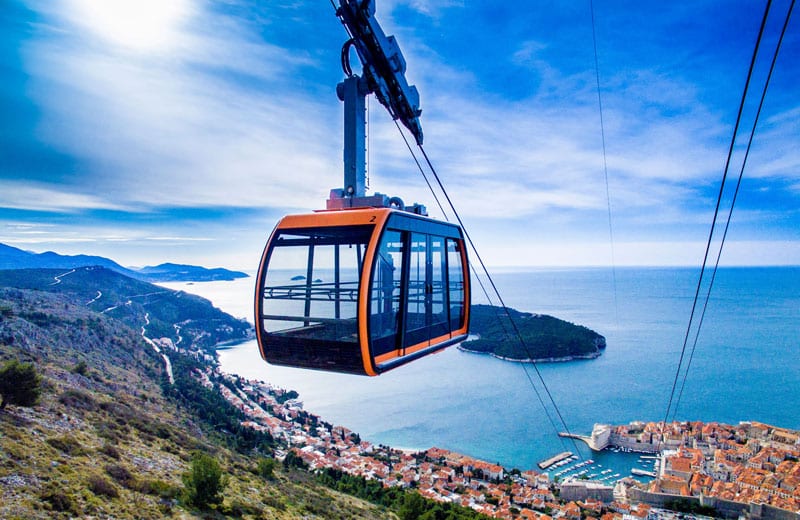
16. Opt For Less Touristy Towns Over Hotspots Like Dubrovnik
Dubrovnik, with its stunning Old Town and Game of Thrones fame, is a magnet for tourists, leading to higher prices. To keep your expenses in check, consider staying in areas outside the Old Town, such as Cavtat or Ston. These places offer the same captivating beauty but at a fraction of the cost.
- What To Do In Ston
17. Explore Affordable Alternatives To Split
Split is another popular destination , but nearby towns like Trogir or Omiš offer a more budget-friendly base.
These charming locations are less crowded and more affordable, yet close enough to Split for convenient day trips. Alternatively, Zadar, a lesser-known gem, provides a budget-friendly alternative with easy access to famous spots like Plitvice Lakes National Park . Use my Croatia travel guide to explore ideas for smaller towns around your desired destinations – these often hold the key to significant savings.
18. Stay Longer In Fewer Places
To keep your budget in check while traveling in Croatia, consider reducing the number of destinations on your itinerary. Constantly moving from town to town not only adds to travel stress but can also inflate your expenses.
19. Take Advantage Of Long-Stay Discounts
Many accommodations, ranging from hotels to private apartments, offer discounts for longer stays. By spending more time in one place, you can tap into these savings. This approach is particularly beneficial for budget-conscious travelers looking to reduce their accommodation costs.
20. Choose Strategic Bases For Exploration
Cities like Zadar , Zagreb, or Split make excellent bases for exploring smaller cities. These strategic locations allow you to cover a lot of ground with day trips. You can experience the diversity of Croatian landscapes and culture without the need to pack and move constantly.
- Where To Stay In Zadar
- Where To Stay In Zagreb
- Where To Stay In Split
21. Experience More By Traveling Less
Staying in one place for longer not only saves money but also lets you delve deeper into the local culture and lifestyle. You’ll have the time to discover hidden gems, form connections with locals, and truly immerse yourself in the Croatian way of life.
22. Be Efficient At Travel Planning
Plan your travel routes efficiently. By choosing nearby attractions and destinations for your day trips, you can minimize travel time and costs. This focused approach allows you to see more without the added expense of long-distance travel.
By embracing the ‘less is more’ philosophy in your travel plans, you can enjoy a richer, more relaxed Croatian experience while keeping your budget in line. This approach emphasizes quality over quantity, ensuring you get the most out of your Croatian adventure without overspending on transportation and accommodation.
Island Hopping In Croatia On A Budget
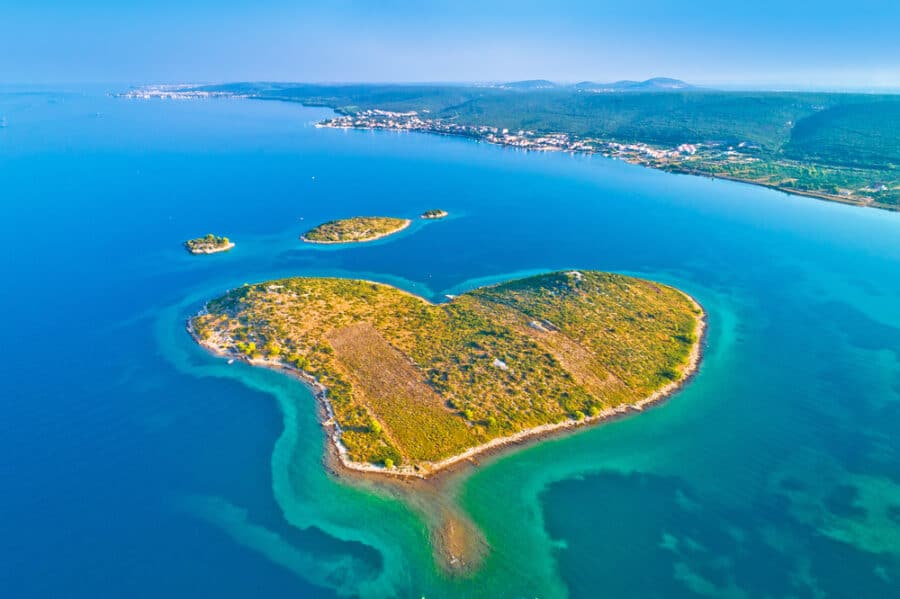
Are you dreaming of island hopping in Croatia’s Dalmatia or Kvarner Region? It’s more achievable than you might think. Contrary to popular belief, island hopping here can be done on a budget. The trick is to plan your itinerary smartly. Start by picking islands that match your interests and budget. The off-the-beaten-path islands often provide a more authentic experience at lower costs.
23. Set Your Own Itinerary
Flexibility is your friend when it comes to island hopping. Decide which islands you want to visit and for how long. This way, you can avoid the tourist traps and find hidden, more affordable spots.
24. Travel Necessities
Before you embark on your island-hopping adventure, ensure you have all the travel essentials. This means doing a bit of research and planning ahead to avoid last-minute purchases or rentals that can add unexpected costs to your trip.
- Croatia Packing List
25. Use Ferries Wisely
Ferries are a cost-effective way to hop between islands. Look for passenger tickets only, which are usually cheaper than bringing a car.
26. Consider Off The Beaten Track Islands
While everyone flocks to Hvar and Korčula, islands like Solta, Vis, and Mljet offer a tranquil escape at a lower cost. These lesser-known islands can provide a more intimate experience of Croatian island life.
By choosing your location wisely and planning your island hopping with a budget in mind, you can enjoy the wonders of Croatia without spending a fortune. Whether it’s finding a quaint town near a major city or charting a course through Croatia’s beautiful islands, there are plenty of ways to save while soaking in the country’s stunning landscapes and rich culture.
Money Saving Tips For Food

27. Eat Like A Local
One of the best ways to save on food in Croatia is to eat where the locals eat. Avoid tourist-packed restaurants and, instead, find those hidden gems – we call them “konobas,” where traditional Croatian cuisine is served at reasonable prices. These places offer an authentic taste of the country’s culinary delights .
- Guide To Ordering Food In Croatia
28. Embrace Marenda
Many local restaurants offer ‘marenda’ or ‘gablec’ – a fixed-price meal typically including a main course, salad, a side, and sometimes dessert. These hearty meals are designed to keep you satisfied throughout the day and are a great way to enjoy delicious Croatian dishes without overspending.
29. Cook Your Own Meals
Utilize local markets in each town, which are overflowing with fresh vegetables, fruits, and other ingredients. If you’re staying in an apartment or a hotel with kitchen facilities, cooking some of your meals can be a huge money-saver. It’s also a fun way to immerse yourself in Croatian culture by trying out Croatian recipes like mine.
30. Smart Supermarket Shopping
Your budget can stretch further by shopping at supermarkets. Consider eating breakfast at your hotel or preparing it yourself, and pack picnic lunches for your day trips. This strategy allows you to save money for a more indulgent dinner, where you can savor the diverse flavors of Croatian cuisine.
31. Street Food and Bakeries
Don’t overlook street food and local bakeries for quick, tasty, and inexpensive meals. Items like ‘ burek ‘ or sandwiches are perfect for on-the-go eating and offer a cheap yet satisfying option.
32. Drink Croatia’s Tap Water
One often overlooked but significant way to save money in Croatia is by drinking tap water. It’s not just a cost-effective choice; it’s also a safe and healthy one. Croatia boasts exceptionally high standards of water quality. In fact, the quality of tap water in Croatia meets or exceeds all international safety standards , making it perfectly safe to drink.
Drinking tap water in Croatia means you can avoid the extra expense and environmental impact of bottled water. Almost everywhere you go, from Zagreb to Dubrovnik , the tap water is not only drinkable but also tastes great. This is especially handy during the hot summer months when staying hydrated is crucial.
So, remember to pack a reusable water bottle on your Croatian adventure. You can refill it throughout the day at any tap or public water fountain. This simple act not only saves you money but also contributes to reducing plastic waste, helping preserve Croatia’s natural beauty for future visitors.
Embracing tap water in Croatia is a smart, sustainable choice that’s good for both your wallet and the environment. Cheers to staying hydrated in a cost-effective and eco-friendly way!
6 Free Things To Do In Croatia
While some major attractions in Croatia require you to pay a fee, there are still several amazing things to do for free.
Here are some suggestions for budget-friendly activities in Croatia:
Explore Croatia’s Best Beaches
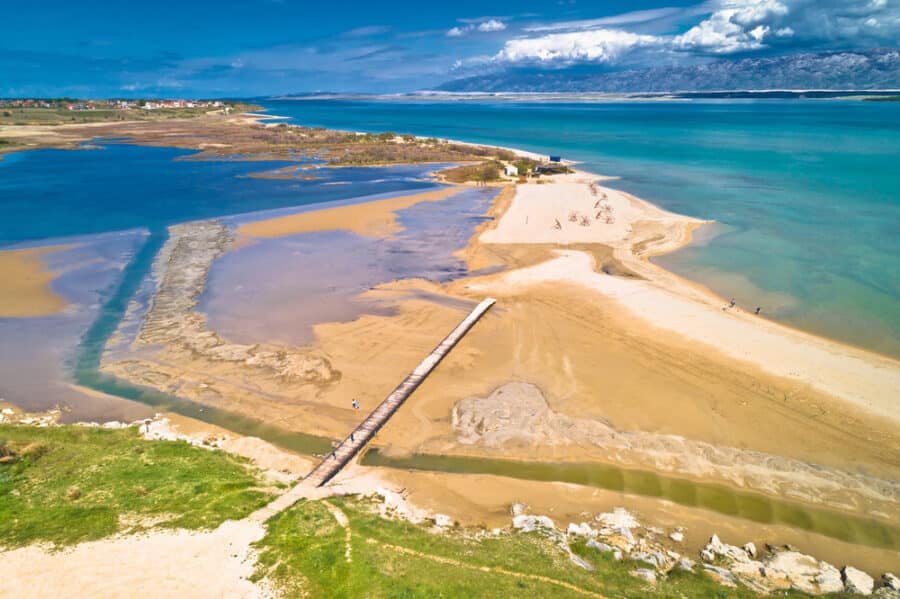
- Best Beaches In Croatia
Hike Through Breathtaking National Parks
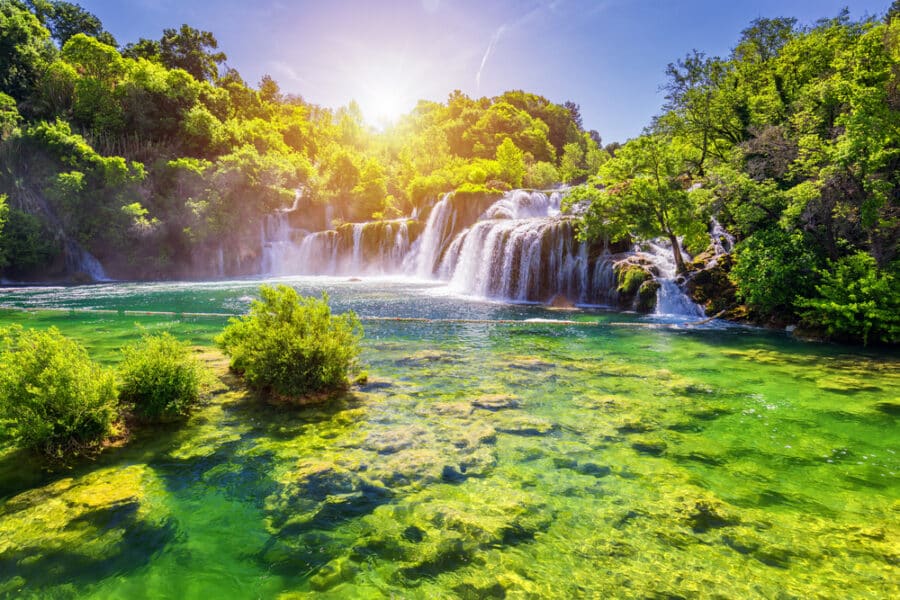
Croatia’s national parks are a haven for nature lovers and hikers. While some parks may charge a nominal entrance fee, it’s a small price for the immense natural beauty you’ll experience. Trails wind through lush forests alongside cascading waterfalls and offer stunning views – perfect for those seeking adventure and tranquility alike.
- Guide To Croatia’s National Parks
Wander Historic Towns
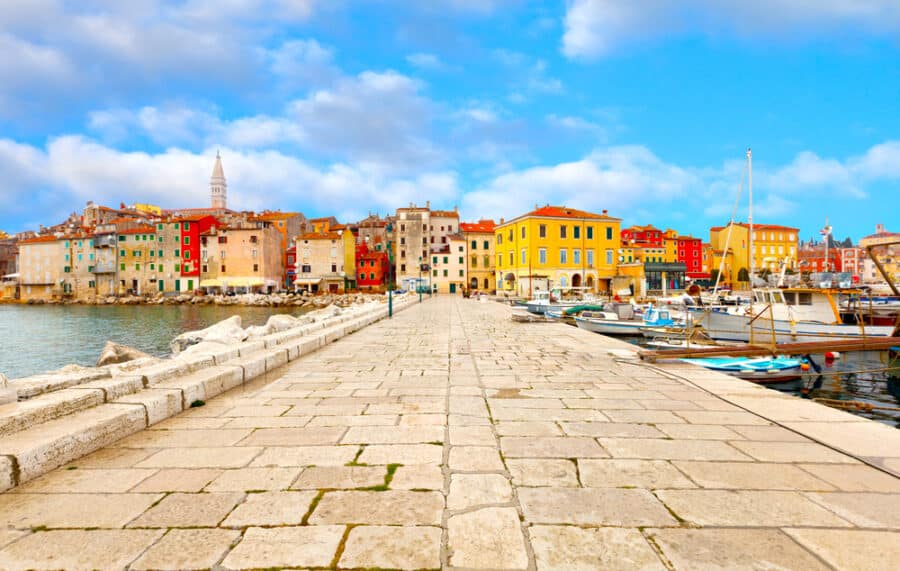
Every Croatian town has a story to tell, and exploring these historic gems is absolutely free. Meander through the winding streets of ancient towns, soak in the architectural marvels and indulge in people-watching at bustling town squares. Each town offers a unique glimpse into Croatia’s rich history and culture.
Discover Local Markets

Local markets are not only great for picking up fresh produce but also for experiencing the vibrant local culture. Browse through stalls, sample traditional delicacies, and soak in the lively atmosphere – all without spending much.
Taking Free Walking Tours In Croatia
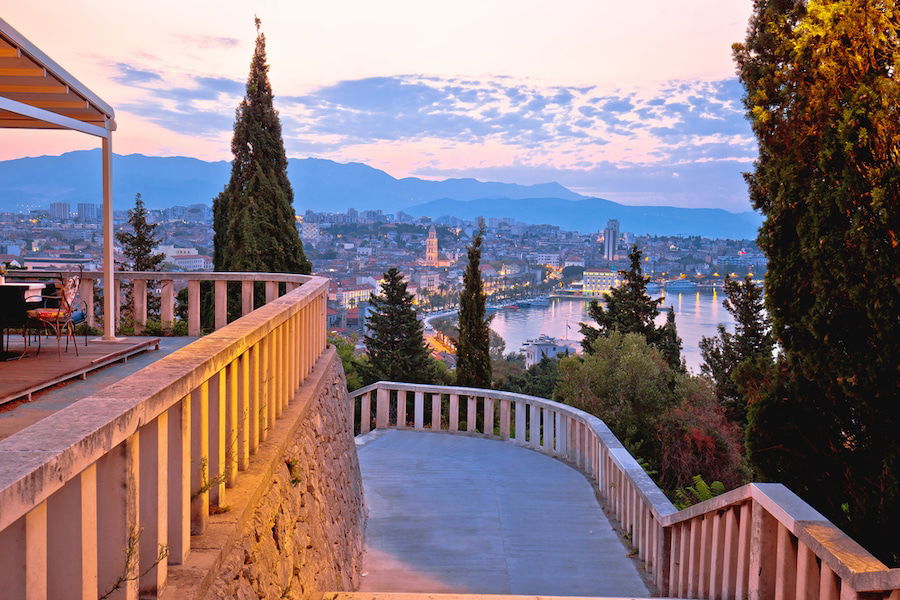
A fantastic and budget-friendly way to explore Croatia’s rich history and culture is through free walking tours. Offered in many Croatian cities, these tours are led by knowledgeable local guides who are passionate about their hometowns. While the tours themselves are free, it’s customary to tip the guide at the end, making this a great way to save money while still enjoying a high-quality tour experience.
Enjoy Free Cultural Events

Keep an eye out for free cultural events, especially during the summer months. From open-air concerts to street festivals, there’s often something happening that showcases Croatia’s rich cultural heritage.
- Events & Festivals In Croatia
Relax In Public Parks And Gardens
Croatia’s cities boast beautiful public parks and gardens, ideal for a leisurely stroll or a picnic. These green spaces provide a serene escape from the hustle and bustle of city life.
By focusing on these budget-friendly or free activities, you can enjoy the essence of Croatia without putting a strain on your finances. From its natural wonders to its historical and cultural richness, Croatia offers a plethora of experiences that don’t require a big budget.
Move This Adventure To Your Inbox & Get An Instant Freebie

No spam. Unsubscribe at any time.
Wrapping Up: Smart Budget Travel In Croatia
Traveling to Croatia on a budget is not only possible, but it can also be an incredibly rewarding experience. The key is in the planning. By thinking ahead and being strategic about your choices, you can enjoy the best of Croatia without stretching your wallet too thin. Remember, it’s the smart choices, like when to travel, where to stay, and how to get around, that makes all the difference.
As you wrap up your plans for a Croatian adventure, keep in mind a few additional tips:
Embrace Public Transport
Croatia’s public transportation system is efficient and cost-effective. Buses and trains can take you across most of the country at a fraction of the cost of car rentals or flights.
Seek Out Local Advice
Don’t hesitate to ask locals for advice on where to eat, what to see, and how to get around. They often know the best deals and hidden gems that aren’t in guidebooks.
Travel Light
A lighter suitcase not only makes your journey easier but can also save you money on luggage fees for domestic flights or buses.
Be Flexible
Sometimes, being flexible with your travel dates and plans can lead to unexpected savings. Last-minute deals on accommodations or activities can offer great value.
Prioritize Your Experiences
Decide what’s most important to you. If you’re a foodie, save on accommodation so you can splurge on meals. If history is your thing, choose cheaper dining options to afford those museum entries.
Traveling on a budget doesn’t mean missing out. It’s about making informed choices that enhance your experience. Croatia, with its rich history, stunning landscapes, and friendly locals, offers a wealth of opportunities for budget-savvy travelers.
So go ahead, plan wisely, and get ready to explore this beautiful country without breaking the bank.
- Is Croatia Expensive?
- Croatian Currency Guide
- How To Tip In Croatia
- How To Travel Turkey On A Budget
- How To Travel Greece On A Budget
- Budget Backpacking Guide To Albania
Comments (14)
Very informative and useful post! Thanks for sharing!
Great tips about nearby cities to Split!
Very informative article. Travelling on budget is a very hard. After reading this article one can easily travel on budget. thank you very much for writing this article. It will help medium status people to travel and enjoy best places in world. :)
Awesome tips! Specially for the transport, you gave great options. I didn’t know about the discount when buying tickets online!
Looking at the sailing itinerary via ferry that you posted and a few days in Zagreb to go to the park. Is it better to stay on the islands for a couple of nights at each island or go back to Split and just do day trips?
I would always recommend staying on the islands, it’s that way you get to know the island, and the people, food etc. And, of course spend less time in transit, and more time relaxing.
Do you have any locations in mind to recommend for my vacation?
Loads, look here: https://www.chasingthedonkey.com/croatia-travel-blog/
Your link to a 35 Euro discount for air b n b doesn’t work. It takes you to Justpack which is useless!
Oh no, what a mess. Sorry, try this one
Hello, Thankyou for this brilliant article. As we ended up having an expensive summer holiday last year we were unsure that we’d get to take our boys out of the UK this summer holiday but your inspirational article has given me some hope! Do you have any recommendations for a destination that would keep two teenage boys happy (10 & 13)? Somewhere out of main expensive cities and somewhere for an adventure? 😁
Glad you found it useful. If you want to explore Croatia out of the main cities, then you should head to continental Croatia. There is very cheap, and they have horse riding, lakes, biking, hiking, waterfalls, nature/national parks. Try this search on the blog to get an idea https://www.chasingthedonkey.com/?s=slavonia
is it true that prices have gone up in croatia?
YES! Croatia, like many countries, has experienced periods of inflation and rising prices and with the change over to euro it is now very different than a few years ago.
Leave a Reply Cancel reply
Your email address will not be published. Required fields are marked *
Save my name, email, and website in this browser for the next time I comment.
This site uses Akismet to reduce spam. Learn how your comment data is processed .
Subscribe To Unlock Your FREE Customizable Travel Packing List & All Our Best Tips!
Unlock Your FREE Customizable Travel Packing List!
Subscribe Now For Instant Access To Stress-Free Packing
Travel Europe on a Budget
The Savvy Backpacker
City Guides .\33 a132798-3f3b-4585-954d-7e70cf863447{fill:#231f20}
Dubrovnik price guide | calculating daily costs to visit dubrovnik, croatia.
The daily costs to visit Dubrovnik. How to estimate your travel costs for food, hostels, hotels, attractions, alcohol, and more.
City Price Guides
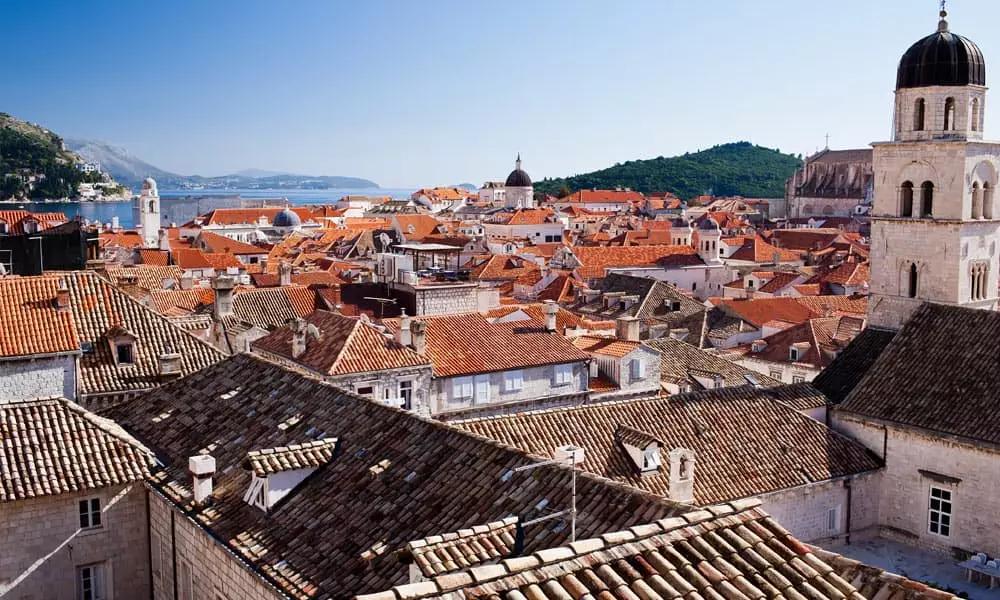
Dubrovnik’s old town is one of the most beautiful walled cities in the world so it has earned its nickname as the “Pearl of the Adriatic.” It is also Croatia’s most popular destination so it’s more expensive than many people assume. Despite the costs, you can still visit the city without spending a fortune if you try. However, George Bernard Shaw once said that “those who seek paradise on Earth should come to Dubrovnik and find it”—so maybe it is worth splurging a bit.
In this travel price guide for Dubrovnik, we’ll outline the estimated travel expenses for food, accommodation, attractions, alcohol, and other things that you’ll experience when budgeting your visit to Dubrovnik.
This Dubrovnik Price Guide is part of our City Price Guide Series where we break down the travel costs of Europe’s most popular cities.
Average Daily Costs to Visit Dubrovnik
For budget-minded travelers, it costs around $50-$80/day to visit Dubrovnik. These prices are based on what you’ll need to visit the city comfortably as a budget traveler. If you want to upgrade your accommodations then you’ll want to add another $50-$100/night to your travel budget. These prices also don’t include things like big nights out at the bar/pub, club entry fees, souvenir/clothing shopping, tours, random purchases, nicer food, etc. Don’t forget to budget extra for those “non-essentials.”
Croatia’s currency is called the Croatian Kuna but I’ve converted some of this guide into US Dollars for simplicity. Visit XE.com to check the current exchange rate.
Cost of Budget Travel in Dubrovnik: 410hrk (Approx. $66)/Day
- Attractions: 80hrk (one paid attraction + any free sights)
- Breakfast: 20hrk
- Lunch: 60hrk
- Dinner: 110hrk
- Treat (dessert/beer/wine): 20hrk
- Transportation: 0
- Accommodation (Hostel): 200hrk
Cost of Frugal Travel in Dubrovnik: 290hrk (Approx. $45)/Day
- Attractions: 50hrk (free walking tour + visit one of the free sights)
- Breakfast: €0 (free hostel breakfast)
- Lunch: 30hrk (street food or takeaway shop fare)
- Dinner: 60hrk (make your own meal in the hostel or grab something cheap)
- Beer: 8hrk (chill out at the beach and have a cold one)
- Transportation: 0 (walk)
- Accommodation (Cheap Hostel) : 140hrk
Dubrovnik Attraction and Museum Prices
Luckily, the attractions in Dubrovnik are fairly affordable, and you can always spend the day on its beautiful beaches or wandering the ancient streets.
- Dubrovnik Ramparts : 150hrk ($24)
- Mount Srdj Cable Car : 85hrk one-way/150hrk round-trip ($13/$24)
- War Photo Limited (museum): 40hrk ($8)
- Rector’s Palace : 100hrk ($16)
- Franciscan Monastery & Museum : 30hrk ($5)
- Walking & Tours : Free-400hrk
Dubrovnik’s geography lends itself to water tours: companies offer kayak and boat tours from the coast, which provide a unique perspective on the city. Sea kayaking along the Dalmatian Coast will run 400hrk ($60) for a half-day tour.
Dubrovnik Food Prices
Dubrovnik’s cuisine is heavily influenced by Italy so you’ll find seafood and pasta as culinary staples. Black rice, risotto, and pasta are common–colored by squid or cuttlefish ink–and often accompany fish. Mussels, ham, and cod round out many meals. The old town, while offering an ideal location to enjoy a meal, is an expensive place to eat, so you’ll have to venture outside the old town for more affordable meal options.
Budget Breakfast Prices in Dubrovnik: Free – 40hrk
- Many hostels will offer a free simple breakfast that normally consists of cereal, bread/croissant, and maybe milk, coffee, tea, or juice (some hostels will offer more and some less). Hotel breakfasts tend to be overpriced, so skip those in most cases.
- Coffee and a pastry will run 15hrk-30hrk
Budget Lunch Prices in Dubrovnik: 30-60hrk
- Super budget travelers can make a super cheap lunch of bread, cheese, and fruit from any grocery store for a few euros.
- Vegetarian and Indian restaurants offer a full meal for 30hrk-40hrk. Especially recommended is Nishta , a small vegetarian restaurant.
- Pizza will run 40hrk-60hrk.
- Kebab or a burger takeaway-away stand will run 30hrk-45hrk.
- Consider the farmer’s market on Gundelic Square to pick up cheap, fresh ingredients for lunch.
Budget Dinner Prices in Dubrovnik: 60-150hrk
- Pretty much all the options from the ‘Budget Lunch’ section above will also apply for dinner.
- Sporki makaruli, or dirty maracroni, is a Croatian traditional meal: pasta with diced beef (or veal), onion, goat cheese, and red wine. Expect a dish at a restaurant to cost 70hrk-100hrk
- Zelena menestra (green stew) is a ham and bacon stew served with cabbage, kale, and potatoes.
- Brodetta (fish stew) is another traditional dish. (Look for Dundo Maroje, a restaurant in old town that specializes in traditional Croatian food).
Drinks and Alcohol Prices in Dubrovnik
- Expect to pay 18hrk-20hrk for a beer out.
- At a grocery, beer runs 7hrk-8hrk, and a bottle of wine about 35kn.
Dubrovnik Transportation Prices
Dubrovnik’s public transit system is serviced by buses that run city and suburban routes. One of the great things about Dubrovnik is walking through the gorgeous streets, so you may rarely travel via public transport. However, if you’re staying outside of the old town, the bus service is frequent and reliable.
- Single Ticket : 15hrk
- 24-hour card: 30hrk
- Airport transit from city center via bus: 28hrk one-way on lines 11, 27, 38
Dubrovnik Hostel, Hotel, & Rental Apartment Prices
Dubrovnik’s old town is compact so accommodation options are limited—especially in the summer. You may have to stay outside the old town to find more options—but public transportation into the old town is good so it’s not a major issue.
Hostel Prices in Dubrovnik: 130hrk-340hrk/night ( $22-$55)
You should budget about 130-340hrk/night ($28-$40) per person for a decent hostel — although many hostels raise their prices on the weekend. Remember, these prices are for a bed in a shared dorm room. If you want a private room you should expect to pay around $60-$10 for a private room in a hostel).
We book our hostels through Hostelworld so check your dates to get a better idea of current prices.
Budget Hotel Prices in Dubrovnik: 400hrk-900hrk/night ($75-$130)
A decent budget hotel that is in the city center will cost around 500hrk / night ($80). You can find cheaper hotels if you want to stay farther away from the center of the city or if you don’t mind staying in a junky place.
We suggest checking out Booking.com to see hotel prices for your dates since they’re always changing.
Rental Apartment Prices in Dubrovnik: 445hrk-950hrk/night ($90-$150)
Rental apartments can be a good option for large groups or travelers who want a little more space (and a kitchen). On the other hand, you may also have to deal with an inconvenient check-in process and a few other issues common with rental apartments. Additionally, many rental apartments charge a cleaning fee and service fees so it adds a bit extra to the cost — especially for short stays. That’s why we prefer hotels for shorter stays but longer stays are good for rental apartments. Airbnb is always popular but you can sometimes find cheaper/better options on our list of Airbnb Alternatives .
LEARN MORE ABOUT EUROPE TRAVEL COSTS
Check out our guide on How Much It Costs To Backpack Europe to learn more about budgeting your entire trip (including many more city price guides).
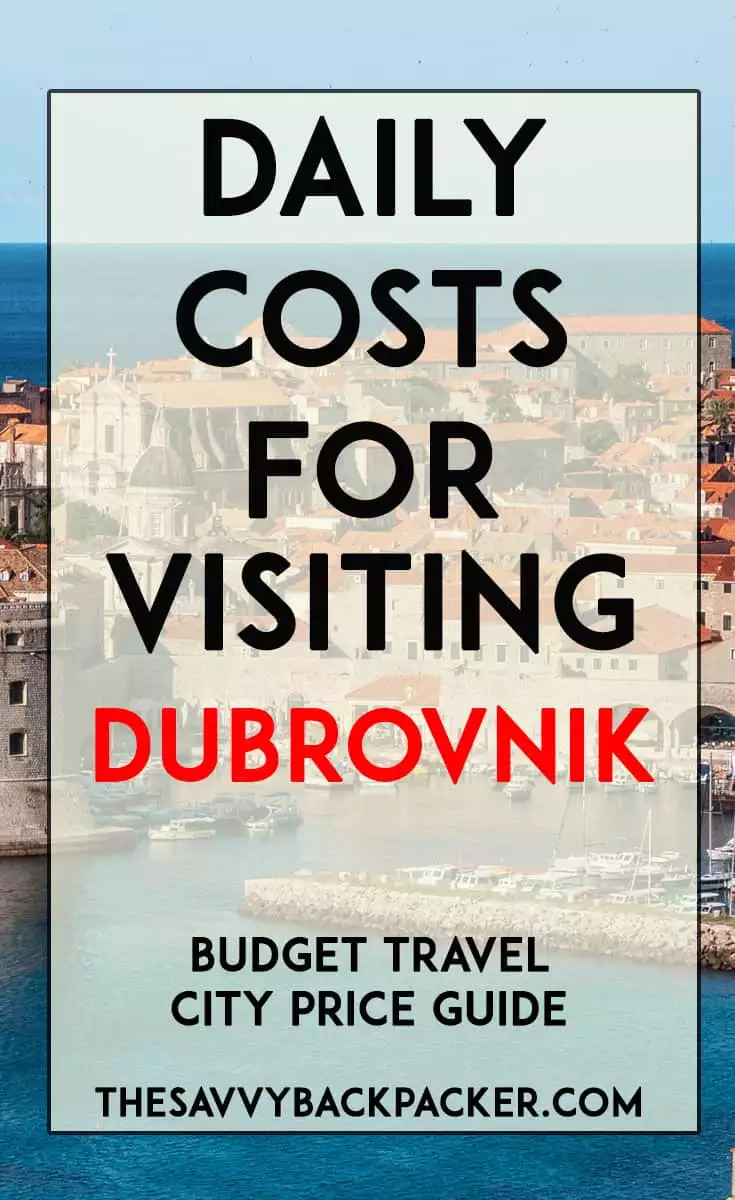
- Recent Posts
- Backpacking Europe Packing List — My Europe Travel Packing Guide - April 6, 2024
- Best eSIM For Europe Travel | Everything You Need To Know About European Prepaid eSIM Data Plans - March 24, 2024
- Holafly eSIM Review | Testing The New eSIM Data Plan from Holafly - March 3, 2024

No Funny Business
The Savvy Backpacker is reader-supported. That means when you buy products/services through links on the site, I may earn an affiliate commission—it doesn’t cost you anything extra and it helps support the site.
Thanks For Reading! — James
Questions? Learn more about our Strict Advertising Policy and How To Support Us .
Related Reads
Copenhagen price guide | calculating the daily costs to visit copenhagen.
The daily costs to visit Copenhagen. How to estimate your travel costs for food, hostels, hotels, attractions, alcohol, and more.
Stockholm Price Guide | How Much It Costs To Visit Stockholm, Sweden
Calculating the daily costs to visit Stockholm. How to estimate your budget for food, accommodation, attractions, alcohol, and more.
Naples Price Guide | How Much It Costs To Visit Naples, Italy
The daily travel costs to visit Naples, Italy. How to estimate your budget for food, hostels, hotels, attractions, alcohol & more.
Riga Price Guide | Calculating The Daily Costs To Visit Riga, Latvia
The daily costs to visit Riga. How to estimate your budget for food, accommodation, attractions, alcohol, and more.
City Guides
Choosing travel insurance, travel packing lists, budget travel newsletter.
The best budget travel tips sent straight to your inbox.
Join My Journey
Europe travel tips, advertising & privacy policies.
TheSavvyBackpacker.com is a participant in the Amazon Services LLC Associates Program, an affiliate advertising program designed to provide a means for sites to earn advertising fees by advertising and linking to amazon.com.
© 2010 - 2024 The Savvy Backpacker
Website Design by FHOKE
- Philippines
- New Zealand
- Netherlands
- United Kingdom

The mesmerizing nation of Croatia is the jewel of the Adriatic and the best of both worlds when it comes to European getaways. With the Mediterranean climate, mountainous scenery, and azure waters of Western Europe, but the slow-pace, southeastern rhythm of the Balkans, it has something for everyone.
Heritage sites, raging nightlife, pristine beaches, and even waterfalls, it can all be found along Croatia’s 1,000 miles and more of Adriatic coastline . Holidays are often worth the splurge, but with so much to offer, you’re probably wondering, is Croatia expensive?
It might not be as budget-friendly as Eastern Europe or Southeast Asia’s backpacking trail, but Croatia can definitely still be traveled on a shoestring and we’re here to show you how. From getting there to where you’ll stay and everything in between, our guide looks at the real cost of visiting Croatia in 2022. Let’s get into it.
Table of Contents
The average cost of a holiday to Croatia
Europe is on everyone’s travel bucket list, and if you can’t decide between the west and the east, Croatia is the perfect choice sitting at the crossroads of the southeast. The dreamy summer retreat is dotted with coastal towns and heritage-packed cities just waiting to be explored. Once a notoriously budget destination, you’re probably interested in just how much it costs to travel to Croatia now that its popularity is soaring?
Find A Travel Buddy!
Like in any country, the sparkly Croatian islands are always going to cost more that the mainland. Pair importation costs with heightened popularity and you have the recipe for budget-blowing prices, but Croatia still has no shortage of cheap breaks, and the big cities like Split and Zagreb offer a bit of everything.
Depending on where you go, you can get by on around €45 to €105 per day, that’s $48 to $110 USD, discounting the occasional splurge. However, seeing as this range is pretty large, we’re going to look at how these prices break down and where you can get the most bang for your buck in Croatia.
Before we get started, check out some of the general daily expenses you can expect in the Balkan country, no matter where you go:
Is Croatia expensive to visit? Getting There
The first thing to consider before booking any holiday is how you’ll get there, and the price all depends on where you’re coming from. With a well-connected mainland that shares borders with five different European countries, and that is in reaching distance of countless more, getting to Croatia need not be too difficult or expensive if you’re on the continent.
Even so, the quickest and easiest way to reach Croatia from most countries is by plane. The nation has five main international airports located in Zagreb, Pula, Zadar, Split, and Dubrovnik which connect tourists to different parts of the country.
These ports handle the majority of scheduled and charter flights from Europe and North America and you shouldn’t expect huge discrepancies in airline prices between each one. That said, if you’re planning to visit the islands, you’ll be better off flying into one of these airports rather than the terminals on islands like Rijeka and Brac as these can be more expensive to reach. In this case, a combination of taxis and ferry transfers depending on where your final destination is will be cheaper.
If you are coming from one of the border countries, you can easily drive into Croatia or travel by train. From Trieste in northeast Italy, you can reach beautiful Pula on the tip of Croatia’s Istrian Peninsula in just an hour and a half by car, even though you need to cross through a portion of Slovenia to do so. The fastest public bus traveling this route takes just two hours and costs as little as €13 ($13.70) each way.
You can also get from Ljubljana, Slovenia’s capital, to Zagreb, in two hours and 20 minutes by rail, with prices starting from €25 ($26.50) one way. This service runs seven times a day, or you can journey from Budapest in Hungary to Zagreb in just over six hours, costing €40 ($42) each way on average.
From London to Zagreb non-stop, you can expect last-minute airfares of less than $200 return, which are slightly more if you’re heading to Dubrovnik or Split which average at around $250 return. Booking in advance and outside of peak seasons will see these costs halve.
From New York, you can to Croatia’s capital and back for less than $800, while Split and Pula will be closer to the $950 mark. Due to airline routes, it could be cheaper to fly from NYC to Zadar with one-stop off than any other airport in the country. Averaging less than $700 and taking just two hours longer, consider changing your port of entry even if it means making the two-hour drive down the coast to your final destination in order to save a few hundred dollars.
Accommodation prices in Croatia?
After travel, your next big concern, and expense, is where you’re going to stay. Croatia is a vast country and has it all when it comes to accommodation. Where you decide to situate yourself will have the biggest effect on the price, but you can still find budget lodgings like hostels and shared homestays on even the priciest islands.
With variety comes great deals so booking far in advance and outside of the peak season promises the best return on your accommodation. Mainland villages and more remote stays will be your cheapest options, but you don’t have to sacrifice atmosphere just to save money in Croatia. Choosing a buzzing seaside town with connections to the islands but easily accessible on the mainland will provide the best of both worlds.
Dubrovnik and Split are the most popular coastal cities and they’re brimming with accommodation of all shapes and sizes. Hostels in Dubrovnik start from around $30 a night and you can get a room in three-star accommodation for $80. Hotels average at around $123 a night while most vacation rentals will start at the $100 mark but could sleep four to six people.
Split with its party atmosphere offers even cheaper budget accommodation, with a bed in a hostel dorm starting at around $25, while hotels are on the pricier side at around $128 a night. Vacation rentals average at $188 and this is much the same on the nearby islands of Hvar and Korčula, with the latter having a little less variety due to its sleepy vibe.
No matter your budget, check out some of these hotels in Croatia to suit every traveler:
Hotel Bozica Dubrovnik ($) – Four-star accommodation overlooking the bay with breakfast included from $75 a night.
Bed & Breakfast Pino ($) – Save money by cooking at home with these self-contained sea-view apartments on the waterfront in Podstrana starting from $60 a night for two adults.
Mobile Home Pine Adira Camp Soline ($) – Camp in luxury among the Mediterannean pines of rural Biograf for $115 a night – sleeps up to six.
Hostel Antique ($$) – Laidback hostel vibes in clean and quaint dorms in the center of Pula City for $50 a night.
Whole Wide World Hostel ($$) – A gem on Zagreb’s party hostel scene located in the center of Lower Town. Private twins start from $70 a night with breakfast included.
Heritage Palace Varos ($$) – Located in a centuries-old stone building in central Split with period features and four-star service, this hotel is just 350 yards from the beach. Private doubles start from $90 a night.
Is Croatia expensive for food and drink?
Just like everything else, food and drink in Croatia doesn’t have to break the bank but what you eat can make a difference. Places like Hvar and Brac Island are known for their upscale restaurants with harbourfront seafood restaurants and fusion cuisine. In these sought-after locations, you can expect a two-course dinner excluding drinks to come to around $80. However, a similar dinner in a mid-range restaurant in Split and Dubrovnik could cost half as much.
You can get by spending around $30 a day on food on a budget, but this means eating in small local restaurants and buying your own groceries to cook at home. While holidaymakers who want to eat out and sample as much seafood and different cuisine as possible should expect to spend closer to $100 a day on food and drink.
When it comes to alcohol, you can usually find a pint of beer for around $2 at a local bar or beach restaurant, but closer to $4 for an imported brand name. A glass of house wine or beer in a restaurant will cost around $5 but you can buy a bottle of local vino from the supermarket for the same price. Alcoholic drinks come at a premium on the upscale islands of Korcula and Hvar, as well as in nightclubs in the party town of Split. Still, cocktails shouldn’t set you back more than $8-12 wherever you go.
When is the best time to visit Croatia?
Croatia benefits from a temperate Mediterranean climate with seasonal weather meaning the whole country experiences hot, dry summers and mild, rainy winters. The further south, the hotter it is, all year round. Still, the best time to go to Croatia is between June and August if heat is what you’re after with average daily maximums of 85 degrees Fahrenheit in July and lows of 70.
However, this means the whole country is at its most crowded throughout these months, and accommodation, tours, and even food prices can skyrocket with the increased demand. So when it comes to saving money, consider visiting Croatia in May and June or September and October, especially in the south when the weather is still warm and sunny with plenty of blue skies.
You can expect highs in the 80s until the end of September and little rainfall, giving Croatia an endless summer feel. Low season discounts and fewer crowds make it all the more appealing.
Croatia on a Budget: Our Top 7 Money-Saving Tips
It’s not as cheap as it once was, but Croatia is definitely still a destination for budget travelers. Check out our round-up of the best money-saving tips if you’re visiting the Adriatic coast this year.
- Visit in the shoulder seasons – This is always an obvious one when it comes to getting great deals but even more appropriate for Croatia as it has some of Europe’s sunniest islands. April to June and September to November promise fewer crowds, cheaper costs, and warm enough seas for a dip.
- Use public transport – There’s no reason to rent a car just to travel down to the islands. Use the bus transfers, trains, and pedestrian ferries (they’re cheaper) to get around Croatia and even travel to and from other countries.
- Eat local – Croatia doesn’t have its own native street food per se, but the local markets and even supermarkets are a great alternative to having a sit-down meal every time. Snack on fruit and baked goods, and even buy your alcohol locally to avoid restaurant markups.
- Invest in a vacation rental – Outside hostels, an Airbnb is your best bet for saving money because you can cook, clean, and look after yourself at home. Better yet, find a hostel with a communal kitchen and you’ve hit the jackpot.
- Book in advance – Early bookings will get you the best accommodation in the best locations before all the good deals are snapped up. Shop using a VPN or private browser to stop the prices from increasing every time you revisit the site.
- Mix and match flights – Rather than booking returns with the same airline, check if you can mix and match your outbound and inbound journey as this can sometimes save a fortune. And if you’re coming from further afield, sometimes opting for the option with more stop-offs can be cheaper than flying direct – if you don’t mind the long haul.
- Get a multi-currency bank account with an online bank – Banks like Revolut, Wise, and Monzo can help you save massively on ATMs fees, as much as 10 percent, often offering free or lower fees for withdrawals. Croatia remains a predominantly cash country so being equipped will help. Always bill to the destination’s currency when you’re at an ATM too.
Is Croatia Expensive? Our Verdict
So there we have it. It’s changed a lot in recent years with increased popularity and allure, but there is no reason for rising costs from inflation to put a dampener on your dreams of traveling to Croatia. Whether you want the heritage and scenery of the Med at half the price, or you’re looking for a coastal spot to add to a European backpacking adventure, Croatia always fits the bill. It’s easy to splurge when you’re on holiday, but with our tips, the crossroad country of Western and Eastern Europe won’t break the bank.
Destinations
- North America
- South America
- Group Tours
- Cookie Policy
- Privacy Policy
- Terms & Conditions
© 2022 Journeying The Globe. All Rights Reserved.
Got a Travel Question?
Ask questions, get inspired, and plan your next adventure with us! Join our free Facebook group for travelers and connect with a global network of passionate explorers.
JOIN FOR FREE
Travel Costs & Prices in Croatia
- Music & Dance
- Architecture
- National Holidays
- Why Croatia?
- From Slovenia
- Accommodation
- Best of Croatia
- Dalmatian Highlights
- Island Hopping
- Istrian Archaeology
- Parks & Heritage Sites
- Mistakes to Avoid
- Travel Insurance
- Border Formalities
- Electricity
- Opening Hours
- Plitvice Lakes
- Kvarner Coast
- Best Islands
- National Parks
- Nature Parks
- Heritage Sites
- Horse Riding
- Rock Climbing
- Windsurfing
- Solo Travel
- Family Travel
- LGTBQ Travel
- Romantic Spots
- Ask a question
- Consultations
- Advertising
- Privacy Policy
- Search Site
- Find Hotels
With the tourist boom that Croatia has undergone the last few years, there hasn't been much incentive to keep prices down especially for hotels. Big destinations such Dubrovnik and Hvar have seen the steepest hikes but hotel prices have been creeping up everywhere. Yet, Croatia still offers good value for money in comparison to other Mediterranean beach destinations especially if you avoid July and August when prices are at their highest.
But remember that Croatia is much more than beaches and islands ! Wander inland a little to less-travelled spots such as national parks and nature parks and you'll be surprised by how affordable prices are. See more tips to travel Croatia on a budget.
Accommodation Prices
Except in Zagreb and some five-star hotels, accommodation is priced according to season. The most expensive season is a six week period beginng around mid-July and ending at the end of August. June and September are less, April, May and October are cheaper still and the rest of the year is a real bargain. See more on when to go to Croatia.
Zagreb and Dubrovnik are the most expensive destinations, followed by Istria , Kvarner and Dalmatia .
In high season, expect to pay
Remember prices are up to 40% lower off-season! See more on getting good deals on Croatian accommodation
Private accommodation is a most affordable option with prices as low as €25-35 per person. See more on private accommodation in Croatia.
Hostels cost about €25 to €30 per person. It's a good deal if if you're travelling alone since private accommodation is usually doubles only. Some of the hostels in Croatia are truly deluxe. See the 10 best hostels in Croatia or how to choose a Croatian hostels.
Meal Prices
Meals are reasonable and good-quality in Croatia. You can get a pizza for €4 to €6 or a simple plate of pasta or risotto for around €10 . Simple meat dishes run €10-12. Fish is much more expensive and priced by the kilo. It can run from €50-60 per kilo. An average portion is about 250g. Calamari is cheaper and runs from around €12-16 a portion.
Of course the above prices only apply to good, local restaurants. There are now a few restaurants aiming for the foodie crowd where fusion rules and prices are much higher.
Transport Prices
Bus Getting around Croatia by bus is highly economical; the average inter-city bus fare is €4 to €4.60 per hour. See more on travelling Croatia by bus.
Ferries Local ferries are cheap for passengers (around €4 to €5 is the average fare) but taking a car can get pricey. For example, a passenger going from Split to Stari Grad (Hvar) pays only €3.60 but the car is another €16.80.
Ferry prices are also higher in the summer but bus prices stay the same. See more on ferries in Croatia.
Trains Trains in Croatia are slightly more expensive than buses but still reasonable compared to other European countries. Find out more on taking trains in Croatia.
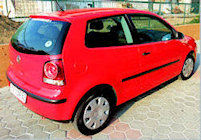
Compare car rentals
Rentalcars
AutoEurope
EconomyCarRentals
Cars Your major expense is likely to be renting a car in Croatia. After that, there's the cost of fuel (currently about €1.20 per litre for Eurosuper 95) and tolls which are not too expensive (€21 from Zagreb to Split). See more on driving in Croatia.
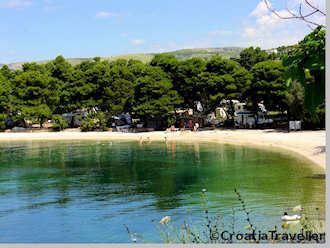
Join the Croatia Traveller Group
Recommended Experiences
Questions? Comments?
Back to Top
©CroatiaTraveller 2005-2024 All rights reserved

COMMENTS
How much does it cost to travel to Croatia? You should plan to spend around $105 (kn721) per day on your vacation in Croatia. This is the average daily price based on the expenses of other visitors. Past travelers have spent, on average for one day: $32 (kn219) on meals; $13 (kn92) on local transportation; $107 (kn738) on hotels
Here are some of the typical transportation costs you can expect to run into while in Croatia: Bus from Dubrovnik to Split: €22,10. Bus from Zagreb to Zadar: €11,90. Bus from Zagreb to Plitvice Lakes: €14,90. Bus from Zagreb to Pula: €26,20. Ferry from Dubrovnik to Hvar: €45. Ferry from Dubrovnik to Brac: €45.
Transportation: €5-30 / day. Food: €20-50 / day. Activities: €5-25 / day. Entertainment: €5-20 / day. All in all, you can easily visit Croatia with a budget of about €55-275 per day if you find some ways to cut costs on some days. Make sure you also factor in the cost of a travel insurance policy.
The ultimate travel guide to Croatia with tips on what to see, accommodation, costs, ways to save, transportation, and more. ... Average Daily Cost Backpacker. 130. 70. 25. 50. 275. Mid-Range. 350. 250. 50. 150. 800. Luxury. 550. 425. 250. 375. 1,600. Croatia Travel Guide: Money-Saving Tips. Expenses in Croatia can add up quickly, especially if ...
For accommodation, as with any other travel expenses, it's worth shopping around. ... Our daily travel expenses in Croatia were USD54.59 / EUR48.26 per person per day, slightly above our general budget of USD50. Category ... We wrote this Croatia travel cost guide based on our own peronal experiences.
A trip to Croatia for one person usually costs between $42 and $241 per day and $84 to $483 for two people. This is a wide range of costs, and the daily average per person from our data is $103 (kn721) per person. This average includes food, accommodation, sightseeing, and local transportation expenses contributed from other travelers.
Expenses Estimated Daily Cost Estimated Total Cost; Average Airfare: N/A: $600-2000: Accommodation: $10-100: $140-1400: Transportation: ... ESTIMATED EXPENSE: $10-$350 USD per day. As we mentioned, Croatia travel is becoming very popular amongst travelers. ... What we think an average Croatia travel budget should be: $50-$100 USD per day.
A week in Croatia costs around $2,400 for two people: Average Accommodations cost: $50 a night. Average Flight Cost: $700 per person. Food, Drink & Activities: $75 per person, per day. Transportation: $20 a day. Total Cost: $2,400. Of course, there are a bunch of factors that will affect your individual costs.
It depends on your travel style and spending habits, but a moderate budget could range from €1000 to €1500 for a week for accommodation, meals, entertainment, and some activities. If you're on a backpacker budget, it's possible to visit the country for about €500 a week.
Average Couple's Trip. The average cost for a couple to visit Croatia for a week is $1,816-$4,044 ($259-$578 per day) Food, Travel, and Sightseeing: $70 to $141 per day for two people's daily expenses. Flights: $996 to $2,553 for economy. Lodging: $55 to $72 per night for one 2 or 3-star hotel room. or $69 to $84 per night for a 1-bed ...
Hostel dorm bed: €35 per night. Basic room for two: €75 per nigh. Self-catering apartment for two: €95 per nigh. Ticket on a city bus: €0.50-2.90. Coffee: €1.60-3. Sandwich: €4. Dinner for two: €68 for two courses. Beer at the bar: €4 for a half-liter of Croatian draft beer. Breakfast slice of burek: €3.30.
The balance worked out well: our travel budget for Croatia ended up being right on target. We spent 13 full days in the country, averaging a total Croatia trip cost of $107.12/day, or $53.56 per person, per day. This added up to a total cost of $1392.61. All expenses are listed in USD unless otherwise noted, and, as usual for our travel budget ...
The same happened to prices of the meals in Croatia, and to smaller extent to excursions, car rental, public transport, and parking fees. On average, if you travel in high season, expect your 7-day trip to Croatia to cost 2.000 € for a solo-traveler, 3.650 € for a couple, and 6.300 € for a family of four.
Confirm. On average, the cost of living in Croatia in 2024 is 20% less than in the United States (USA). The graphic below shows the percentage of variation between prices United States in in the United States (USA) and United States by types of expenses: % Price variation between Croatia and United States in 2024 Restaurant Hotel Food Transport ...
Day trips: Expect to pay around €40 per person for a round-trip ticket. Local transportation: Croatia's cities and towns are generally very walkable, otherwise public transportation such as trams and buses are an economical choice, with a one-way ticket typically costing around €1.50.
For example Split to Supetar ( Brac island) ferry running 50 minutes (in high season 6 to 8 times daily) will cost you 23 Kuna (Euro 3.00) for passengers, but for vehicles not exceeding 1,80 m in height you will pay Kuna 106 (Euro 13.87).
Don't overlook street food and local bakeries for quick, tasty, and inexpensive meals. Items like ' burek ' or sandwiches are perfect for on-the-go eating and offer a cheap yet satisfying option. 32. Drink Croatia's Tap Water. One often overlooked but significant way to save money in Croatia is by drinking tap water.
Despite being such a coveted place to visit, Croatia still offers an outstanding value. In fact, travel cost indexes have ranked it cheaper than 29 other European countries. It's much less expensive than the Scandinavian nations, France, the U.K., Spain, Italy, and even Greece. The official local currency has been the Croatian Kuna, however ...
Average Daily Costs to Visit Dubrovnik. For budget-minded travelers, it costs around $50-$80/day to visit Dubrovnik. These prices are based on what you'll need to visit the city comfortably as a budget traveler. If you want to upgrade your accommodations then you'll want to add another $50-$100/night to your travel budget.
From Trieste in northeast Italy, you can reach beautiful Pula on the tip of Croatia's Istrian Peninsula in just an hour and a half by car, even though you need to cross through a portion of Slovenia to do so. The fastest public bus traveling this route takes just two hours and costs as little as €13 ($13.70) each way.
See more budget tips. In high season, expect to pay. €350-450 for a double in a luxury five-star hotel, €200-400 in a four-star hotel, €85-175 for three star hotels. €45-60 in the two-star places. Remember prices are up to 40% lower off-season! See more on getting good deals on Croatian accommodation.